Patek Philippe
Patek Philippe World Time: dive into the complete history
Patek Philippe
Patek Philippe World Time: dive into the complete history
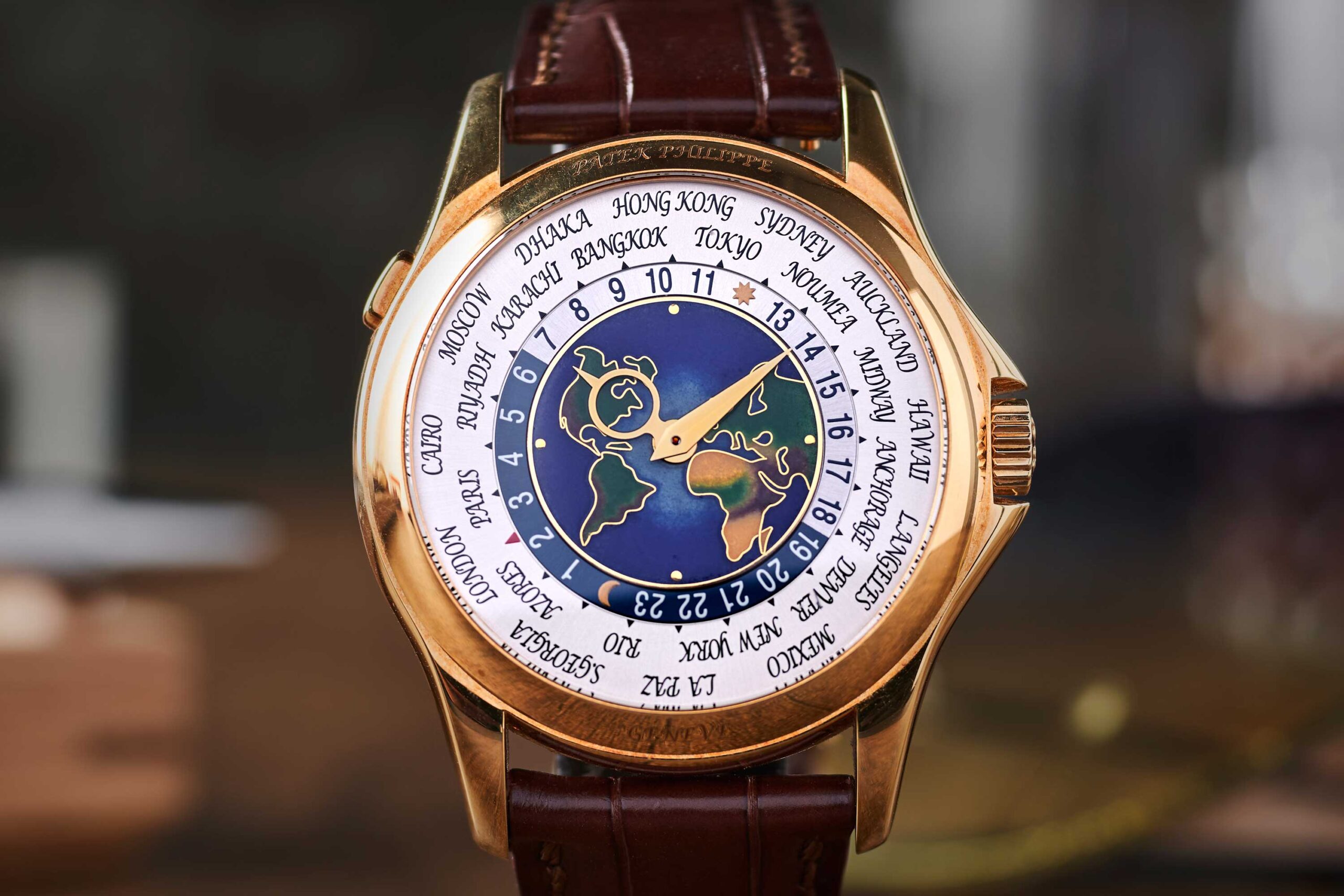
Wei Koh’s Patek Philippe reference 5131 cloisonné enamel World Time watch (©Revolution)
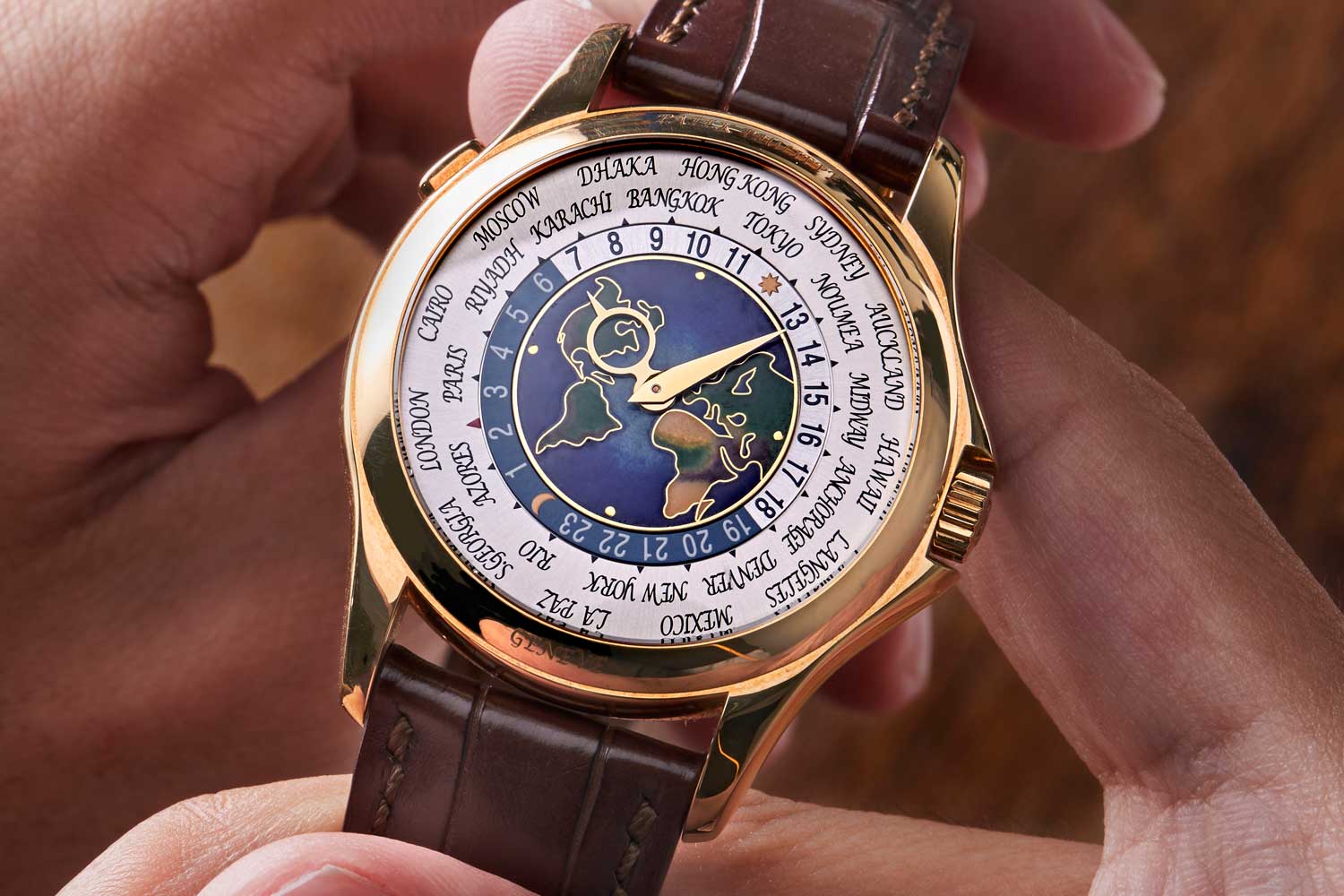
For Wei, this World Timer watch has been a chalice of renewed hope to once more live the glorious opiatic maelstrom of transcontinental travel. (©Revolution)
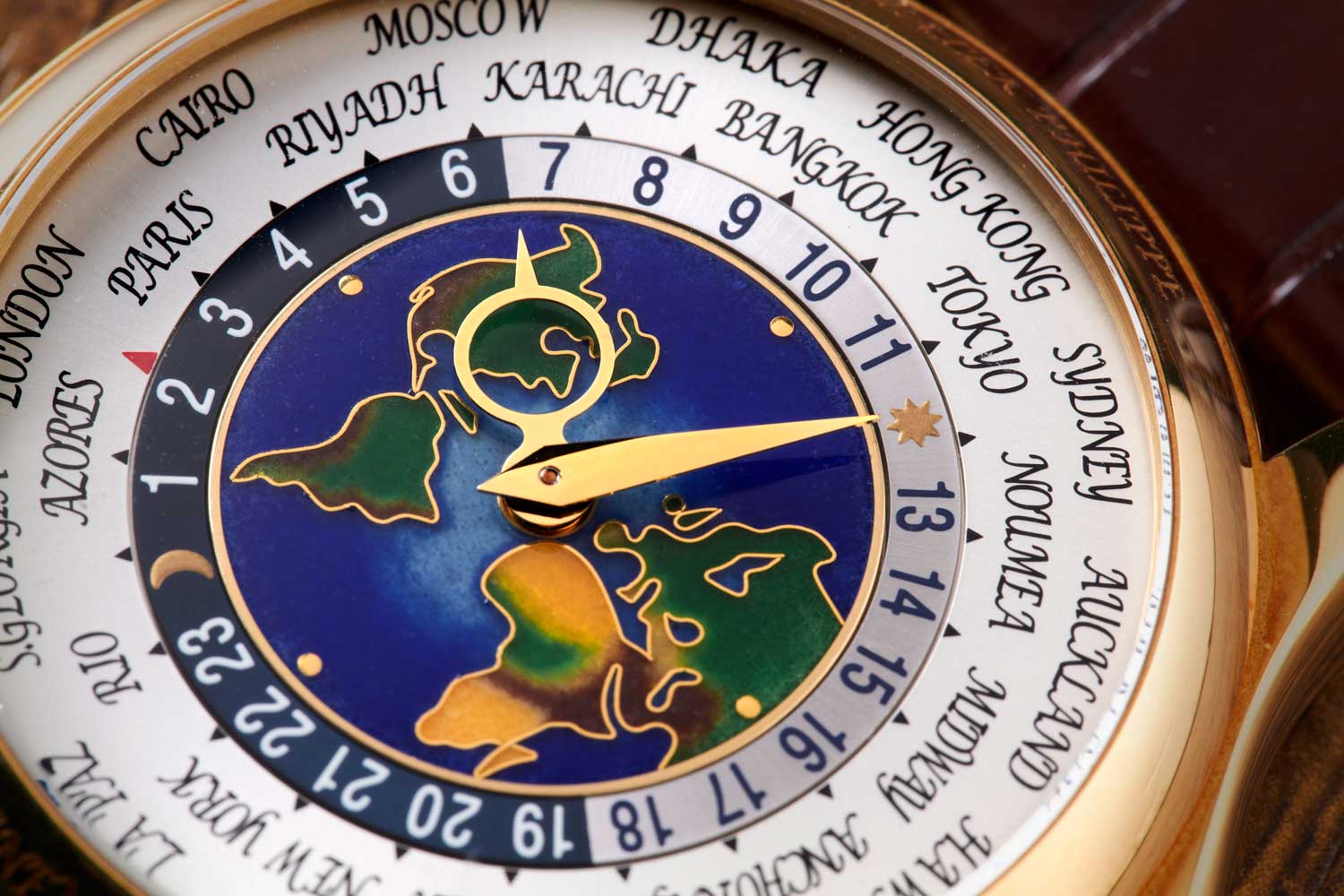
The ref. 5131 has no real indexes beyond small applied gold dots at the cardinal points, so it alludes to the time with an old-world, gentlemanly elegance. (©Revolution)
Patek Philippe World Time is a journey through time and taste in Paris, New York, and Tokyo
As I cast my eyes around the famous city disk that frames the 24-hour ring and enamel dial, a Proustian flood of memories came rushing back to me that was associated with these beautiful names: Paris, New York, Tokyo. I could almost smell the signature charcoal aburi otoro at Sawada Sushi in Ginza, or taste the boeuf bourguignon at Chez Fernand on Rue Christine. With them came a renewed surge of desire to once again venture to these extraordinary capitals, to feel each evening unfold with the promise of limitless adventures. And it dawned on me that my World Time reference 5131 is not just a watch in the time-telling sense, but since it has no real indexes beyond small applied gold dots at the cardinal points, it also alludes to the time with an old-world, gentlemanly elegance.

Wei Koh with Eleonor Picciotto, founder and editor of The Eye of Jewelry, at The Gritti Place in Venice.

Venice in winter, solace away from home (©Revolution)
The Patek Philippe World Timer: A timeless symbol of unity and triumph
I feel that this is, and always has been, the spirit of the Patek Philippe World Timer. It has never been a watch that displays too much information, that shows daylight saving time or even zones with 30-minute discrepancies, a notable exception being the 1937 ref. 542 HU, which has a bezel that displays Honolulu with a red triangle as a half time zone, between Alaska and Samoa zones. Rather, it is a work of art; a majestic symbol of a world united by 24 time zones that transcends language, race, religion, and reminds us all that we live together on one planet. It is a watch that should be given to world leaders on the occasion of monumental peace accords or in moments of historic reunification. Mikhail Gorbachev deserves one for letting the Berlin Wall fall. F.W. de Klerk deserves one for freeing Nelson Mandela and effectively ending apartheid in South Africa. And Nelson Mandela deserves one for the 27 years he spent in captivity, and for forging a modern multicultural democracy.
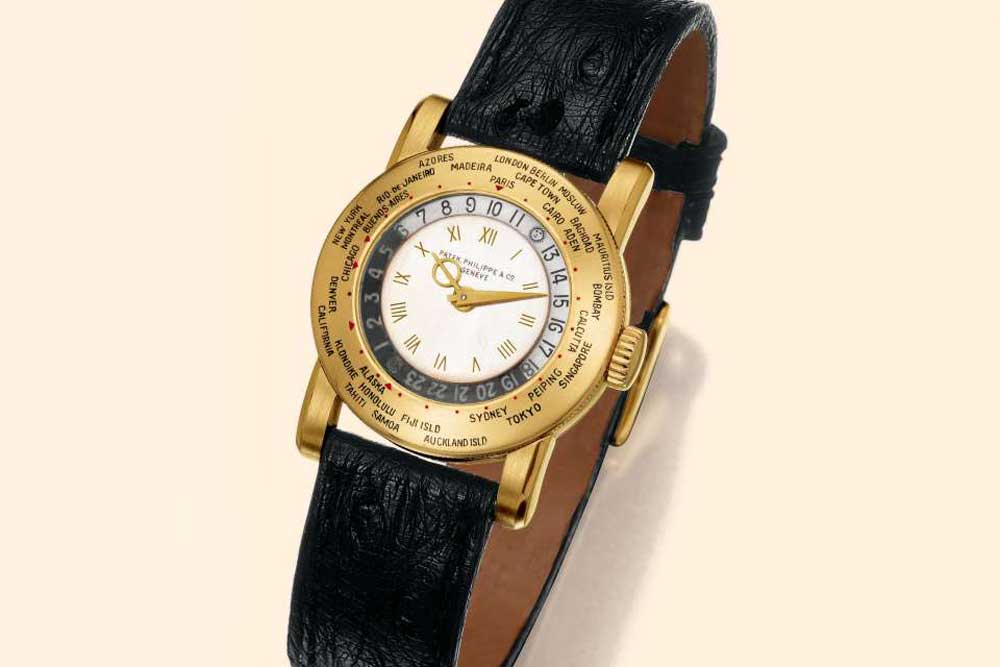
Patek Philippe’s 1937 ref. 542 HU, which has a bezel that displays Honolulu with a red triangle as a half time zone, between Alaska and Samoa zones. (Image: Antiquorum)
The timeless elegance of Patek Philippe World Time: A symphony of artistry and tranquility
Over its 85 years, the Patek Philippe World Time in both pocket watch format with the glorious reference 605 HU and across all 17 wristwatch iterations has been a resplendent playground for Patek’s signature artistry in case, dial and hand design. To me, this signals that from the very beginning, a Patek Philippe World Timer has approached travel from a stately and elegant manner, evoking bucolic equanimity. Even today, it is not a watch for anyone in a rush. For that purpose, for breakneck-speed business trips or non-stop transglobal kinetics, there are other watches that have more precise indicators and that accommodate factors like daylight saving time. No, a Patek Philippe World Time is a Grande Dame. She is a watch that epitomizes graceful repose; a watch you would have genuflected upon whilst smoking a soothing Hoyo de Monterrey on the upper deck of a cruise ship as you made the four-day journey from America to Europe in the 1930s. She is a watch to wear over your shirt sleeve as a totem of inimitable style onboard your private jet as was Gianni Agnelli’s practice with his Patek Philippe reference 1415. To me, my Patek Philippe World Time is best described by the refrain in Charles Baudelaire’s poem Invitation to Voyage, “Là, tout n’est qu’ordre et beauté, / Luxe, calme et volupté!” which can be translated as, “There — nothing but order and beauty dwell, / Abundance, calm, and sensuous delight.” Finally, this complication also represents a wonderful collaboration between the world’s most revered haute horlogerie maison and a watchmaker named Louis Cottier, who would become one of the 20th century’s most significant horological figures.

Fiat’s former boss Gianni Agnelli (Images: The Rake)
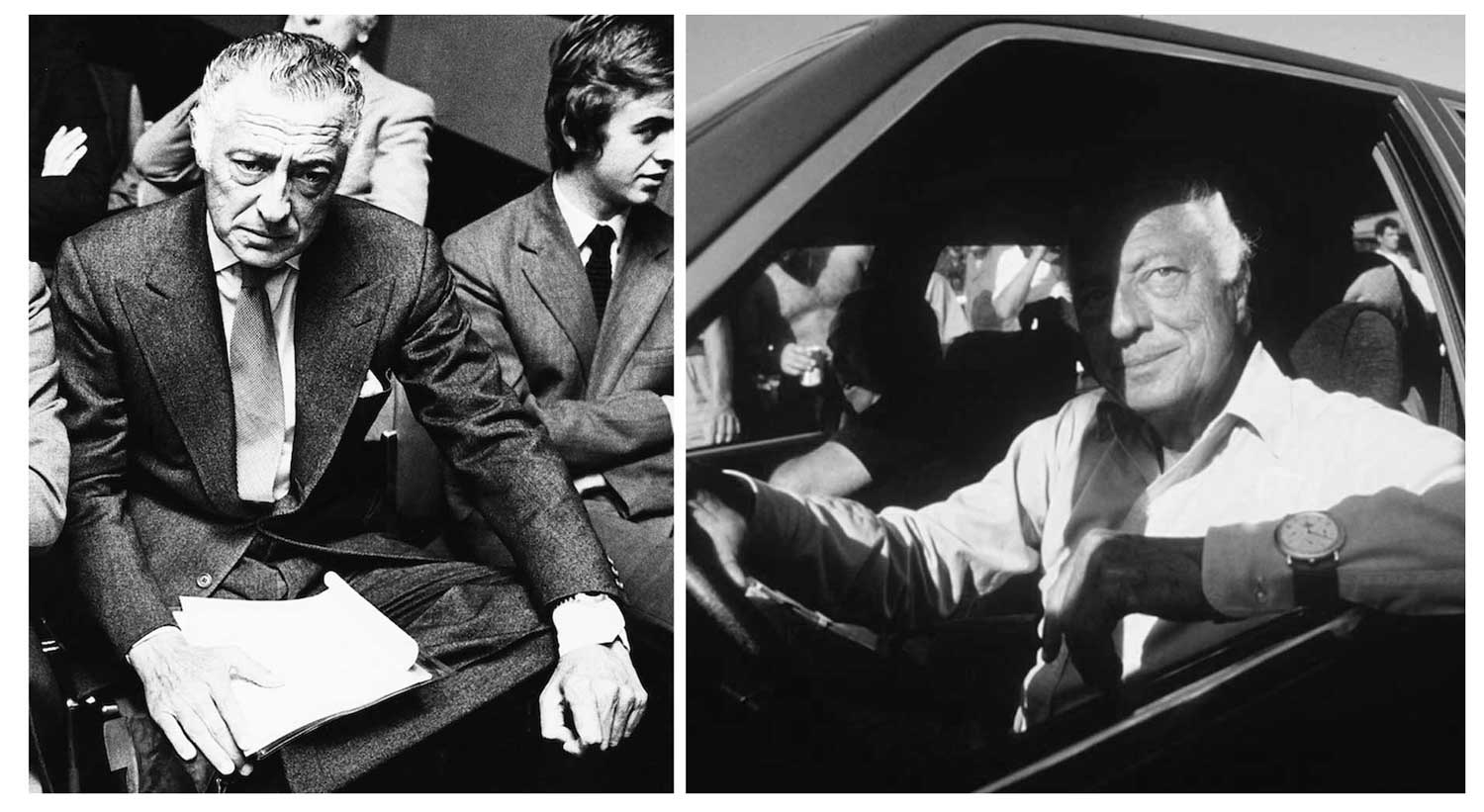
A Patek Philippe World Timer is a watch to wear over your shirt sleeve as a totem of inimitable style onboard your private jet as was Gianni Agnelli’s practice with his Patek Philippe reference 1415
The world divided into 24 zones
It was the obscure Italian mathematician Quirico Filopanti who in his book, Miranda, published in 1858, first proposed 24 zones with prime meridian situated in Rome. Sadly, he was destined to remain shrouded in obscurity as very few people took notice of what turned out to be a profoundly pragmatic suggestion. Why? Because up until then, there was no such thing as standard time. It was up to every country, even every town in the world, to determine their own local time. Because most places wanted to maximize the daylight hours needed for farming and agriculture, the common practice was to define noon as the time when the sun was directly overhead. Which was to prove incredibly imprecise and which led to mass confusion, especially once vast stretches of land became interconnected through the railroad. It fell to Scottish-born Canadian railway engineer and inventor Sir Sandford Fleming to propose global standard time with the world divided into 24 zones. However, this was far from his only accomplishment. Fleming, a true Renaissance man, had already designed Canada’s first postage stamp and engineered the majority of the Canadian Pacific Railway and the Intercolonial Railway when he ran afoul of the challenges related to the lack of standard time. In 1879, after missing a train in Ireland because of the lack of a universal coordinated time, Fleming took it upon himself to evangelize for the formation of one standard time to rule them all.
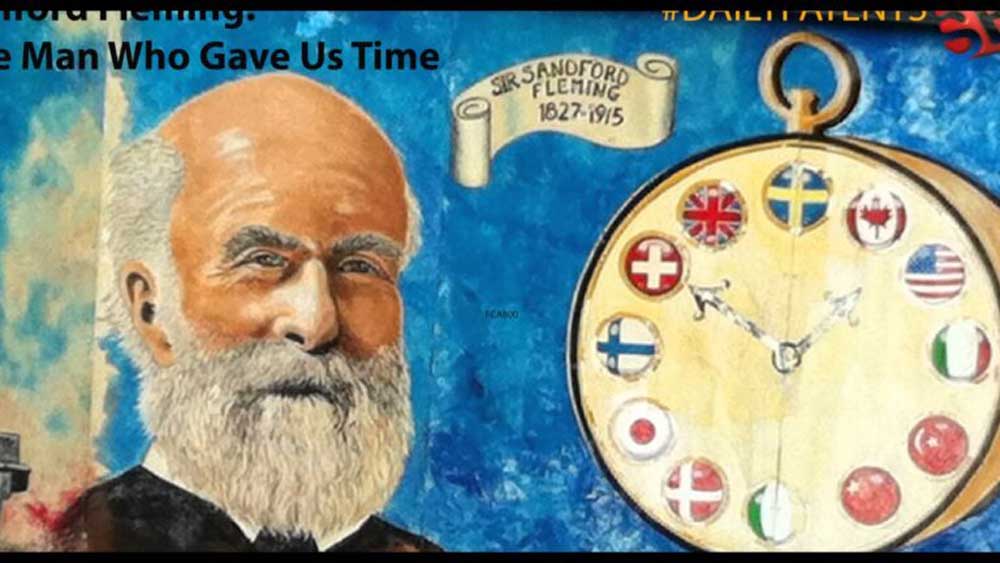
Sir Sandford Fleming proposed the concept of global standard time with the world divided into 24 zones in 1879
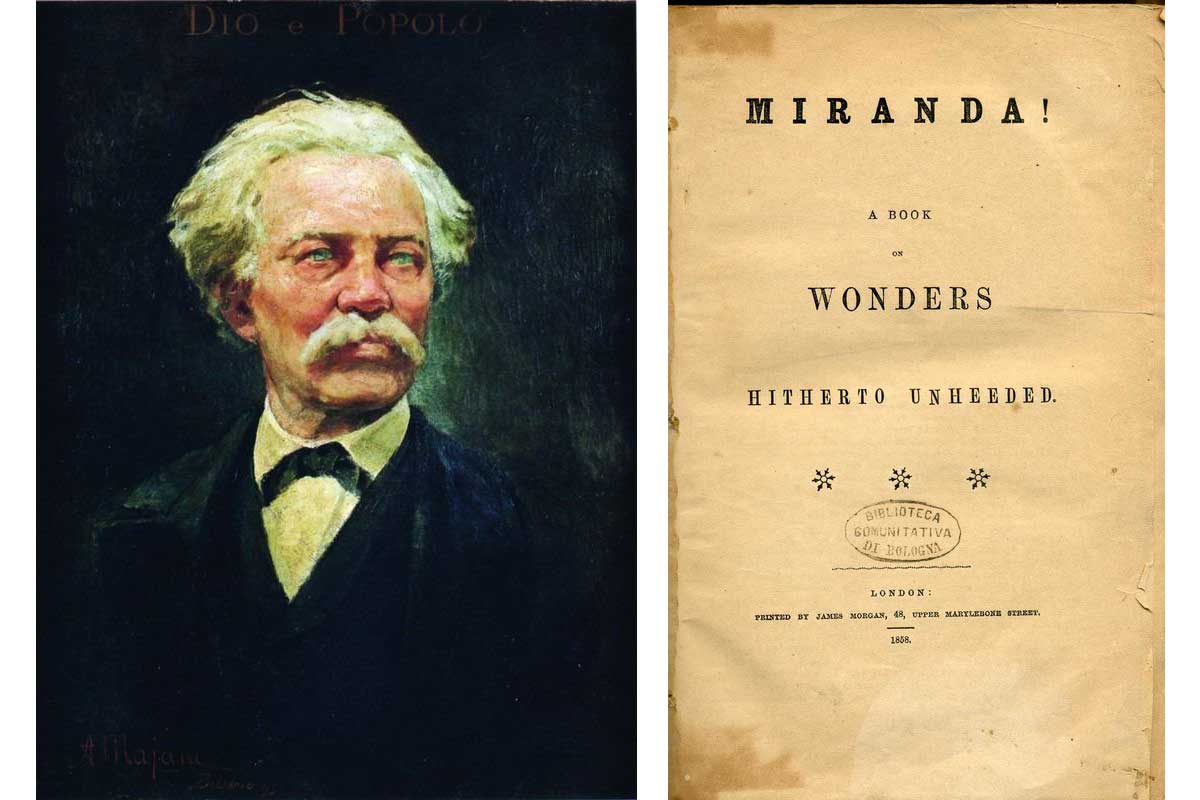
Italian mathematician Quirico Filopanti first proposed 24 zones with prime meridian situated in Rome in his book, Miranda, published in 1858.
Sir Sandford Fleming proposed the concept of global standard time
He proposed this during a meeting at the Royal Canadian Institute and recommended for it to be used by all countries in the world. That’s right. He proposed a single universal 24-hour clock for the world. Amusingly, he proposed that England, specifically Greenwich, be the anti-meridian at 180 degrees. As this meridian is also the international date line, it would mean people could walk a few steps from one date to the next. By 1883, the heads of all the American railroads had agreed to use a common time. By the early 1900s, standard time would largely be adopted but now with the prime meridian running through the Royal Observatory in Greenwich, England. The world was then divided into 24 time zones, positioned every 15 degrees of longitude, each one hour’s difference from the next. If you’re curious, the 180th or anti-meridian now passes primarily through the Pacific Ocean, though it does bisect Russia, Fiji and Antarctica. By 1918, standard time was voted into law by the United States government, meaning even if you wanted to create your own polygamous enclave promoting obscure religious practices with your own time zone, you couldn’t. Well, OK, you could but you would still have to follow standardized time even during Rumspringa.
The opulent era of luxury travel
Throughout the early 20th century, leisure travel was the exclusive domain for the very wealthy — the elite. First class travelers on board ocean liners that took two weeks to cross the Atlantic expected rooms, service and food the equivalent of the very best five-star hotels. And they got it. The Hamburg American Line hired Charles Mewès, the designer of Paris’ mythical Ritz Hotel, and their line of ships so faithfully mimicked the uber luxury destination that they were nicknamed the “Ritzonias.” Columns and chandeliers were by Lalique, china by the Manufacture de Sèvres, and silverware by Christofle. Accordingly, women wore gowns, and men wore white-tie to dinner, all of which was packed in an armada of Louis Vuitton and Goyard trunks tended to by an army of servants.
Louis Cottier developed the World Time complication
The first Cottier to propose a World Time watch was not Louis but his father, Emmanuel, a noted specialist in watches and automatons based in Carouge, Geneva, which, incidentally, is the location of one of my favorite fondue restaurants, Au Vieux Carouge. In 1885, Emmanuel presented his “heures universelles” concept to the Société des Arts in Geneva and subsequently filed for a patent for his design. Unfortunately, his idea was received with very little interest, to say the least. As such, he went on to pursue other ventures without having built a working world timer It was, eventually, Louis his son who took Emmanuel’s concept and developed a working mechanism completely from scratch. Perhaps it was because he was born the same year his father made his presentation that Louis Cottier felt so deeply connected to the World Time complication. In 1931, at the age of 46, Cottier developed the fabled mechanism and filed a patent for it. The patented mechanism consisted of an inner dial with hands and 12 hour markers, a 24-hour ring and a second ring with cities printed on it. The way it worked was straightforward and highly intuitive. The 24-hour ring was synchronized to the central hour and minute hands. While the main hands turned clockwise, the 24-hour ring turned counterclockwise. Each of the 24 hours would align with the cities representing their respective time zones.
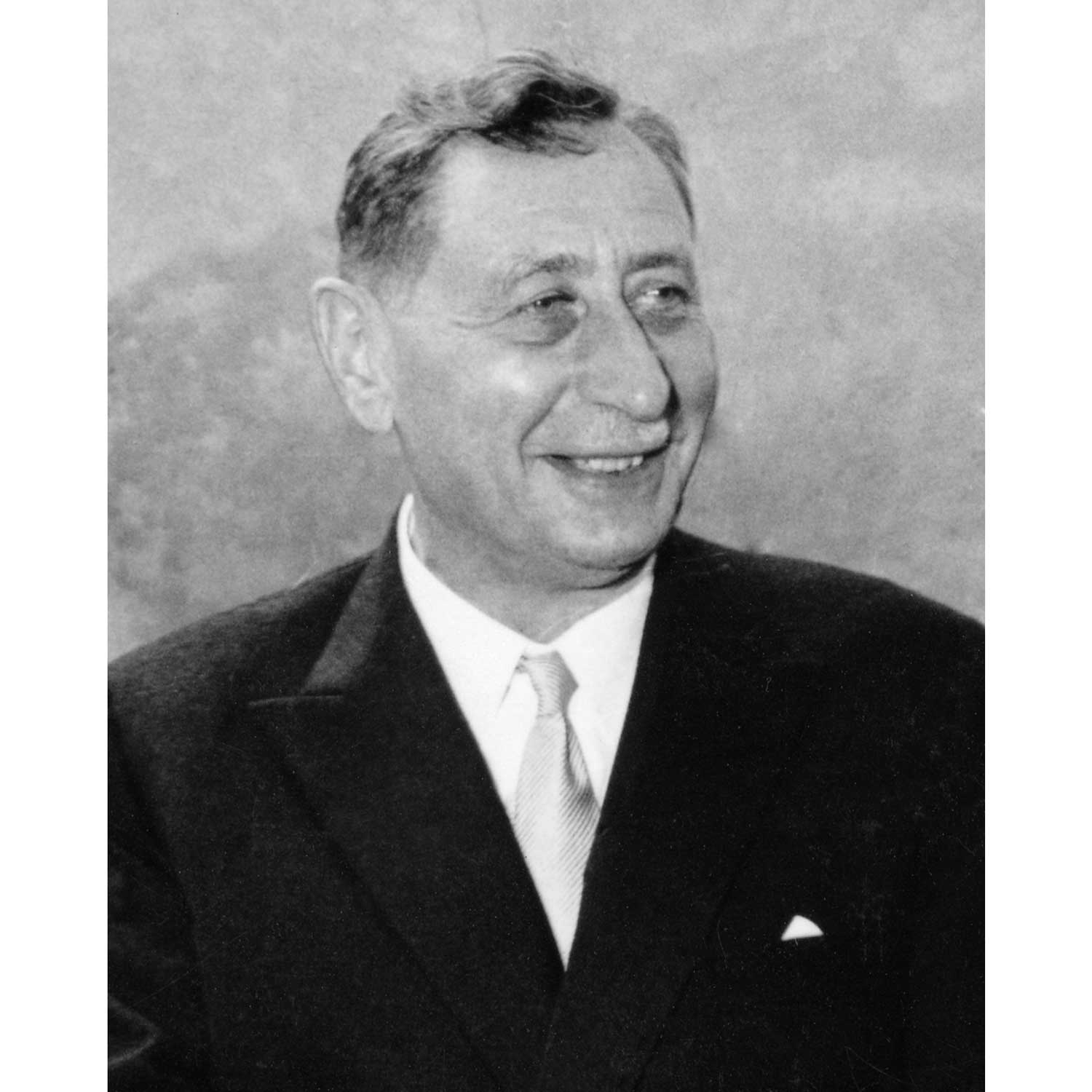
Louis Cottier developed the world time mechanism and filed a patent for it in 1931. (Image: Jean-Pierre Cottier)
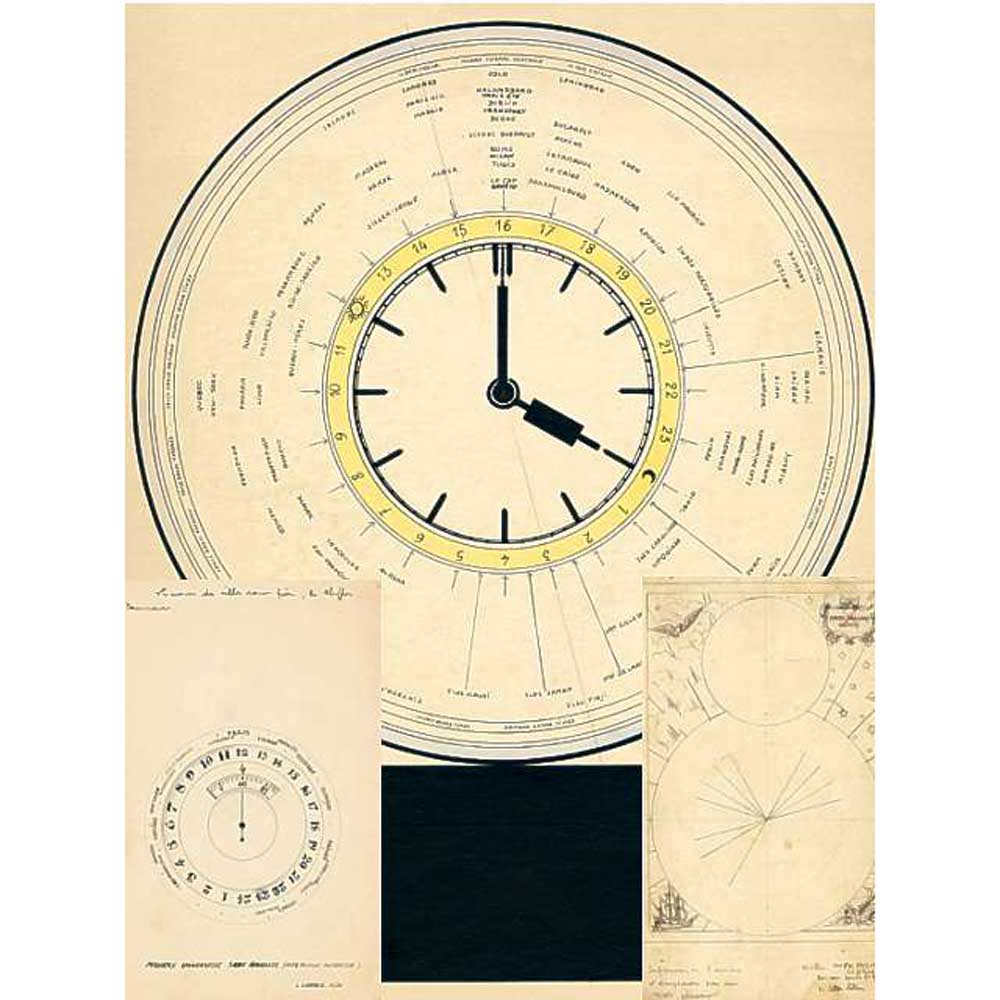
The original design for Louis Cottier’s World Timer
Patek Philippe World Timer: Mastering time across 24 time zones
But the true genius of Cottier’s complication was that each time you traveled to a new city, you set your watch to local time ensuring that the 24-hour ring corresponded correctly to AM or PM hours. And then presto. You would be able to read the time in all 24 zones on the planet. To aid in clarity, Cottier would demarcate the day and night hours in different colored parts of the 24-hour ring and transform 12 noon into a sun icon and 12 midnight into a moon icon. Now, one could simply turn the bezel of the watch, which was either connected to the city ring as in the reference 605 HU or actually had the cities engraved on it as with the reference 1415, so that the city or zone one was in would be positioned at 12 o’clock. And just like that, the time in all the other cities in the remaining 23 zones would be correctly displayed.
A note on Patek’s Daylight Saving Time (DST)
What is daylight saving time? This is the practice of advancing the clock by one hour during spring and back one hour in fall to maximize daylight hours. As a result, there is a 23-hour day in warmer months, and a 25-hour day in cooler months. For 2021, daylight saving time is on March 14th and November 7th. Though it was initially proposed by Benjamin Franklin in 1784 for the very pragmatic intent of economizing on candles, the practice began in earnest in Germany in 1916 and spread through the rest of the world by 1966. Note that because of its intention to be a gentlemen’s watch, a Patek Philippe World Timer does not display DST. Which is not to say it could not, as there is a relatively easy solution in any World Time watch to compensate for DST. You just add an indication one hour to the left of any city that experiences it. Which means during daylight saving time, Paris would actually be in the zone for London. Unfortunately, you can’t simply turn the city ring one place to the left because there are other cities such as Hong Kong which are unaffected by daylight saving time. Including DST would mean a very cluttered city ring which to both Patek and Cottier was something that would mar the aesthetic perfection of their design. Personally, I would suggest all cities practicing it to abandon the uncouth banality of daylight saving time so as to align more perfectly with my Patek Philippe. I mean, we need to have priorities here.
1937: Ref. 605 HU
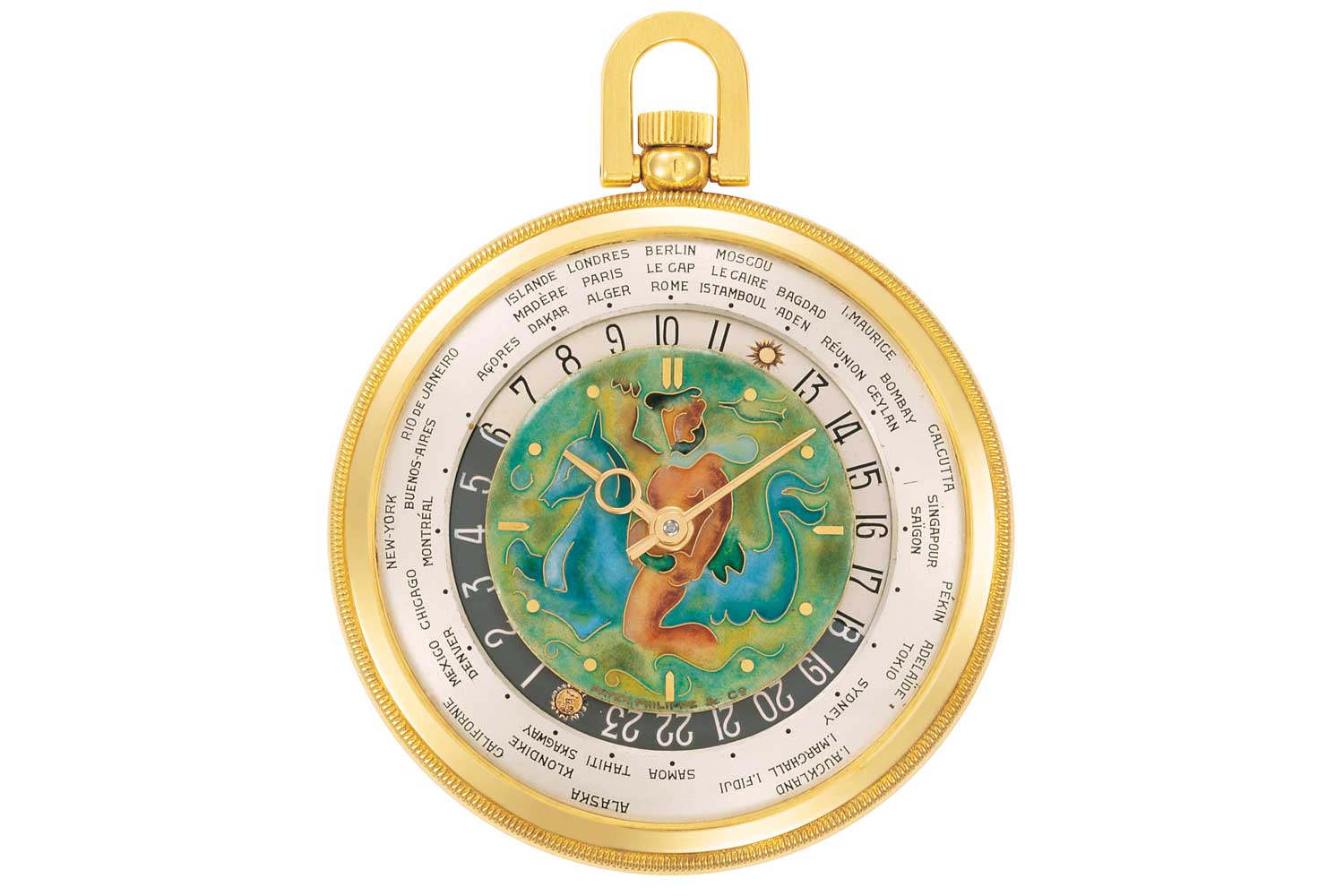
The reference 605 was the first Patek Philippe to begin the tradition of cloisonné enamel dials, often bearing maps, that continues to this day. (Image: Patek Philippe)
What drove Patek Philippe’s pioneering journey into World Timers: A tale of innovation and collaboration
What motivated Patek Philippe to create their first World Timers? Well, let’s look at this in the context of Patek Philippe’s history. The maison was acquired by the Stern Family and run by brothers Charles and Jean Stern in 1932. This marked the start point of Patek Philippe’s truly glorious era which stretches across the 20th century to this day. And it cannot be overstated how brilliantly creative Charles and Jean Stern were. Just nine years into their stewardship and in the throes of the Second World War, they launched two of the most important timepieces ever made — the 1518, the world’s first perpetual calendar chronograph, and the 1526, the world’s first perpetual calendar — and single-handedly introduced us to the era of complicated wristwatches. In 1935, Charles’ son, Henri Stern, brought Patek Philippe to the United States. Henri was a global gadabout like no other, fearlessly venturing to South America and other far-flung destinations to spread the gospel of Patek Philippe, now under the leadership of his father and uncle. What was clear was that the Sterns discussed the type of wristwatches the modern gentleman and, in particular, the American would like to wear. Their answer was clearly, “a watch made for the traveling man, a man of elegance who circumnavigates the earth in style.” Around this time, Louis Cottier had approached all of the major names in Geneva with his invention. The very first piece that he delivered was one made for Baszanger, which had a dial made by the Sterns. Serendipity would have Louis Cottier and the Sterns set out on one of the most magical and mutually beneficent collaborations that would bear fruit in the legendary World Time and Travel Time complications.
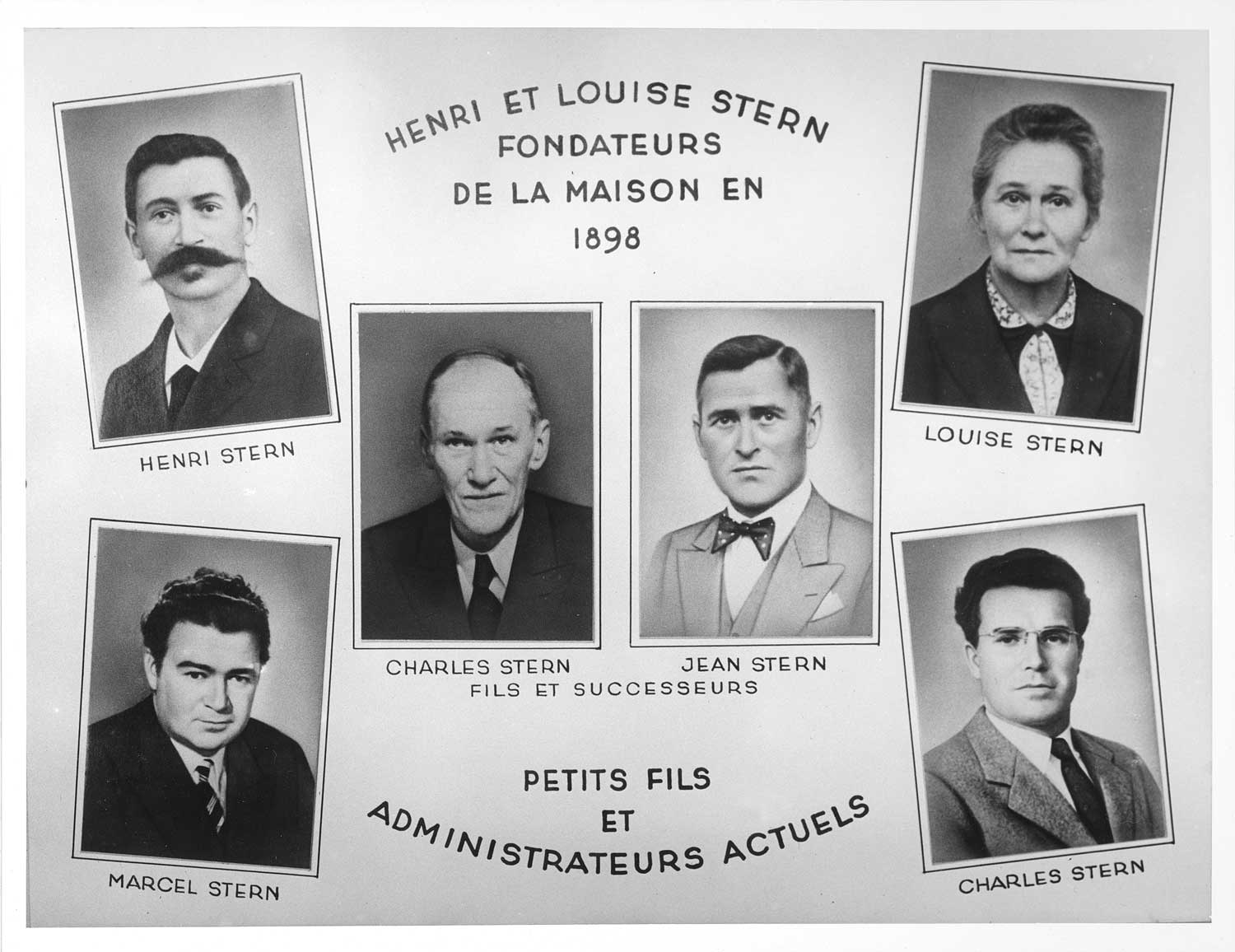
Patek Philippe was acquired by the Stern Family and run by brothers Charles and Jean Stern in 1932.
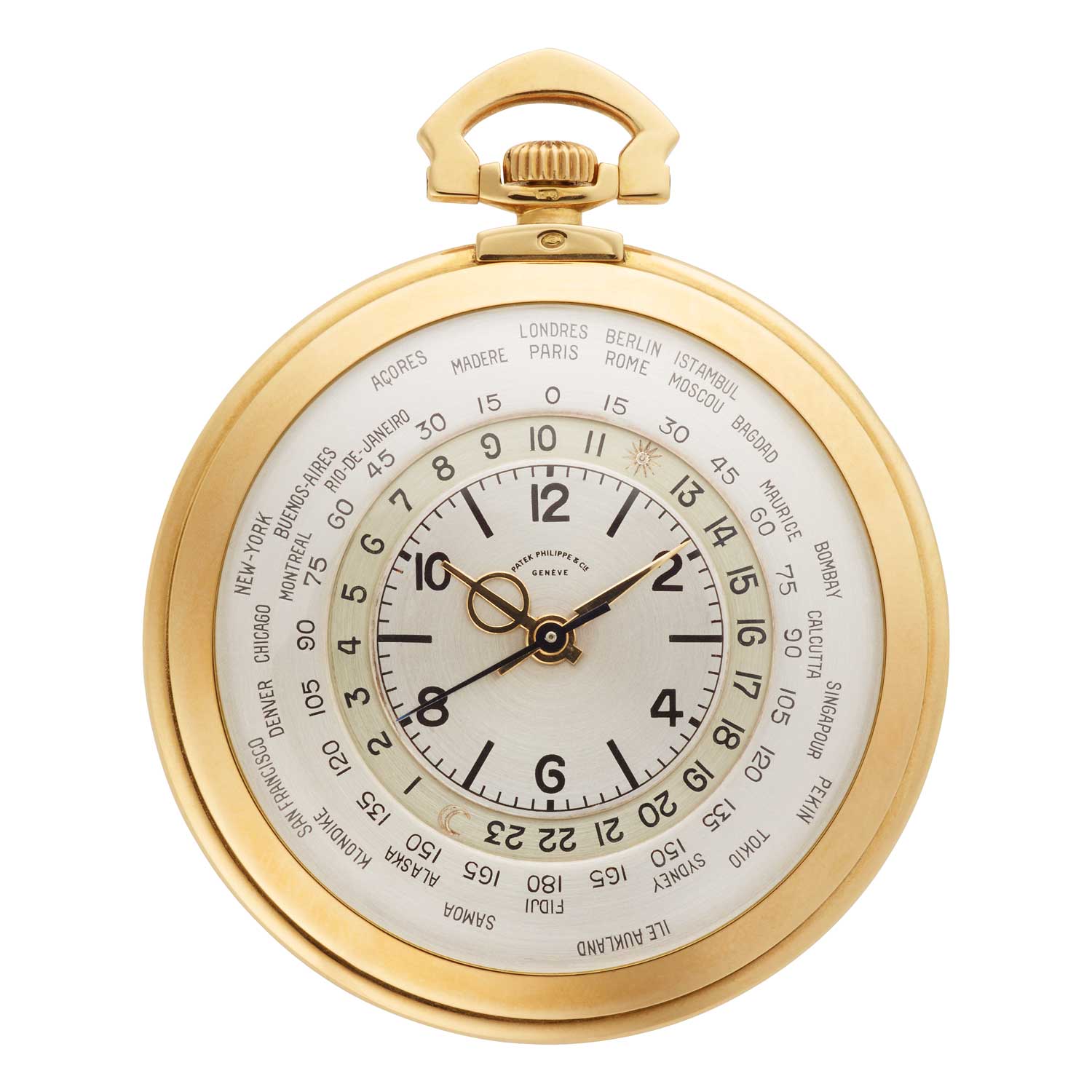
The reference 605 HU was a demonstration of the successful collaborative effort between Patek Philippe and Louis Cottier.
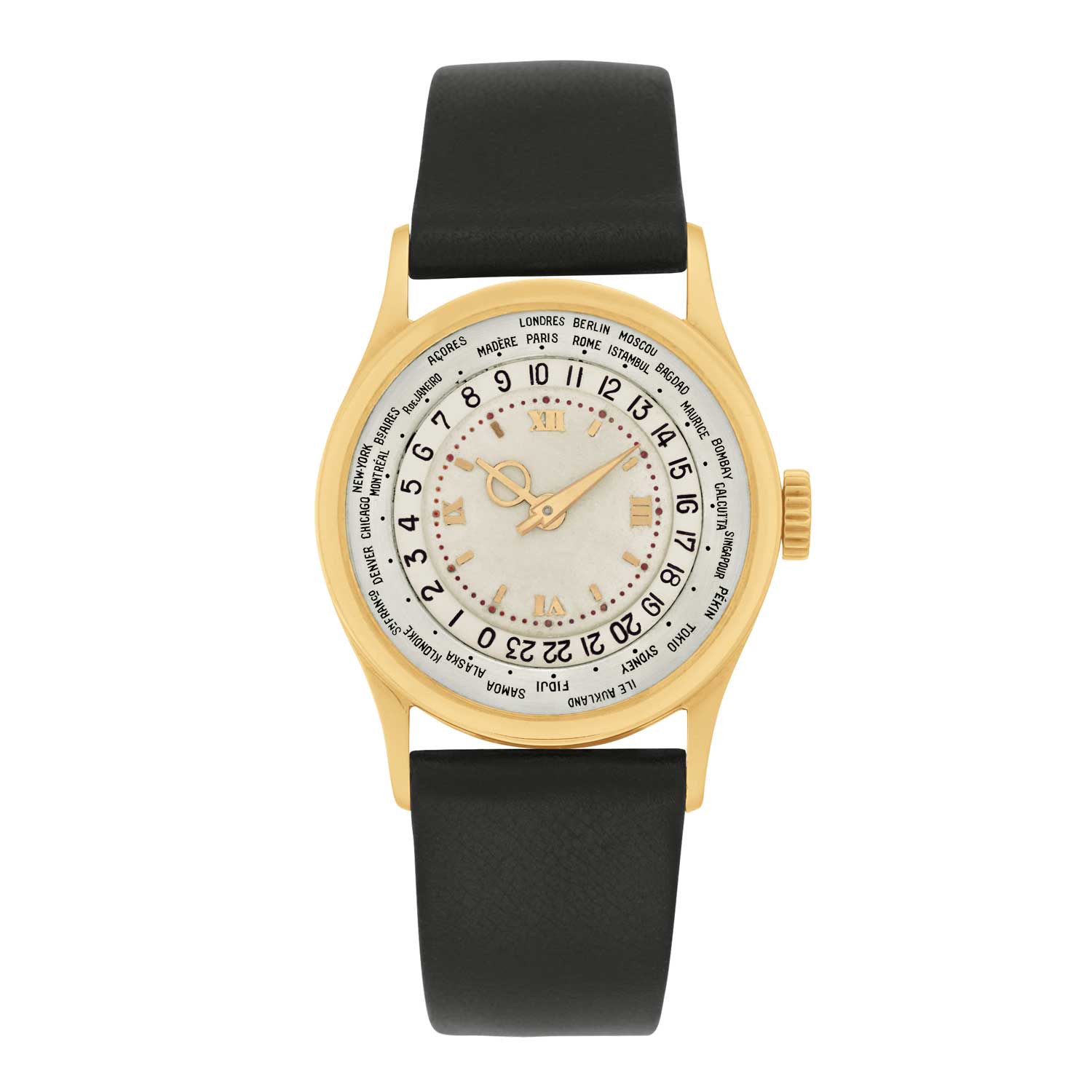
Patek Philippe ref. 96 HU has the names of 28 cities on a ring around the dial.
The dual evolution of Patek Philippe’s World Time: Pocket watches and wristwatches in parallel
Interestingly, because it was a pocket watch, people often presume that the reference 605 HU preceded Patek Philippe’s other forays into World Time wristwatches. And it did for the first serially produced World Time wristwatch, the reference 1415. However, as the ref. 605’s production run stretched across three decades, it was definitely also made concurrently with the 1415, and as its production began in 1937, it was actually created the same year that Patek created its prototypical wristwatches, the reference 96 HU, the reference 542 HU and the reference 515HU. This means that Patek was developing a World Time pocket watch and wristwatch at the same time. Which begs the question: who chose the larger 44mm pocket watch over the smaller, more fashionable wristwatch? Well, again, as these watches were crafted as works of art with many bearing resplendent cloisonné enamel dials, and because in the bigger size the World Time complication was much easier to read, you could say quite a lot of people chose the pocket watch option. Around 90 pieces were eventually delivered, which was almost as many pieces as the 1415 and almost twice as many as the 2523.
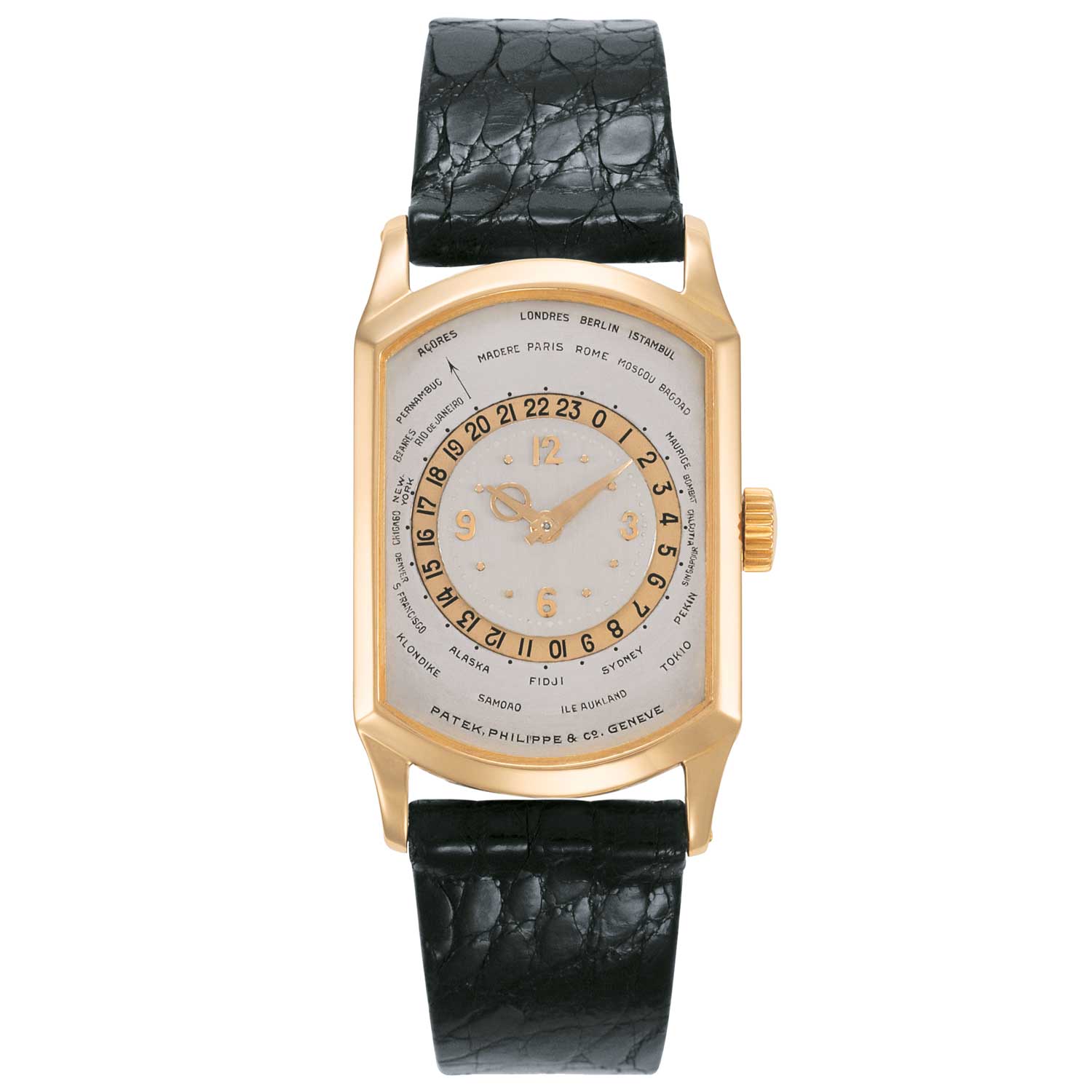
Made in 1937,the Patek Philippe ref. 515HU features a surprising and super elegant rose gold shaped rectangular case.
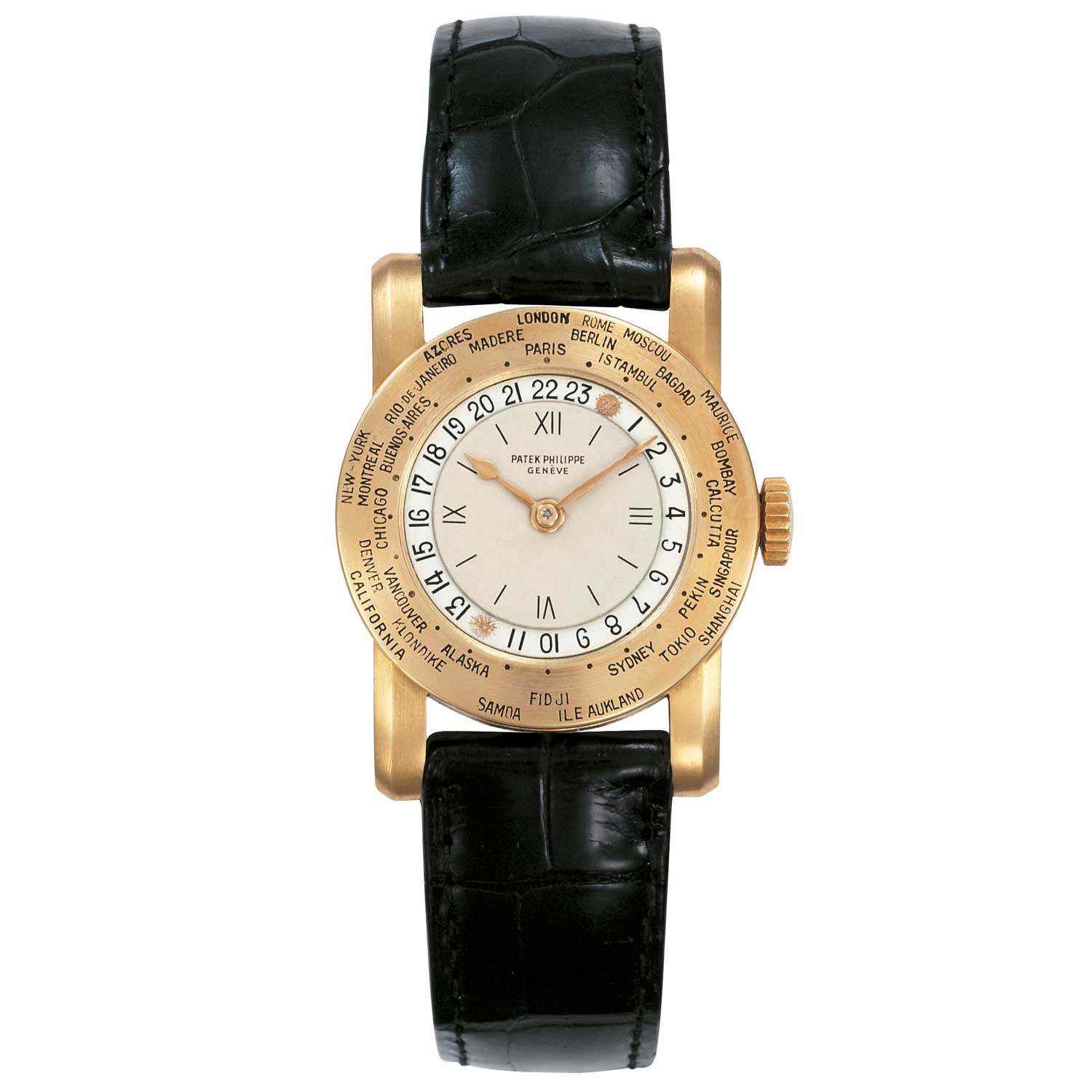
Patek Philippe’s ref. 542 HU forged the genetic blueprint for the first serially produced Patek Philippe World Timer wristwatch, the stunning reference 1415.
The exquisite design of Patek Philippe’s Reference 605: A fusion of functionality and elegance
The reference 605 is a glorious object. As mentioned above, it measures 44mm in diameter (the 605HU on the other hand measured 44.5mm in diameter). It features a center dial bearing the hour and minute hands and is surrounded by Cottier’s 24-hour ring and then the disk with the names of cities representing earth’s 24 time zones. One clever detail is that the bezel of the watch is decorated with an elegant fluting which also provides grip to manually align the correct local city so that it is at 12 o’clock. Now, by adjusting the watch to the correct time on the central hands, the 24-hour disk will display the correct time in all 24 zones. Early versions of the watch have a hand engraved sun and moon to represent 12 noon and 12 midnight, which is a charming touch. There is even a pre-series 605 at the Patek Philippe Museum (inv. P-1117), which had a center second, subsequent 605s only displayed hour and minutes. There are even ultra rare versions of the Patek Philippe 605 HU with center seconds displays.
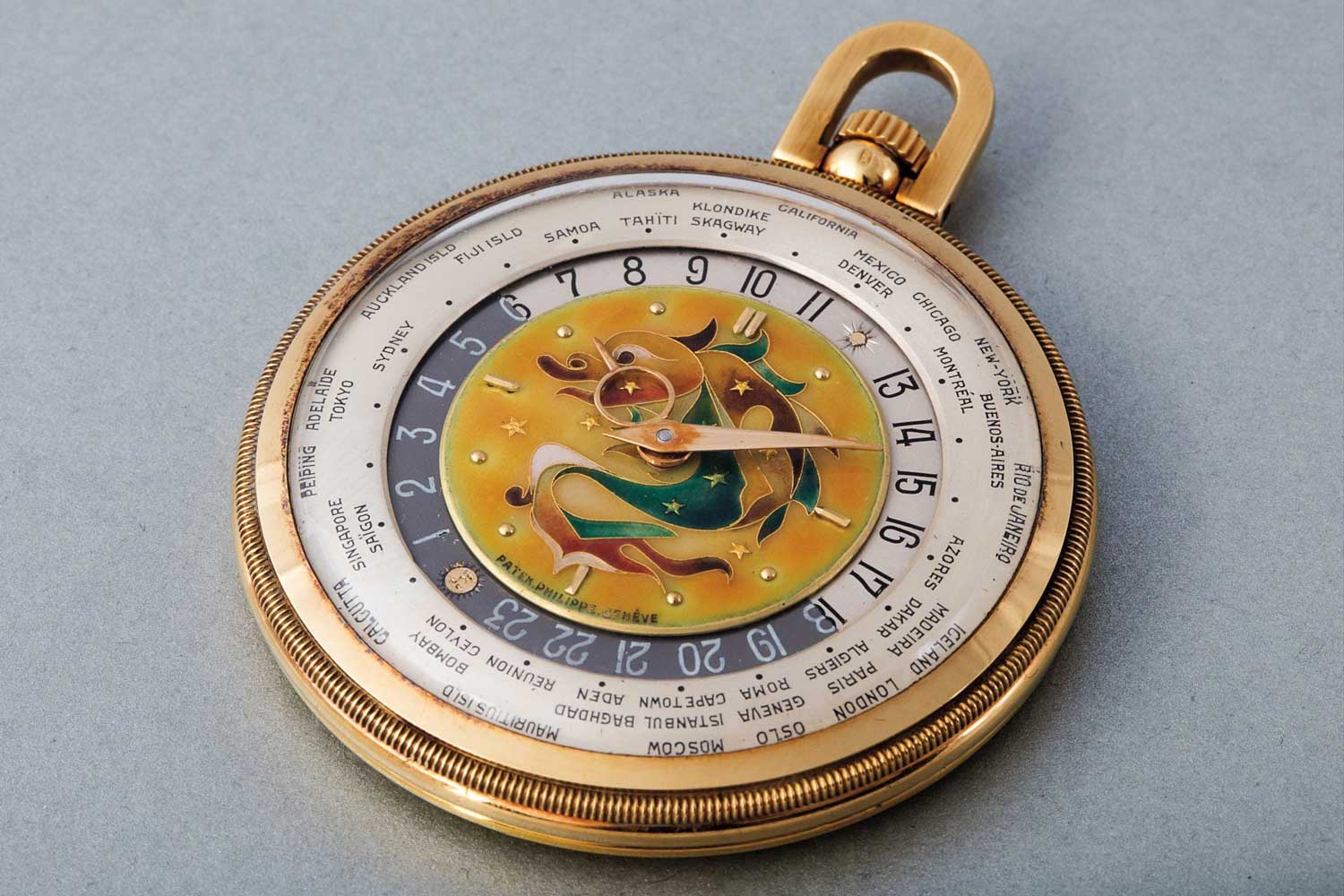
Patek Philippe ref. 605 HU with a cloisonné enamel dial depicting a mythical Dragon (Image: Phillips)
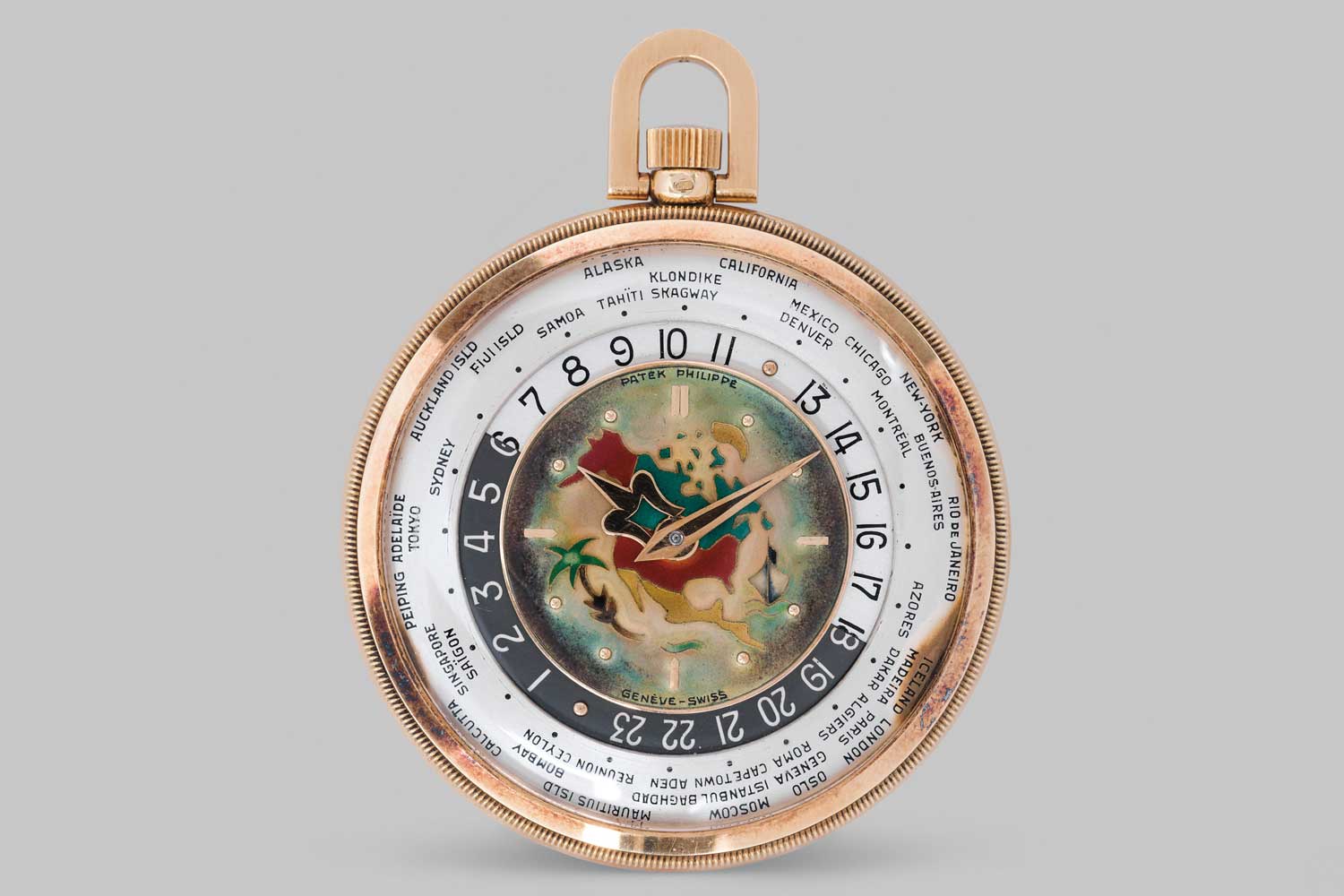
A rare yellow gold world time ref. 605 HU with cloisonné enamel dial depicting North America(Image: Phillips)
Patek Philippe and Louis Cottier: A symbiotic collaboration in world time horology
You could say that the early Patek Philippe World Timers including the reference 605 HU were a demonstration of the successful collaborative effort between Patek Philippe and Louis Cottier. Watches would arrive unassembled and he would carefully fit his World Time module to the movement and then case the watch, which would often include a magnificent cloisonné enamel masterpiece as its center dial created by Stern Frères. Famously, Cottier would cut the hands for these watches himself; he was therefore responsible for the famous circular hour hand that was a popular option across these early World Timers and that was brought back by Patek Philippe with the reference 5130 in 2006. Much is sometimes made over the fact that Cottier’s World Time complication also appeared in watches for other maisons, but I overwhelmingly associate it with Patek Philippe.
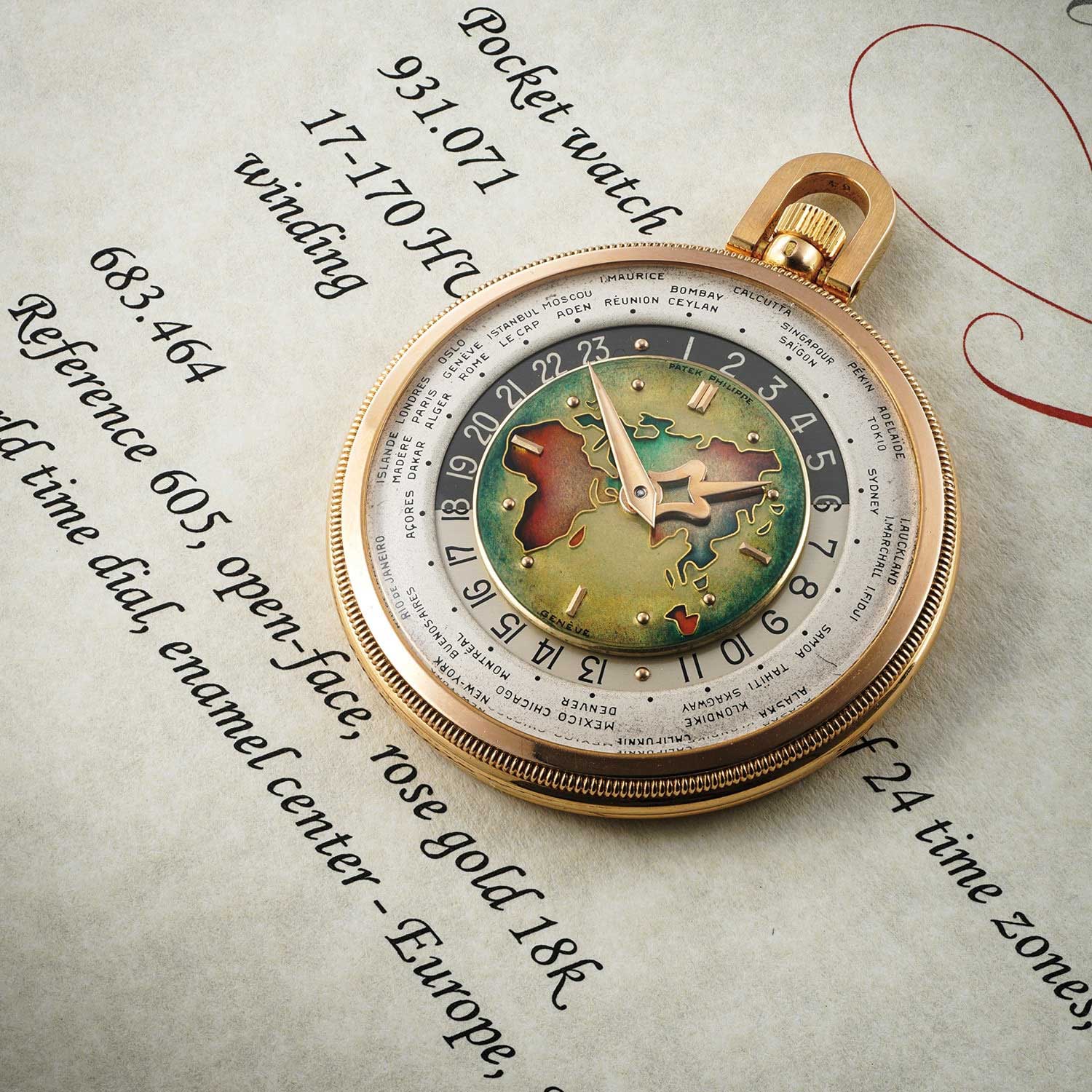
The Patek Philippe reference 605 HU with a rare cloisonné enamel map featuring Africa, Europe and Asia, was sold for CHF 1.16 million at Phillips’ Geneva Watch Auction: XI in June 2020. (Image: Phillips)
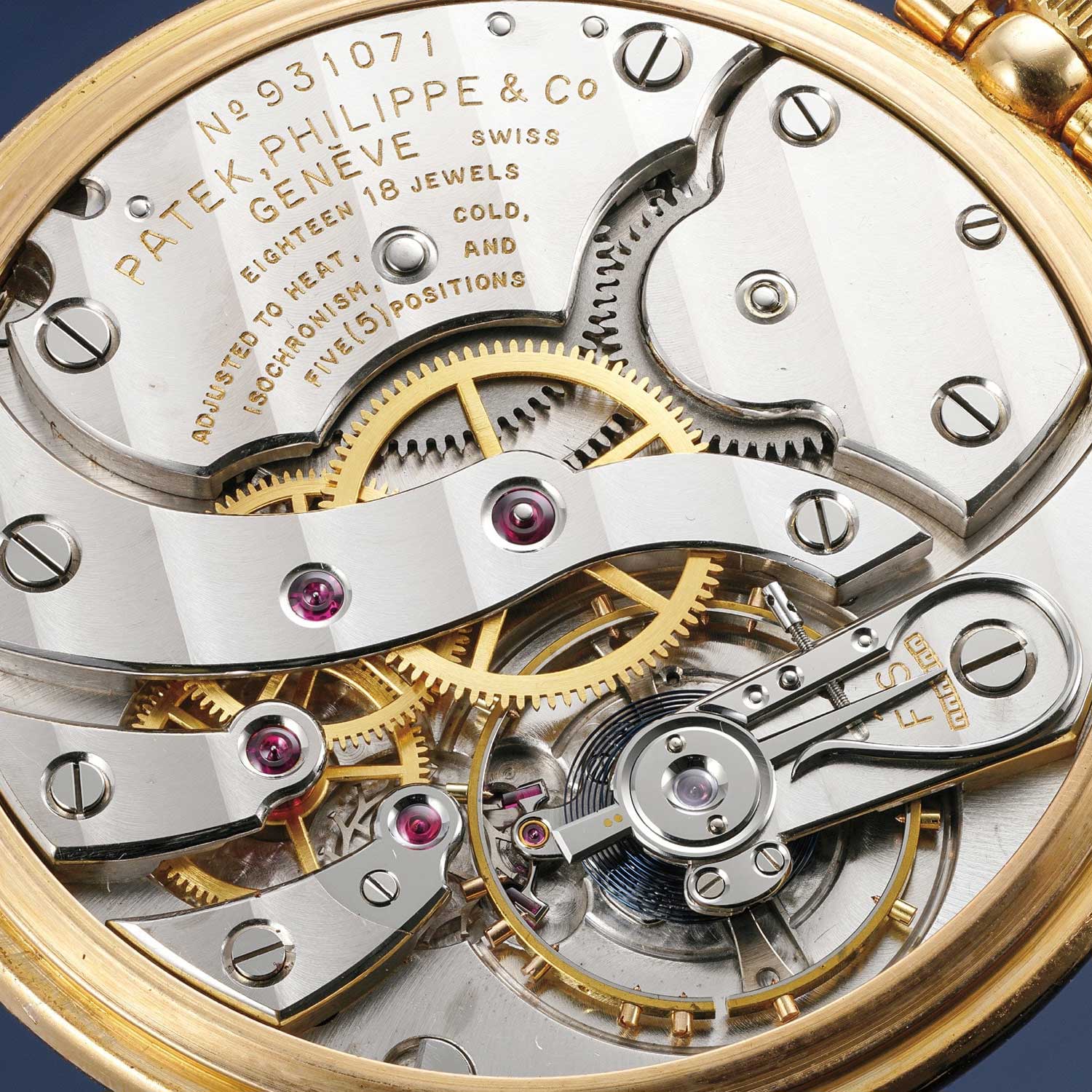
1937 onwards, for a total of 20 years, Cottier created around 90 605 HU World Time pocket watch movements. Seen here is the caliber 17-170HU which is the Cottier complication built on top of a 17 ligne Patek pocket watch caliber. (Image: Phillips)
The precious rarity of Patek Philippe’s Reference 605 HU: cloisonné enamel masterpieces resonating with timeless value
1937 onwards, for a total of 20 years, Cottier created around 90 605 HU World Time pocket watch movements. The reference 605 HU consistently sells for staggering prices, which include CHF 965,000 paid for the “Star Dragon” at Phillips’ Geneva Watch Auction: TWO in November 2015 and CHF 1.16 million for a reference 605 with a rare cloisonné enamel map featuring Africa, Europe and Asia, which sold at Phillips’ Geneva Watch Auction: XI in June 2020. The reference 605 was the first Patek Philippe to begin the tradition of cloisonné enamel dials, often bearing maps, that continues to this day. These watches are invariably valued higher than the World Timers with “regular” dials simply because of the extraordinary craftsmanship they represent. They were made using tiny thin gold wires which traced a pattern or shape such as the earth’s continents. These were then filled with enamel that was fired layer by layer and color by color. At each moment, the dials could discolor or even crack, meaning that they would have to be discarded. But once they were finished, they expressed a vibrancy of color that would endure for centuries and beyond.
1937: Refs. 96 HU, 515 HU and 542 HU
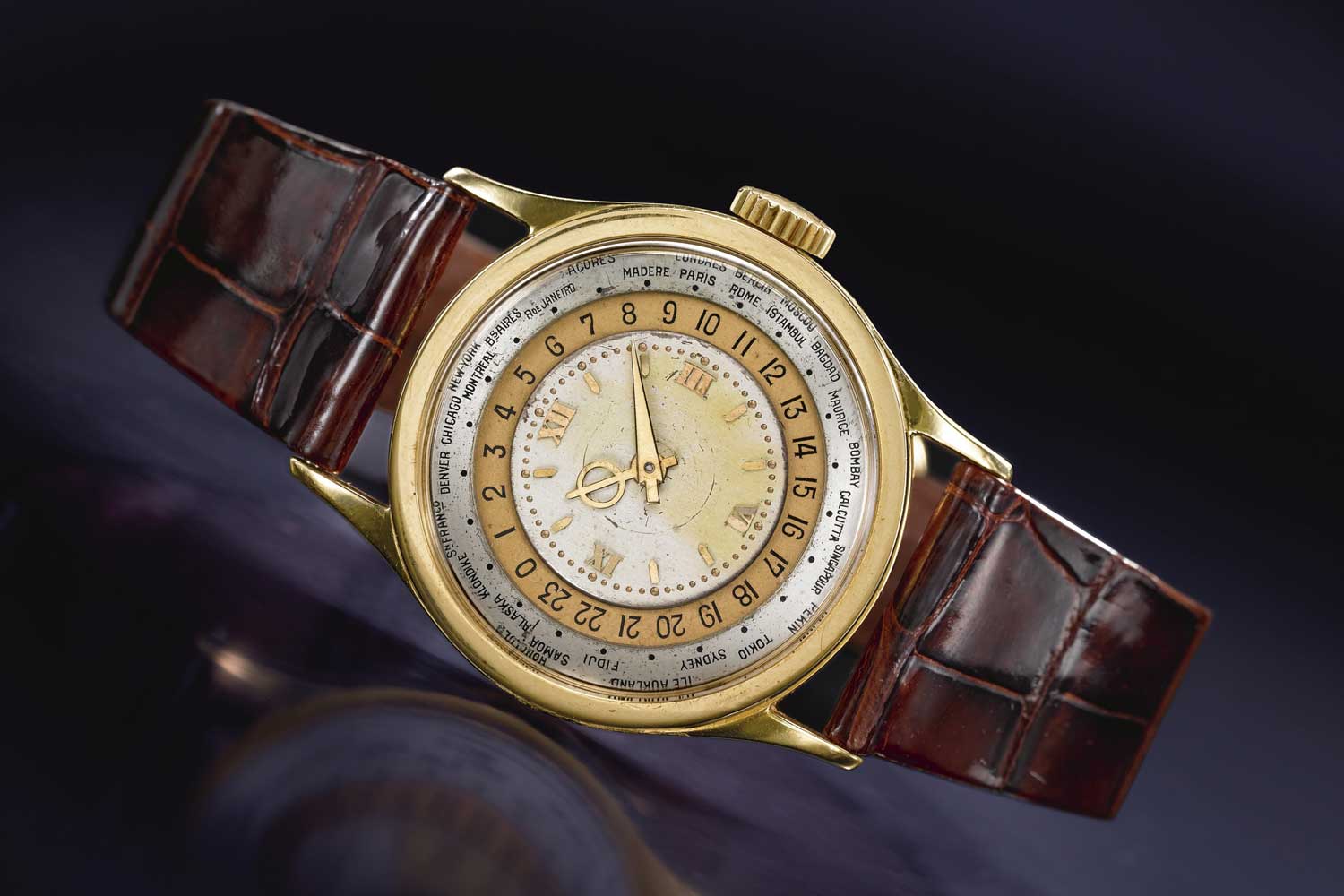
The reference 96 was one of the first truly successful round wristwatches for Patek Philippe and, in the context of the 1930s, was its icon. This watch was sold at Sotheby’s in 2011 for USD 482,500 (Image: Sotheby’s )
Patek Philippe’s World Time Exploration: Debut of the hidden prototypes of the iconic Calatrava
When those magical five syllables “Pa-Tek-World-Tim-er” are uttered, the two references that are conjured up are invariably the mythical reference 1415 with its stunning teardrop shaped lugs and rotating bezel with 28 cities engraved on it or the magnificent reference 2523 with its ravishing faceted lugs and two crown setup, with the one on the left, of course, activating the inner rotating disk bearing the names of the cities upon it. But, in fact, Patek Philippe made three experimental references in 1937. To me, these were part of Patek’s process of defining and refining their design for their World Timers. One of the more interesting of these early watches, and I would even go so far as to call them prototypes, was a World Time version of their famous reference 96 Calatrava. The reference 96 was one of the first truly successful round wristwatches for Patek Philippe and, in the context of the 1930s, was its icon. So, it made sense when they decided to create two early prototypes to incorporate Louis Cottier’s wonderful World Time complication into the Calatrava’s beautiful, smooth, pebble-like case. One of these watches was owned by the legendary Jean-Claude Biver and auctioned by Phillips in Geneva Watch Auction: XI.
The two known versions of the World Time Calatrava, both in yellow gold, are shown here. The former watch is currently believed to be in the Patek Philippe Museum, while the latter was the watch from Jean-Claude Biver’s collection auctioned by Phillips in 2020.
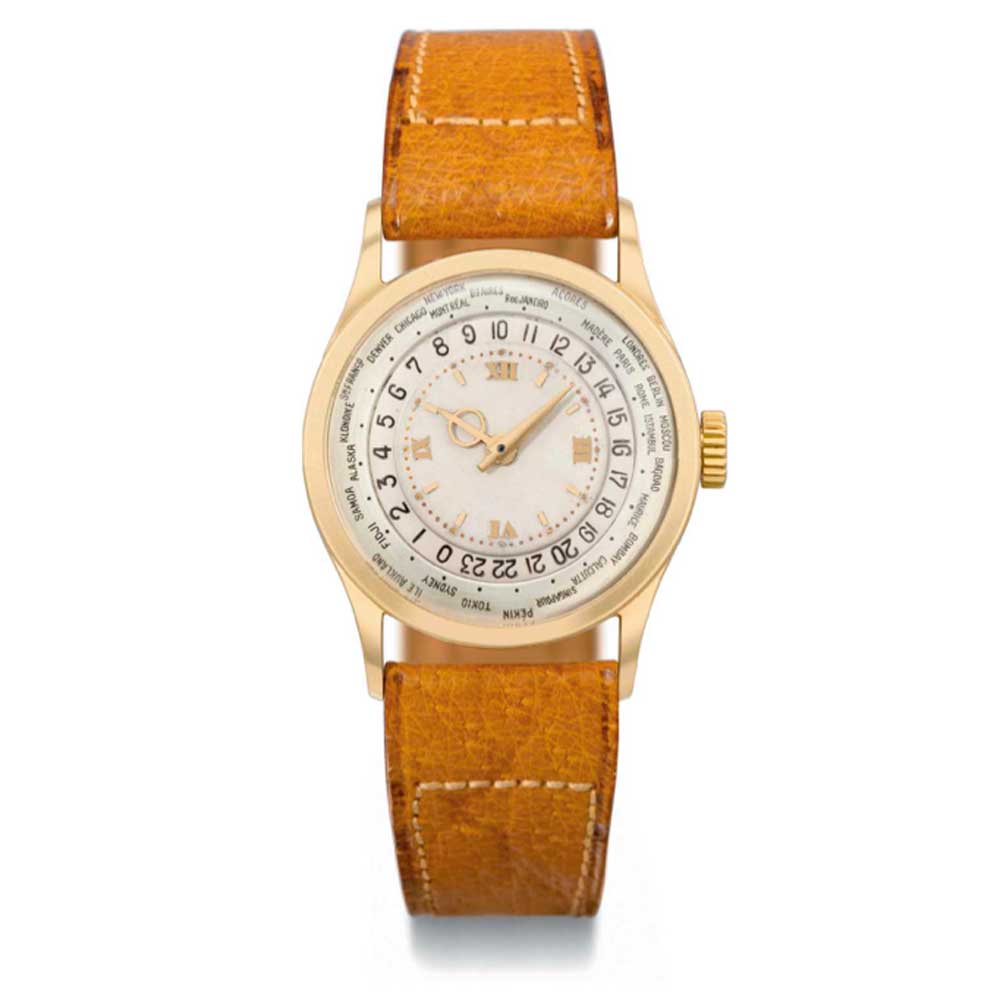
The ref. 96 HU signed Patek Philippe & Cie., Genève, was sold by Christie’s in 2011 for CHF 411,000 (Image: Christie’s)
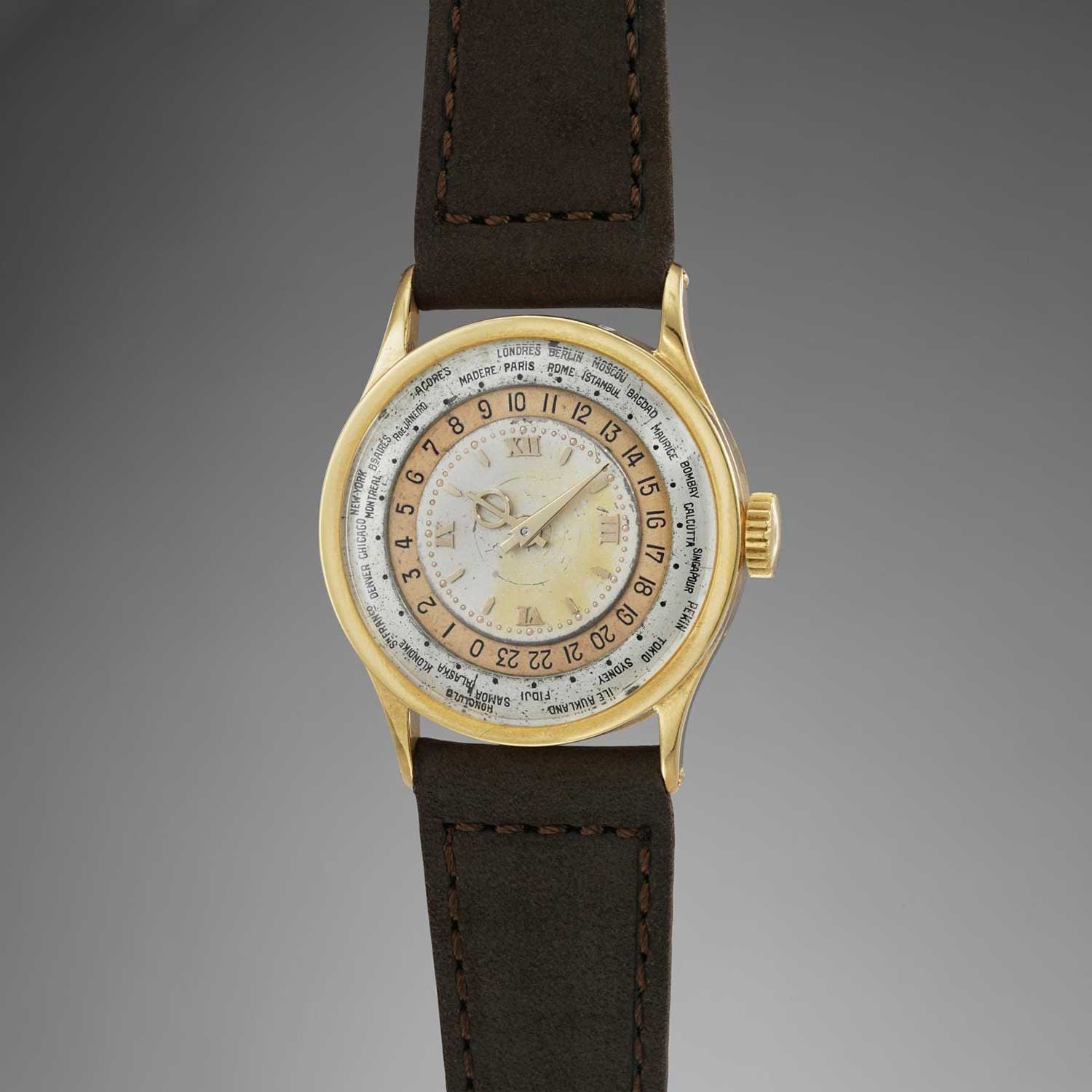
In 2020, Phillips sold Jean Claude Biver’s ref. 96 HU for CHF 387,500. (Image: Phillips)
The Rare and Timeless Référence 515 HU: A Luxurious Rose Gold Rectangular Case with a Fascinating Historical Connection
Reference 515 HU features a surprising and super elegant rose gold shaped rectangular case. As far as I know, only one example has ever surfaced in the secondary market and it was auctioned by Antiquorum in April 1994, fetching a price of CHF 550,000. The auction notes state that the watch was made for an American client but the reference city is London/Paris, which shared the same zone in the context of 1937. Interestingly, Paris and London shared the same time zone before the Second World War. Paris was commanded to switch to Central European Time in 1940 while under German Occupation, but the prevailing belief was that they would switch back to Greenwich Mean Time when the Allies won the war. So, Patek kept the two cities in the same zone in a beautiful act of faith that good would eventually triumph over evil. The irony was that following the Second World War, Paris remained at Central European Time, meaning that many World Time watches displayed their time incorrectly.
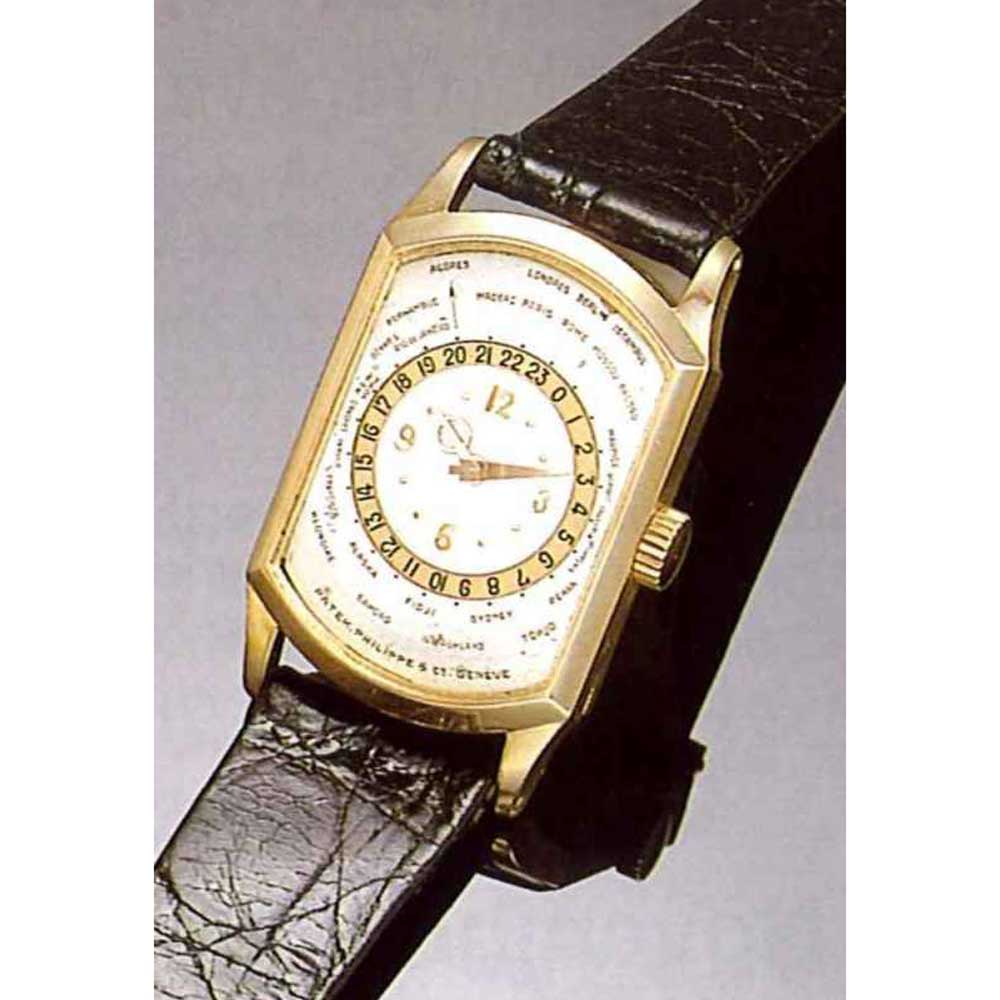
Only one example of the ref. 515 HU has ever surfaced in the secondary market and it was auctioned by Antiquorum in April 1994, fetching a price of CHF 550,000. (Image: Antiquorum)
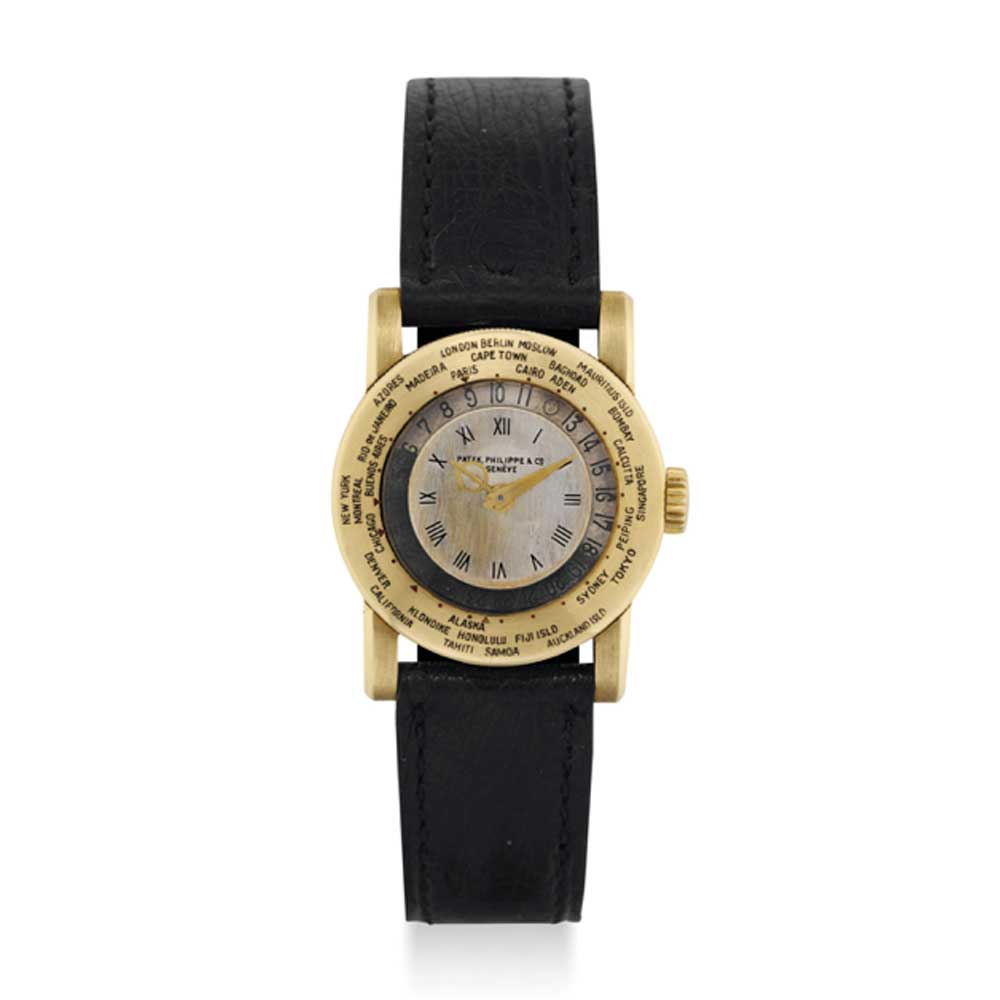
The genius of the ref. 542 HU relates to the use of a large rotating bezel that bears the names of 31 locations for the earth’s 24 zones, meaning that you can easily switch the name of your local city. (image : Christie’s)
The genesis of Patek Philippe’s World Timer legacy with the iconic 1937 Patek Philippe 542 HU
The 1937 Patek Philippe 542 HU is an incredibly important watch in that it forged the genetic blueprint for the first serially produced Patek Philippe World Timer wristwatch, the stunning reference 1415. The 542 HU is absolutely stunning to look at with a small 27mm case, Cottier’s hour hand with a bisected circle design and its incredible long lugs. Cased in yellow gold, it is also special in that it is the very first Patek Philippe World Time wristwatch where noon and midnight are shown using a sun and a moon in the 24-hour ring. The genius of the 542 HU relates to the use of a large rotating bezel that bears the names of 31 locations for the earth’s 24 zones, meaning that you can easily switch the name of your local city. According to Sotheby’s, it was made in five examples.
1939 – c. 1952: Ref. 1415
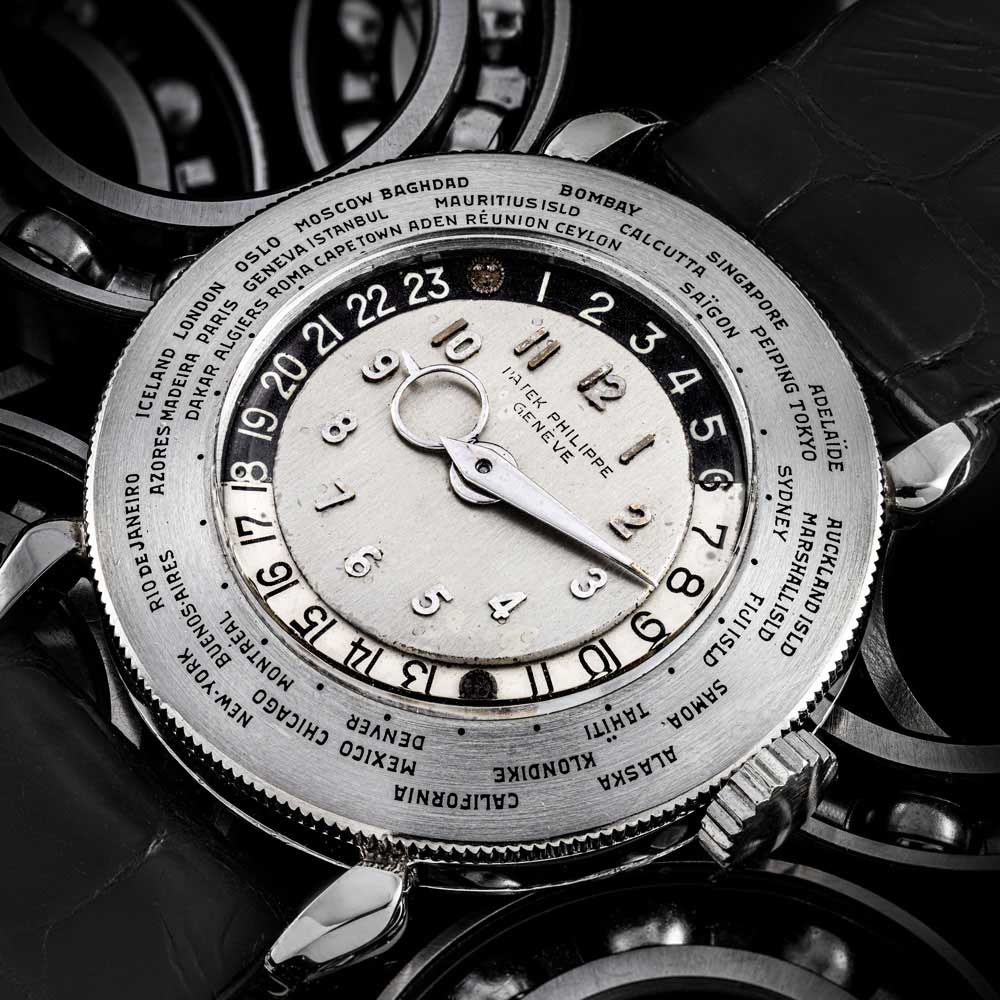
One of the most famous 1415 watches is the single platinum silver dial example, which sold at an Antiquorum auction in April 2002 for CHF 6.6 million. (Image: Christie’s)
The Legendary Patek Philippe Ref. 1415 was Gianni Agnelli’s favorite
Rather than have me tell you that the 1415 is one of the most beautiful timepieces ever created, let me instead point out that it was the watch of choice for none other than L’Avvocato himself, the man considered be the most rakish individual of the 20th century, Gianni Agnelli. Here is the famous photograph of him wearing his Patek Philippe ref. 1415 around his shirt cuff as was his custom, ensconced in the comfort of his headquarters in Turin, from which he was said to employ 3.1 percent of Italy’s industrial workforce and control 4.4 percent of the nation’s GDP in his role as the leader of Fiat. As the consummate world traveler and leading figure in the jet set — the post Second World War community of transcendently glamorous transglobal vagabonds — Agnelli understood the practicality of checking the time in all 24 zones simultaneously with a glance at his wrist.

The impeccably stylish and charming Gianni Agnelli, would always wear his Patek Philippe ref. 1415 around his shirt cuff . (Image: The Rake)
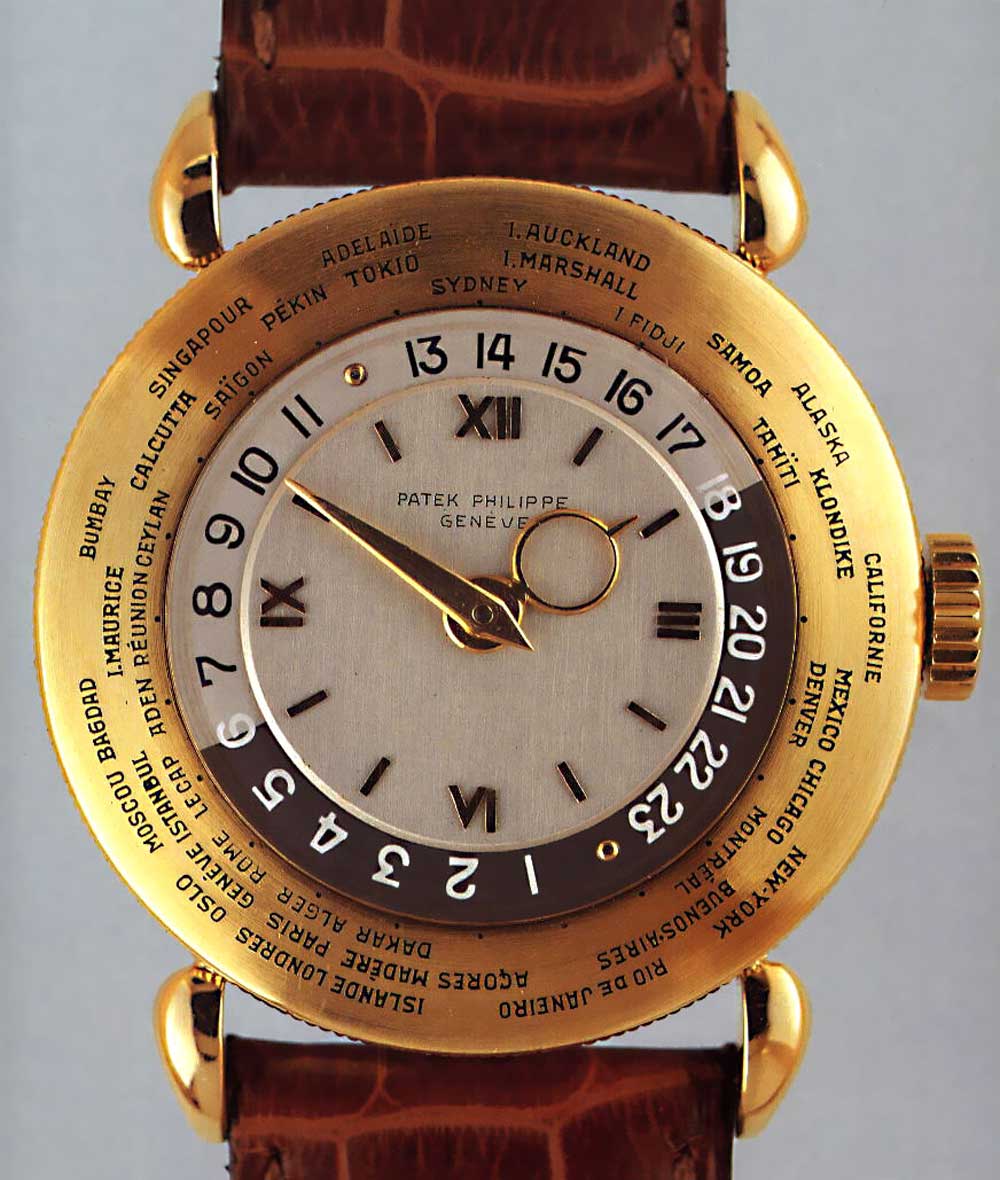
Agnelli’s Patek Philippe 1415 HU.
Why is the Patek Philippe 1415 a masterpiece?
The rationale for this was simple. The Patek Philippe reference 1415 was a masterpiece of style and function. The case made for Patek by Wenger was 31mm in diameter and featured stunning teardrop shaped soldered lugs. The bezel was carried over from the reference 542 and bore the names of 30 cities (later models showed the names of 41 cities). From what we know, watches were sent unassembled to Louis Cottier who would then add the World Time module to the base caliber and assemble the watches himself, which, to me, adds to their mythical quality, like a Stradivarius violin crafted by the hands of the master himself. One thing that Cottier had a passion for was watch hand design and crafting. He loved them and designed some truly ornate and beautiful ones for the 1415. According to lore, it was Cottier who cut these hands himself. Some of the most distinct are Cottier’s circular or fleur-de-lys hour hand usually combined with a sword shaped minute hand. Indexes could be Roman, Arabic or even Breguet. Surrounding the inner dial is the 24-hour ring that is further demarcated into day and night hours and features either a small sun and moon icon or two applied gold dots for noon and midnight. Inside the watch is the Patek caliber 12-120 HU. The watch was made in around 115 pieces and various types of dials. In one instance, the watches came with either gold or silver colored dials, while the second version came with stunning cloisonné enamel dials depicting maps crafted by famous enamelers such as Nelly Richard and Marguerite Koch of Stern Frères, who were two of the most brilliant artisans of this métier.
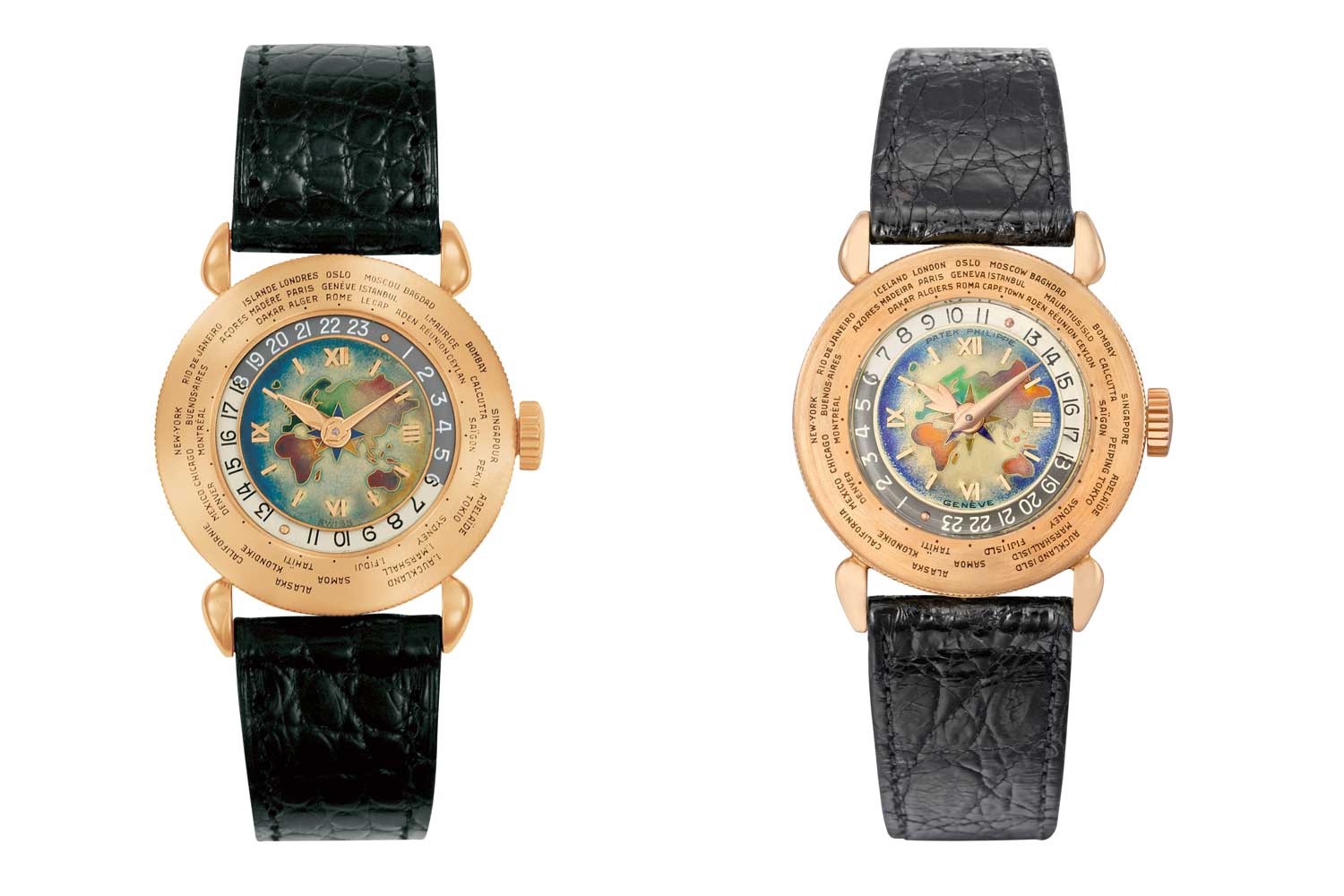
Louis Cottier designed some truly ornate and beautiful hands for 1415. Some of the most distinct are Cottier’s circular or fleur-de-lys hour hand usually combined with a sword shaped minute hand. (Images : Patek Philippe)
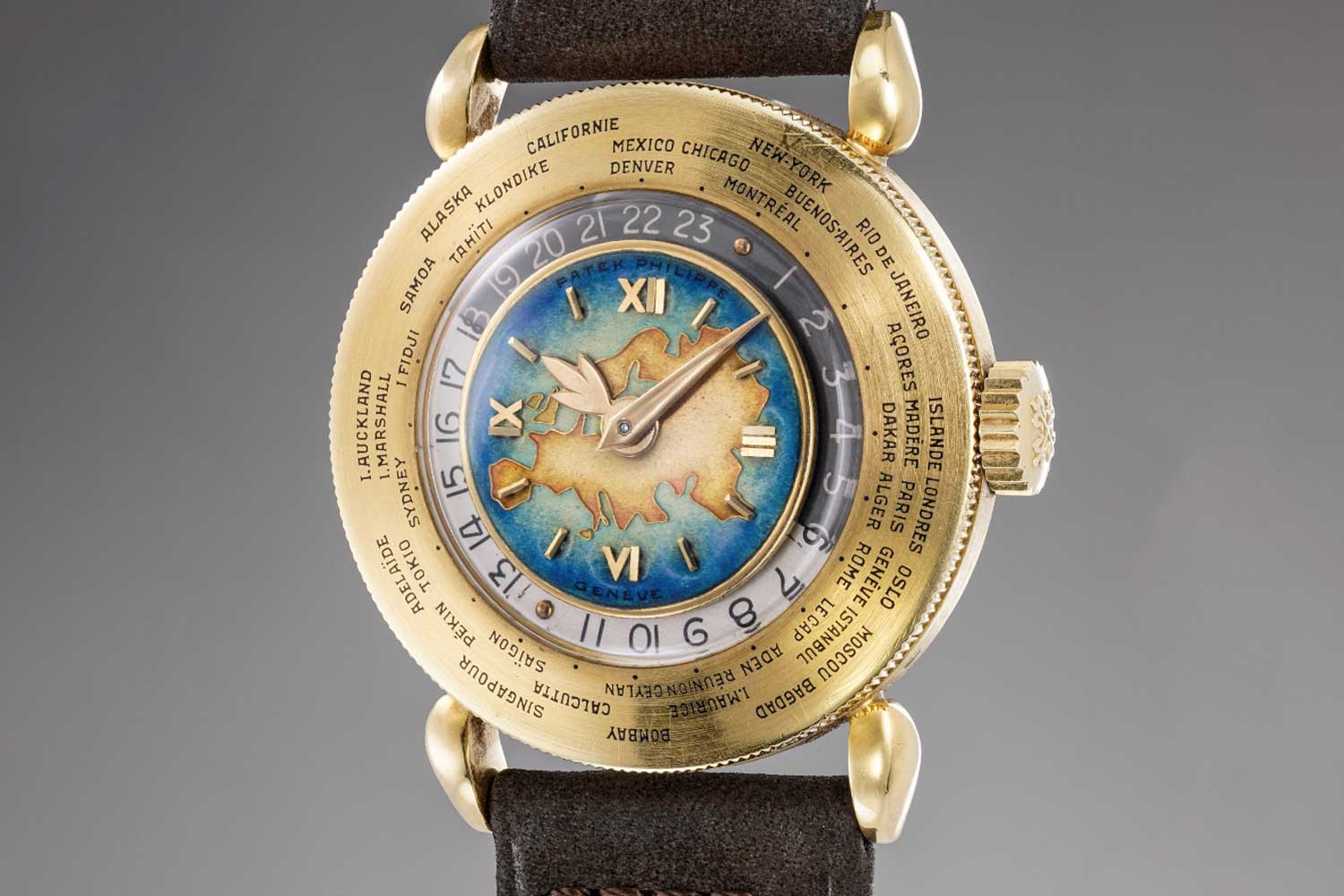
Most of the references 1415 with cloisonné enamel dials feature the European continent with only two known examples featuring a Euro-Asian or “Eurasia” map. Seen here is a rare example of the "Eurasia" polychrome cloisonné enamel dial ref. 1415 sold by Phillips in 2018 (image: Phillips)
Reference 1415, a watch that broke numerous auction records
Most of the references 1415 with cloisonné enamel dials feature the European continent with only two known examples featuring a Euro-Asian or “Eurasia” map. Note that the enamel dial watches could also feature a fleur-de-lys hour hand or other symbols such as the sun — a testament to Cottier’s creativity. One of the most famous 1415 watches is the single platinum silver dial example, which sold at an Antiquorum auction in April 2002 for CHF 6.6 million. Part of the reason for the staggering price was a heated bidding between an Asian tycoon and Philippe Stern himself, who wanted the watch for the Patek museum. This unicorn watch was owned by Italian mega dealer Davide Parmegiani from the ’90s until he decided to place it up for auction. To this day, he considers this one of his biggest results. But life is not without its bittersweet moments. This same watch was placed for auction by the tycoon’s family at the latest Christie’s Hong Kong auction in May. Though Parmegiani tried to win it, he missed out despite the watch being hammered for a mere HKD 14.6 million (approximately CHF 1.6 million), which is considerably undervalued. By all accounts, he was rather dejected by this.
1939: Ref. 1416
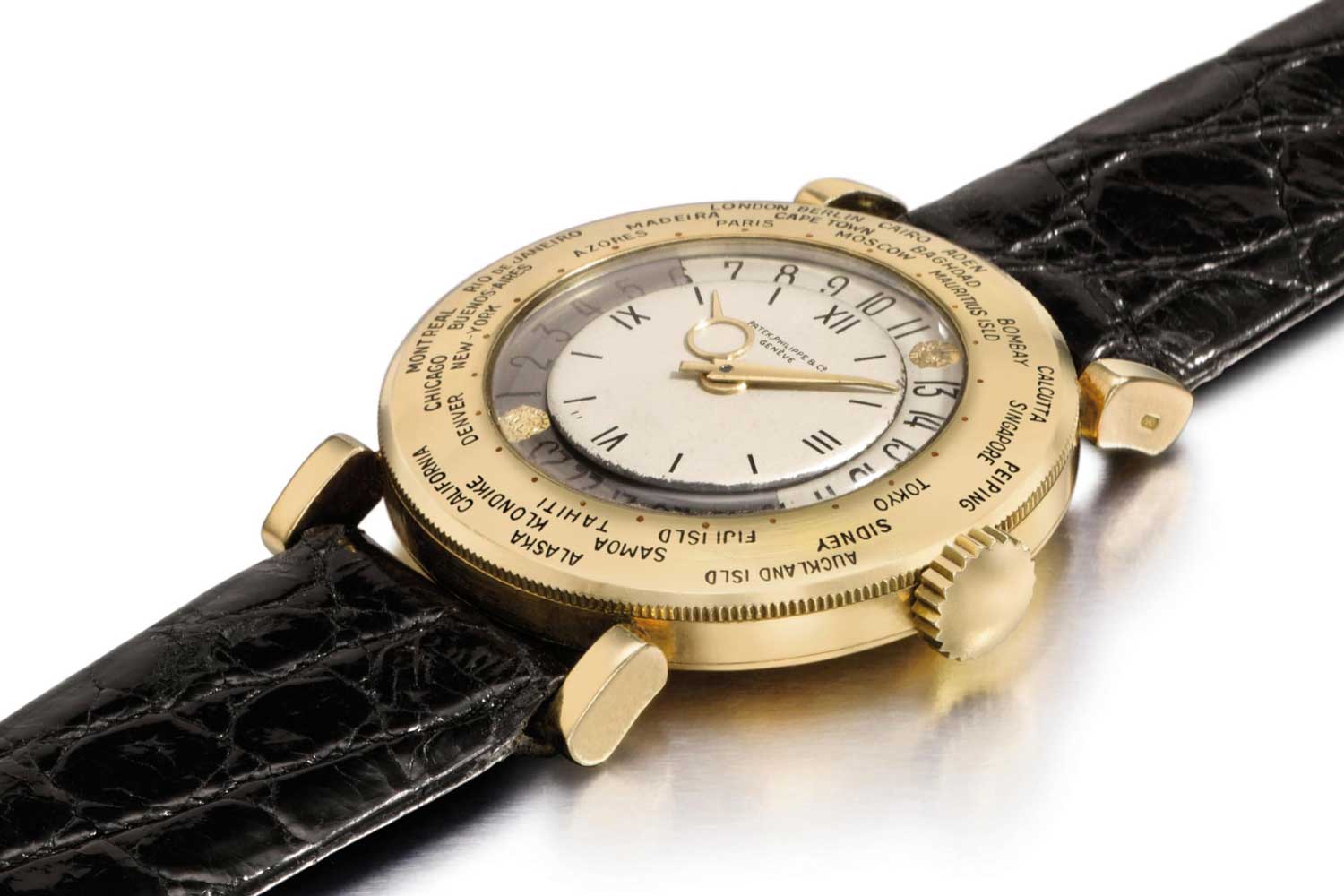
Patek Philippe ref. 1416 looks almost exactly like the ref. 1415 except for its straight lugs, the only difference really being that the 1416 had an inner bezel that was slightly larger, 20.8mm vs 20.5mm. (Image: Christie’s)
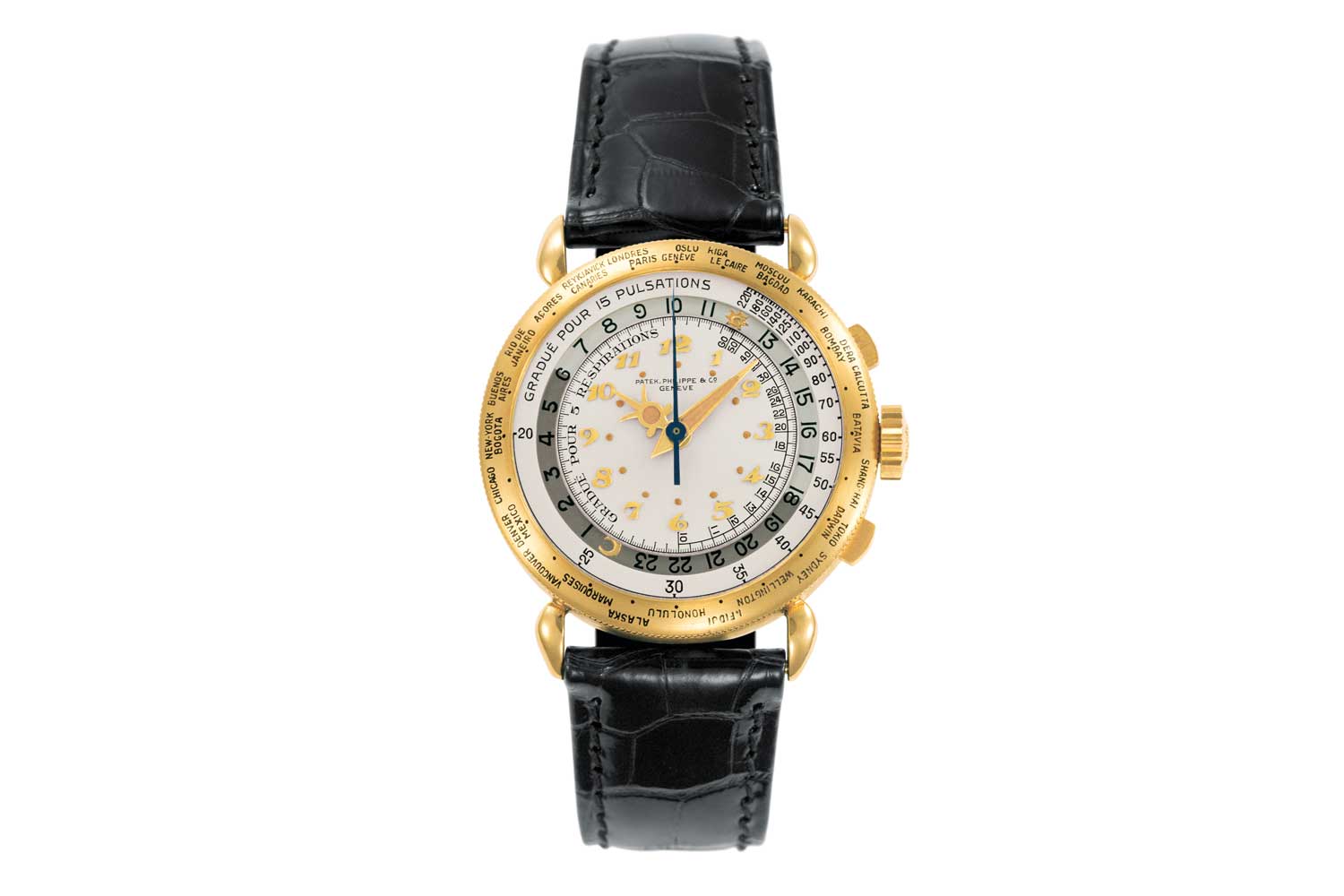
The ref. 1415-1 pièce unique made for Dr. P. Schmidt is an incredible World Timer with pulsometer chronograph and the precursor to the reference 5930 World Time Chronograph. (Image: Patek Philippe)
1940: Ref. 1415-1 World Time Chronograph Pulsometer Pièce Unique
When I am asked what is the one World Timer I would want to own, it would be the 1415-1 pièce unique made for Dr. P. Schmidt, which is an incredible World Timer with pulsometer chronograph and the precursor to the reference 5930 World Time Chronograph. I have no idea who P. Schmidt is but what an amazing individual he must have been to order this pièce unique which required a complete redesign of the existing case and dial. You can see that although it is still a 1415, in particular, related to its teardrop shaped lugs, the bezel engraved with the cities is much thinner. That is so as to accommodate the pulsometer scale which is nestled in a ring between the bezel and the 24-hour ring. The movement driving this watch is, of course, the caliber 13” CH HU which is featured in Patek Philippe’s iconic reference 130 chronograph and later in the famous 1518. But note that the minute subdial has been omitted so as to keep the central dial clear and legible (and very possibly because the pinion of that counter would have conflicted with the 24-hour ring). This means that this chronograph is only useful as a pulsometer, an instrument used by doctors to rapidly measure your heart rate, in this case, within 15 beats.
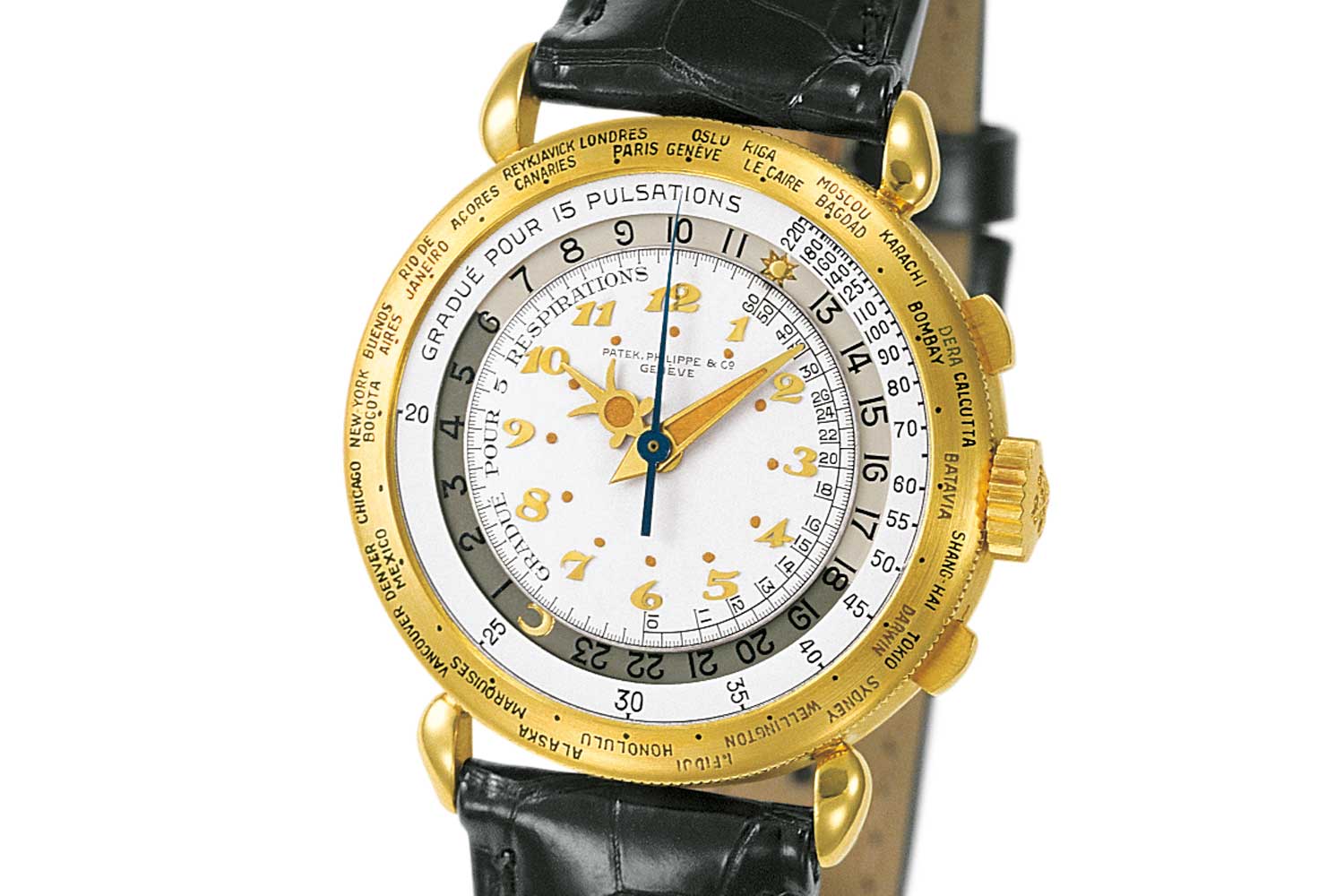
The minute hand and dots around the inner dial and the centre of the sunray motif hour hand on ref. 1415-1 are luminous.
1953: Ref. 2523
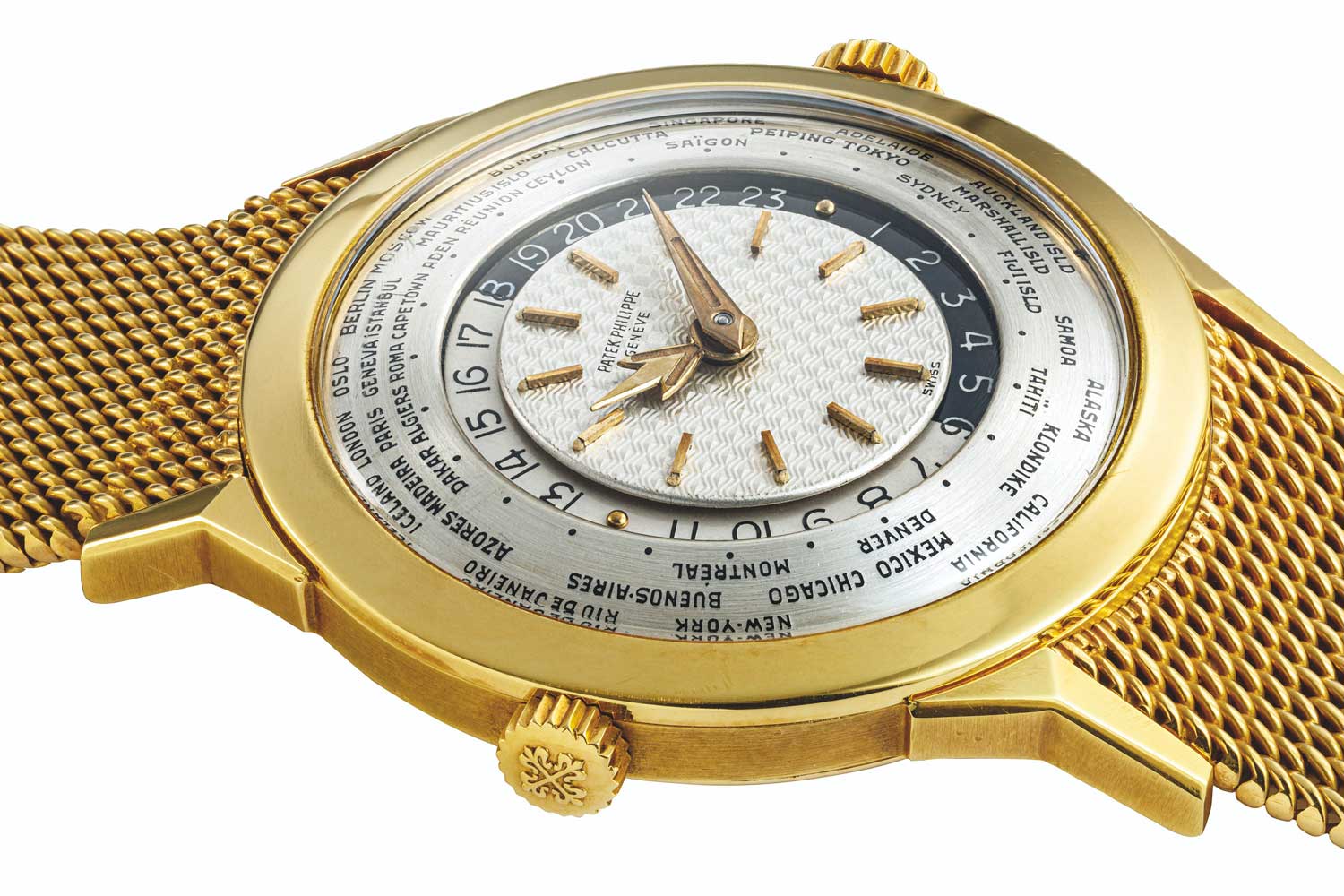
Introduced in 1953, the ref. 2523 features a round 35.5mm case, a significant increase in size from the 31mm ref. 1415. Its faceted lugs create a strong sense of visual dramatics. (Image: Christie’s)
Patek Philippe’s 2523 is simply beautiful
One of Louis Cottier’s most admirable qualities was his desire to improve and evolve his complications. While the initial Patek Philippe World Timers featured engraved bezels which were manually turned to any new local city, in 1953, Cottier and Patek unveiled a stunning watch featuring the all-new caliber 12-400 HU, with a second smaller crown that turned an inner rotating city disk. The watch this new complication came in was an absolute masterwork of design and featured stunning faceted lugs that were made for Patek by Gerlach. Yet, strangely, despite its unique beauty, the reference 2523 didn’t sell particularly well and, as a result, were made in very small quantities. The number of watches made is a topic of debate but the total for the 2523 and 2523/1, according to Patek Philippe, can be placed at less than 40 in yellow gold, more than 10 in rose gold and just one in white gold.
The Exquisite 2523 Watch: A Timeless Blend of Beauty and Functionality
The 2523 is simply a beautiful watch. It features a round 35.5mm case, a significant increase in size from the 31mm ref. 1415. Its faceted lugs create a strong sense of visual dramatics. They are faceted across two axes, both horizontally and vertically. While the crown on the right used for winding and time setting is large, a more diminutive crown appears on the left to operate the city disk that now appears for the first time inside the case of the World Timer wristwatch. As with its predecessors the 24-hour ring framing the periphery of the inner dial is demarcated into night and day hours and is permanently synchronized to the time on the central hands. As before, the hour hands of these watches come in a rich variety of ornate motifs expressing Cottier’s creativity with design. It is not clear why the 2523 didn’t do well commercially. If I were to hazard a guess, I would say it was because the world at the time was swept up in jet age modernism. The first civilian jet flights were made available in 1952 on the de Havilland Comet which flew from London to Johannesburg. The ’50s saw a massive upheaval and dynamic shift from the old world to the new. Probably watches like the Rolex GMT-Master 6542 created at the behest of Pan Am pilots, that would be launched a year later and that allowed for the rapid selection of time in a secondary zone, were more symbolic of the age of rock and roll, Abstract Expressionism, commercial jet flights and ’50s modernism. Conversely, the 2523 seemed charmingly old-world with its enamel or guilloché dial. Probably as an actual utilitarian device, it suffered from the fact that from March to November, it did not accurately depict the time in cities with daylight saving.

This ref. 2523 with a stunning double-signed dial with blue enamel at the center was sold by Christie’s in 2019 for a staggering USD 9 million. (Image: Christie’s)
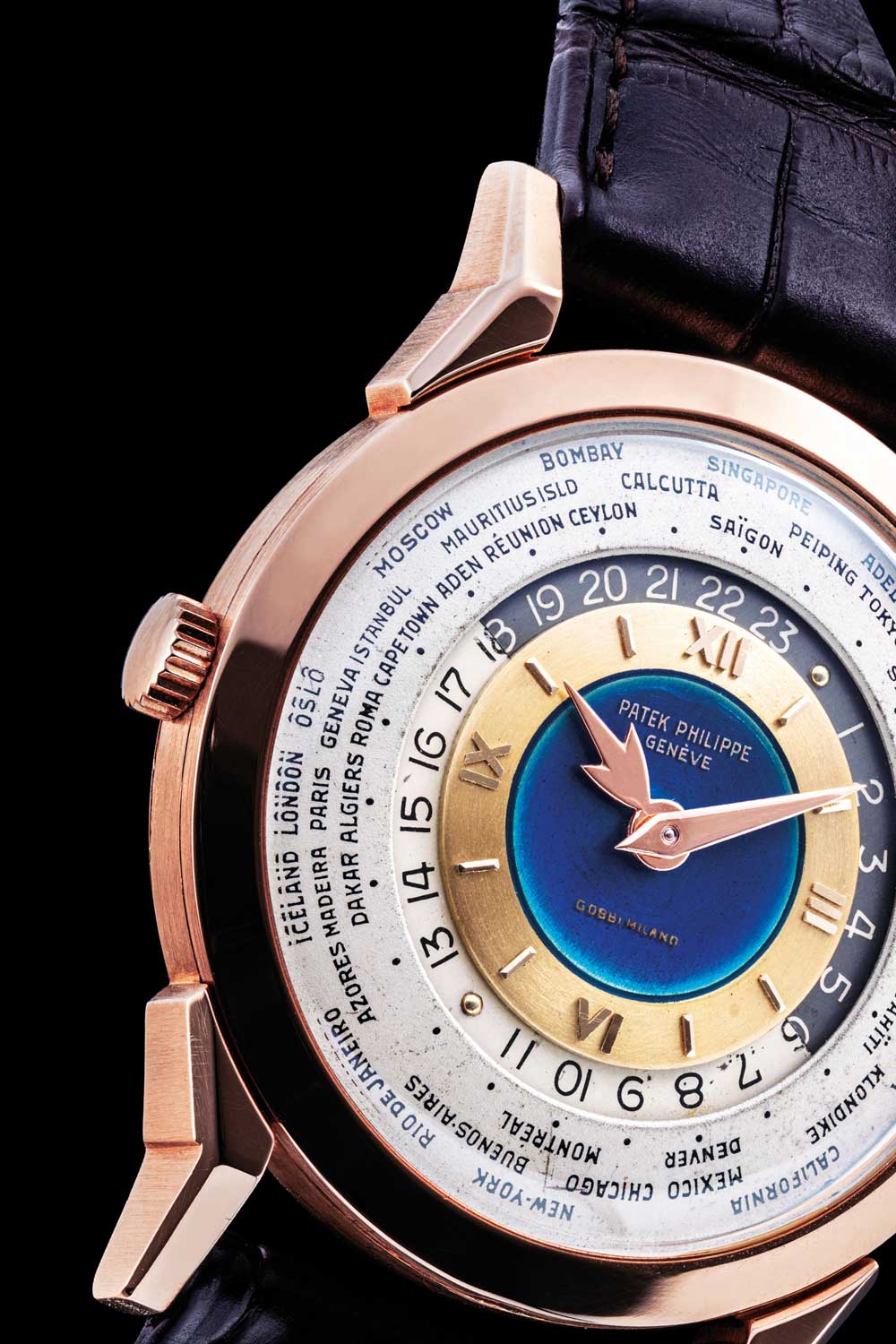
This ref. 2523 with a stunning double-signed dial with blue enamel at the center was sold by Christie’s in 2019 for a staggering USD 9 million. (Image: Christie’s)
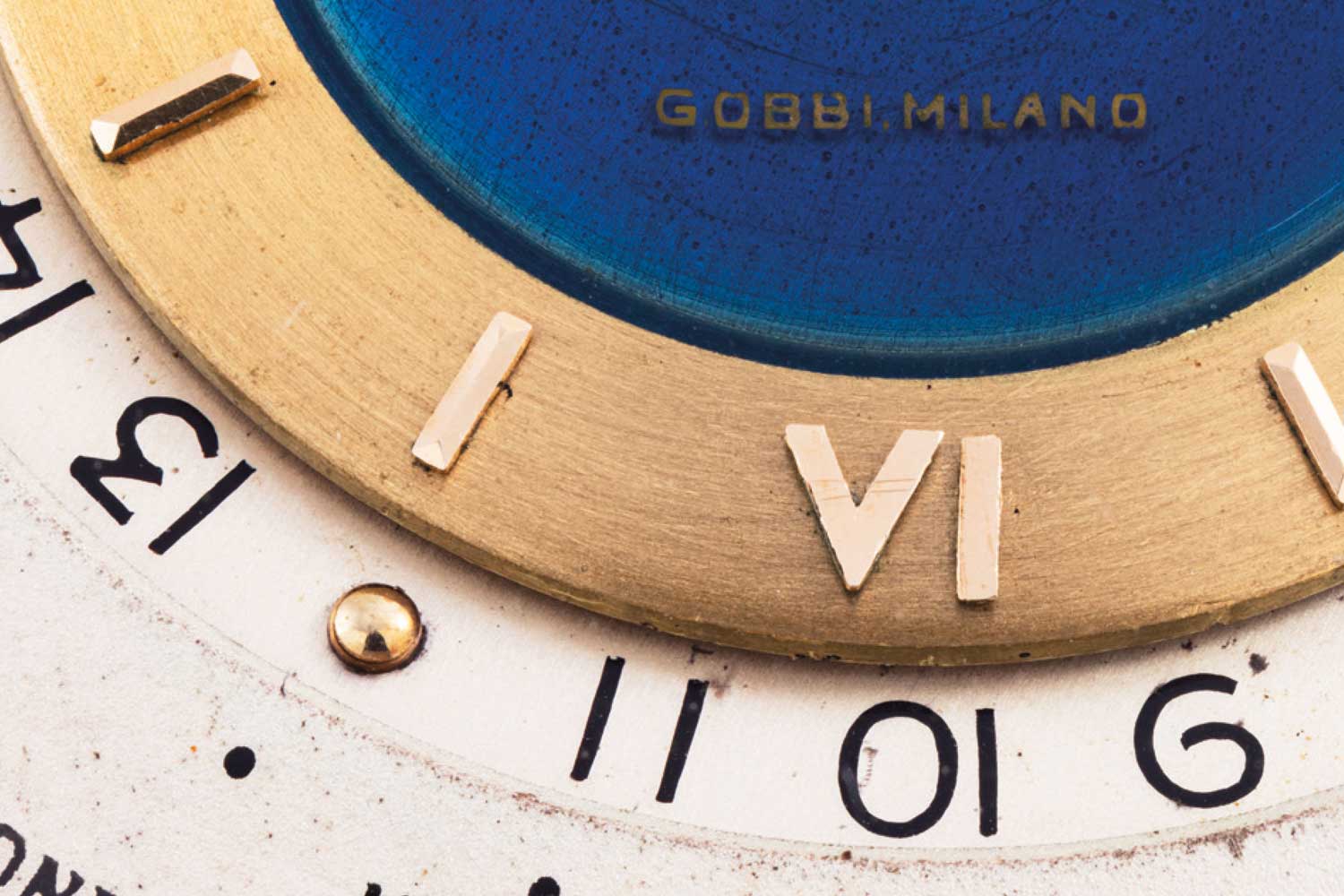
This ref. 2523 with a stunning double-signed dial with blue enamel at the center was sold by Christie’s in 2019 for a staggering USD 9 million. (Image: Christie’s)
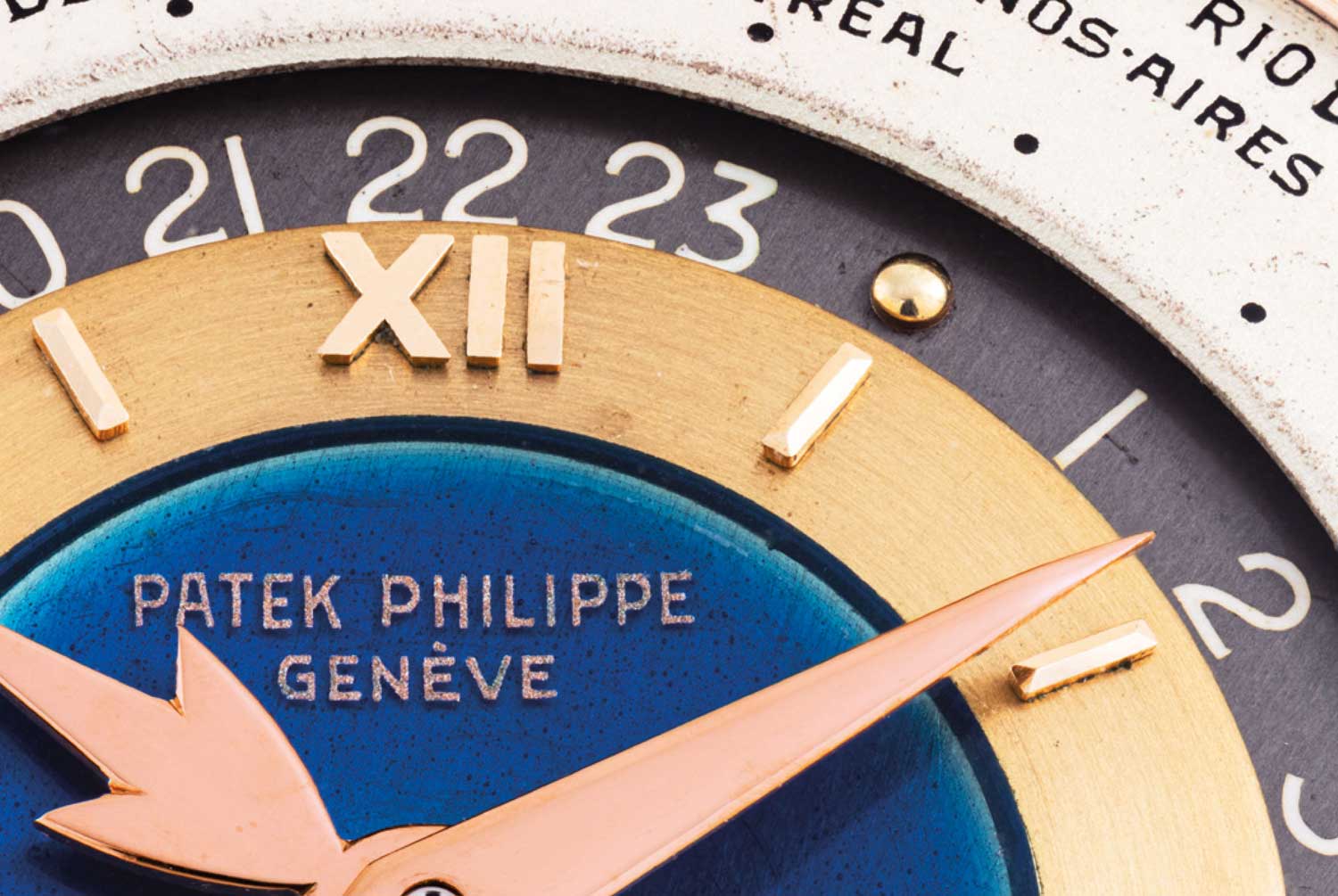
This ref. 2523 with a stunning double-signed dial with blue enamel at the center was sold by Christie’s in 2019 for a staggering USD 9 million. (Image: Christie’s)
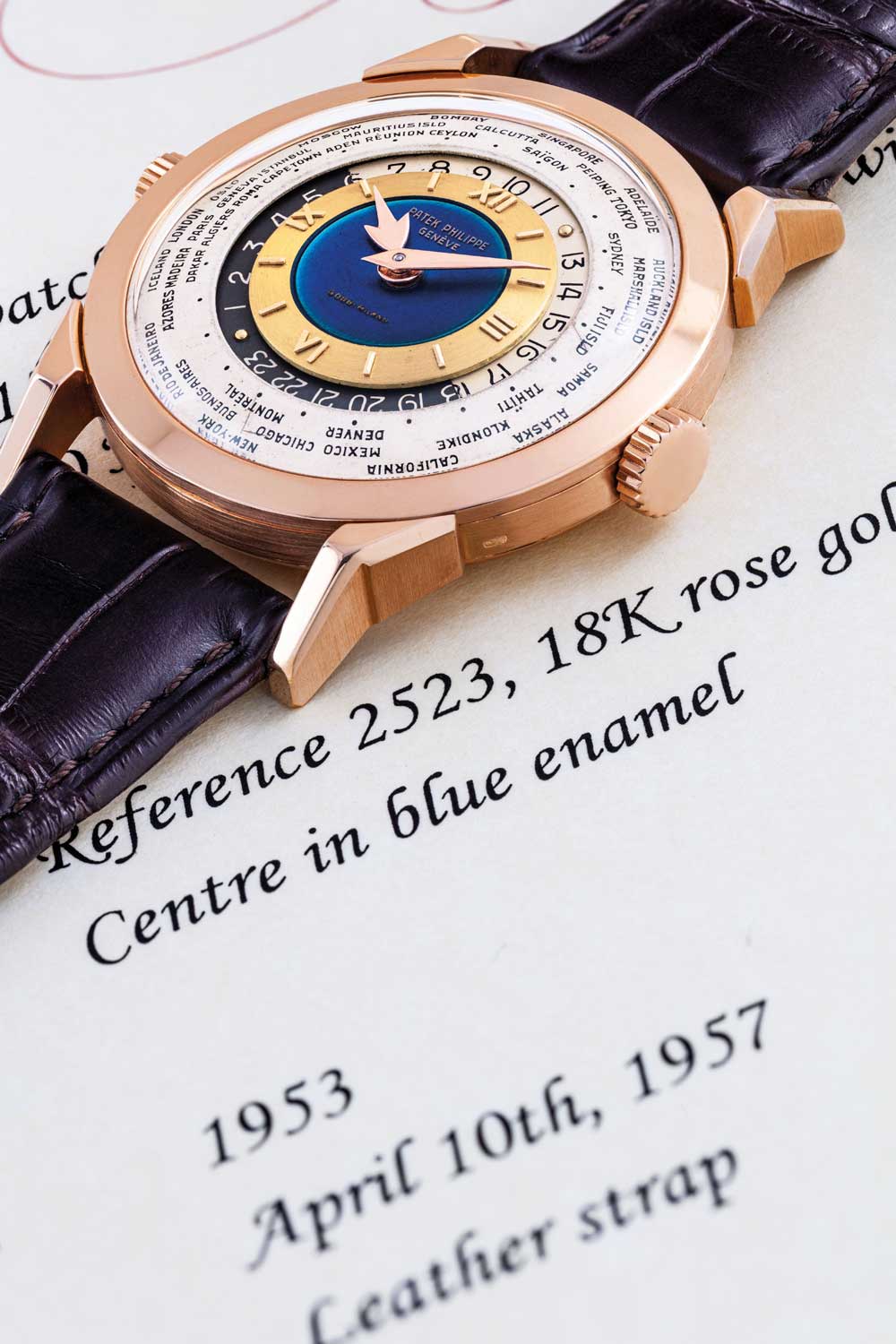
This ref. 2523 with a stunning double-signed dial with blue enamel at the center was sold by Christie’s in 2019 for a staggering USD 9 million. (Image: Christie’s)
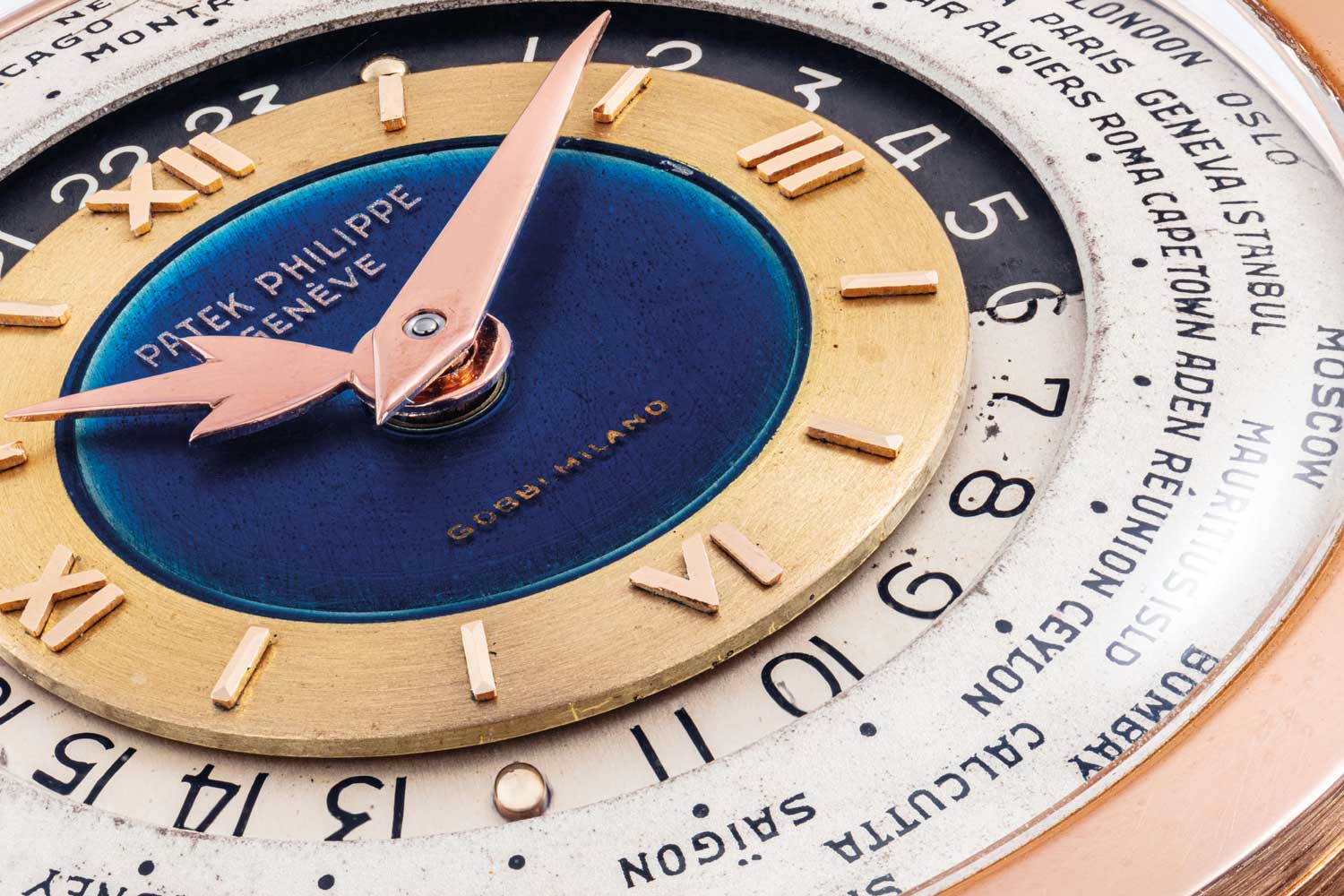
This ref. 2523 with a stunning double-signed dial with blue enamel at the center was sold by Christie’s in 2019 for a staggering USD 9 million. (Image: Christie’s)
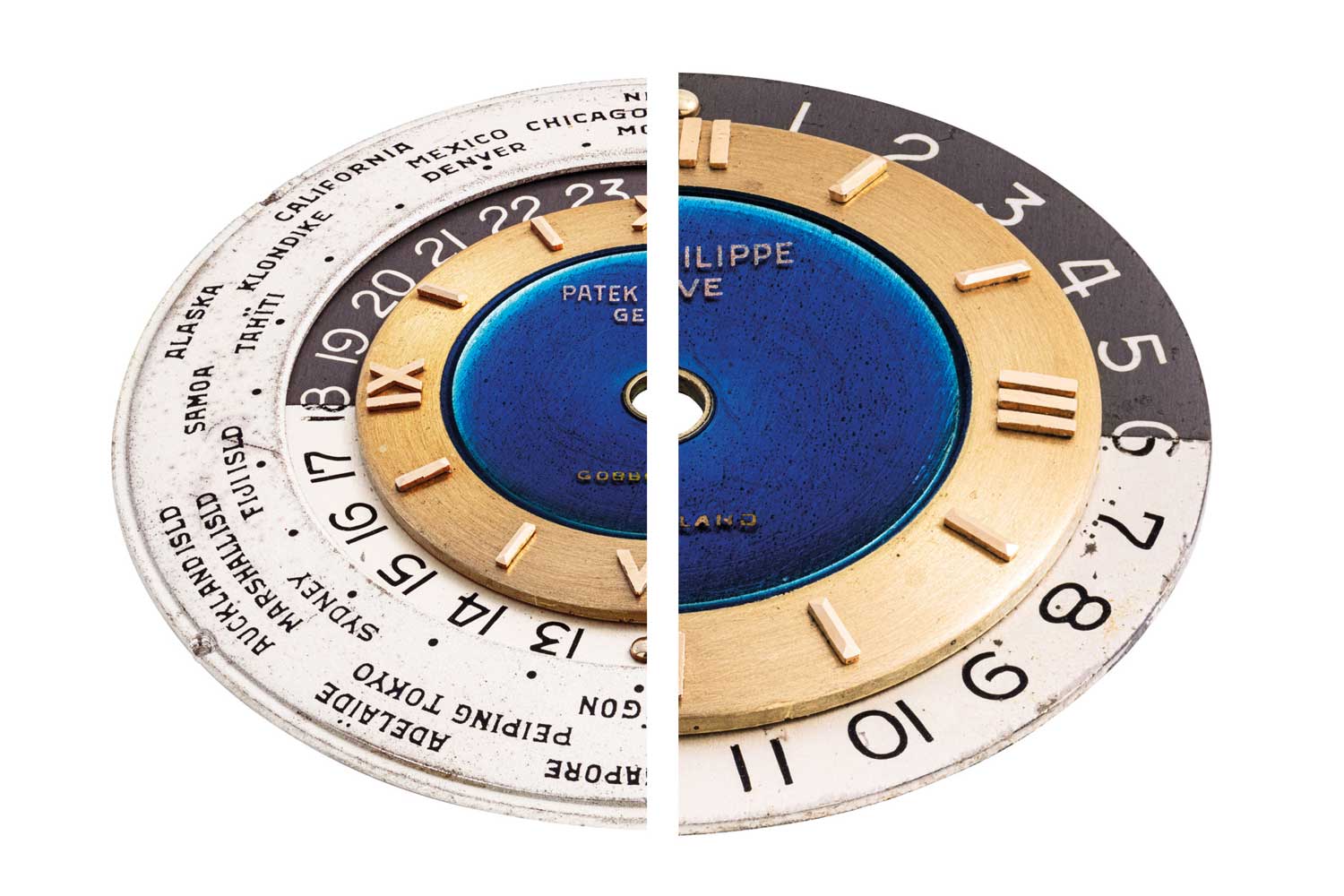
This ref. 2523 with a stunning double-signed dial with blue enamel at the center was sold by Christie’s in 2019 for a staggering USD 9 million. (Image: Christie’s)
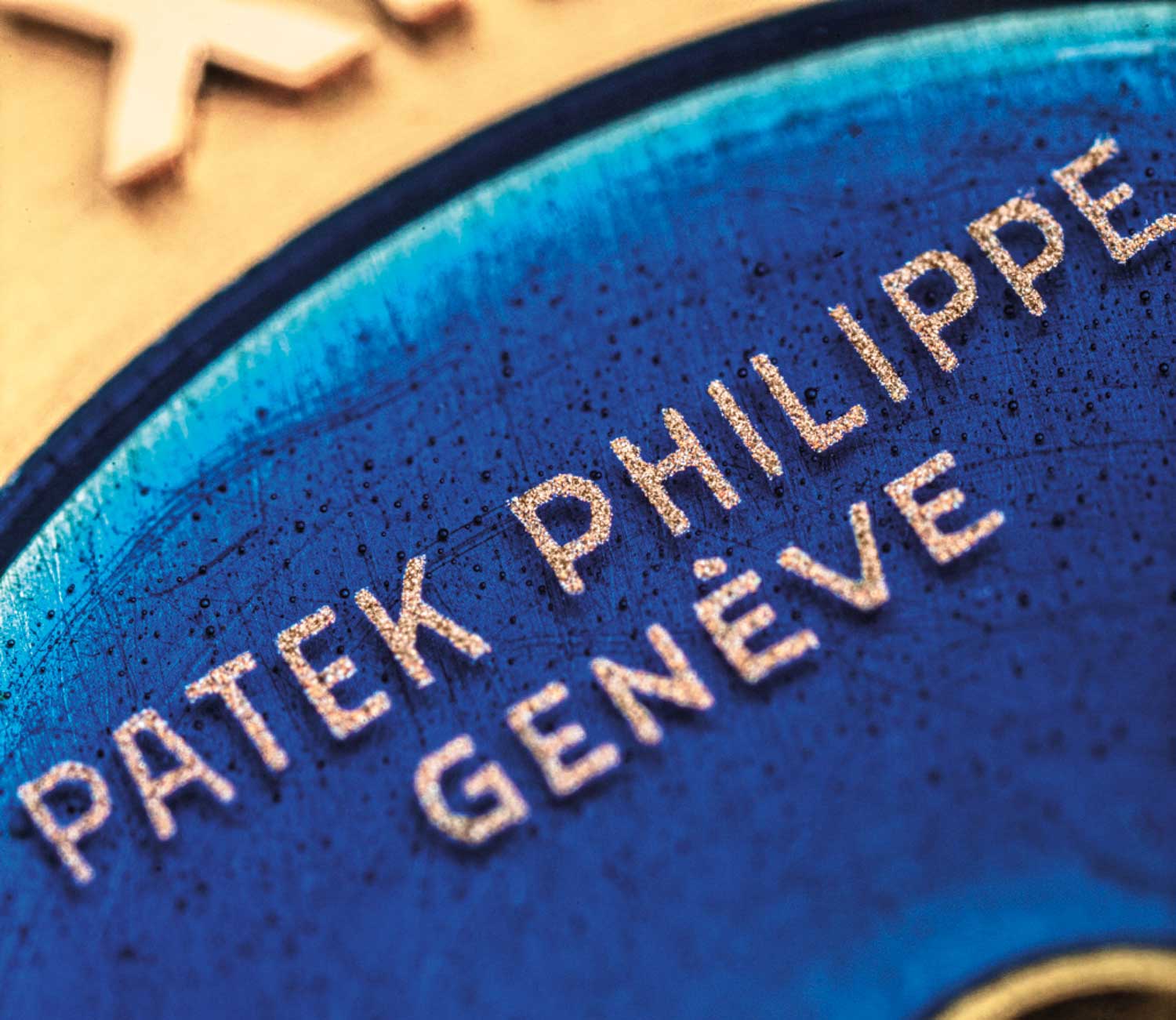
This ref. 2523 with a stunning double-signed dial with blue enamel at the center was sold by Christie’s in 2019 for a staggering USD 9 million. (Image: Christie’s)
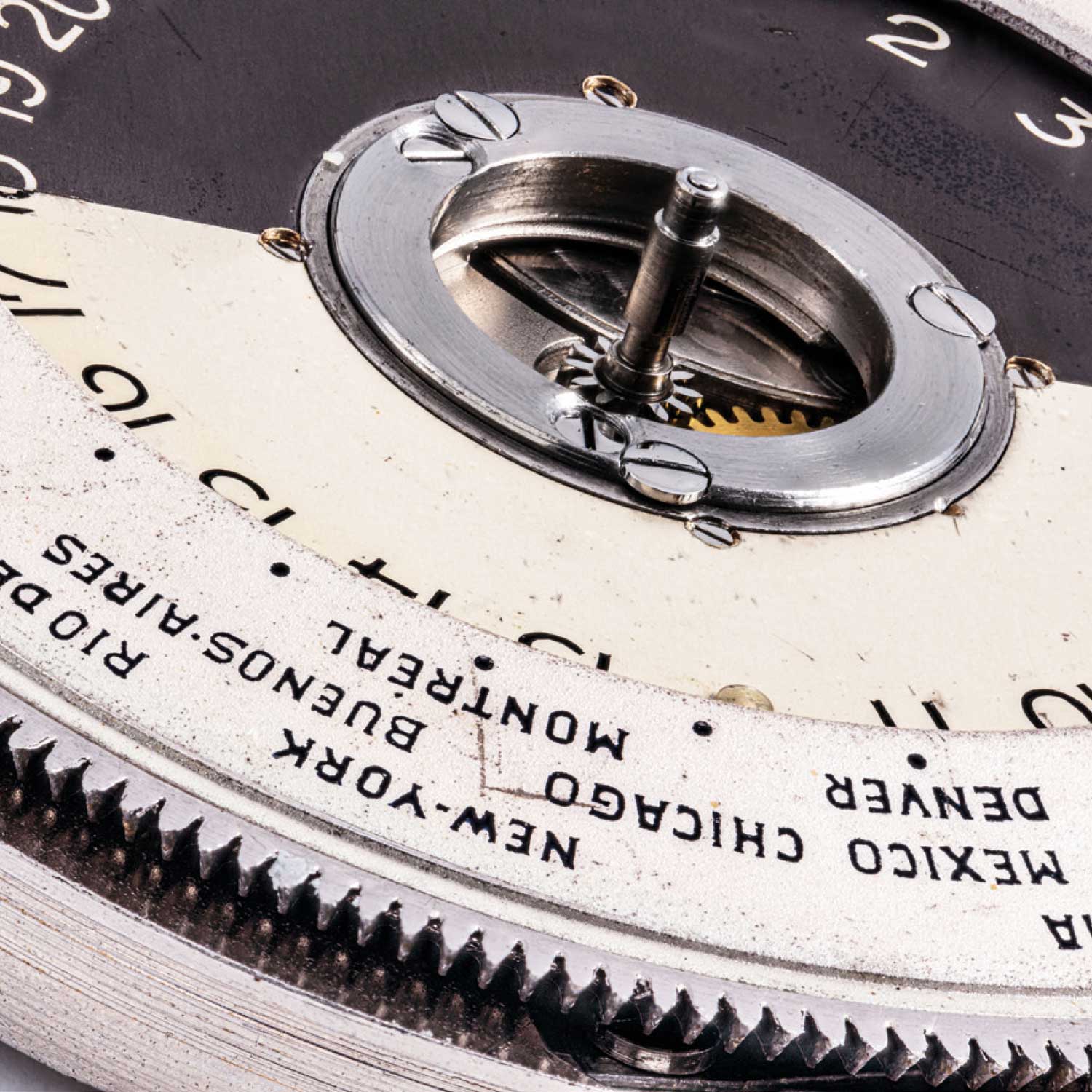
This ref. 2523 with a stunning double-signed dial with blue enamel at the center was sold by Christie’s in 2019 for a staggering USD 9 million. (Image: Christie’s)
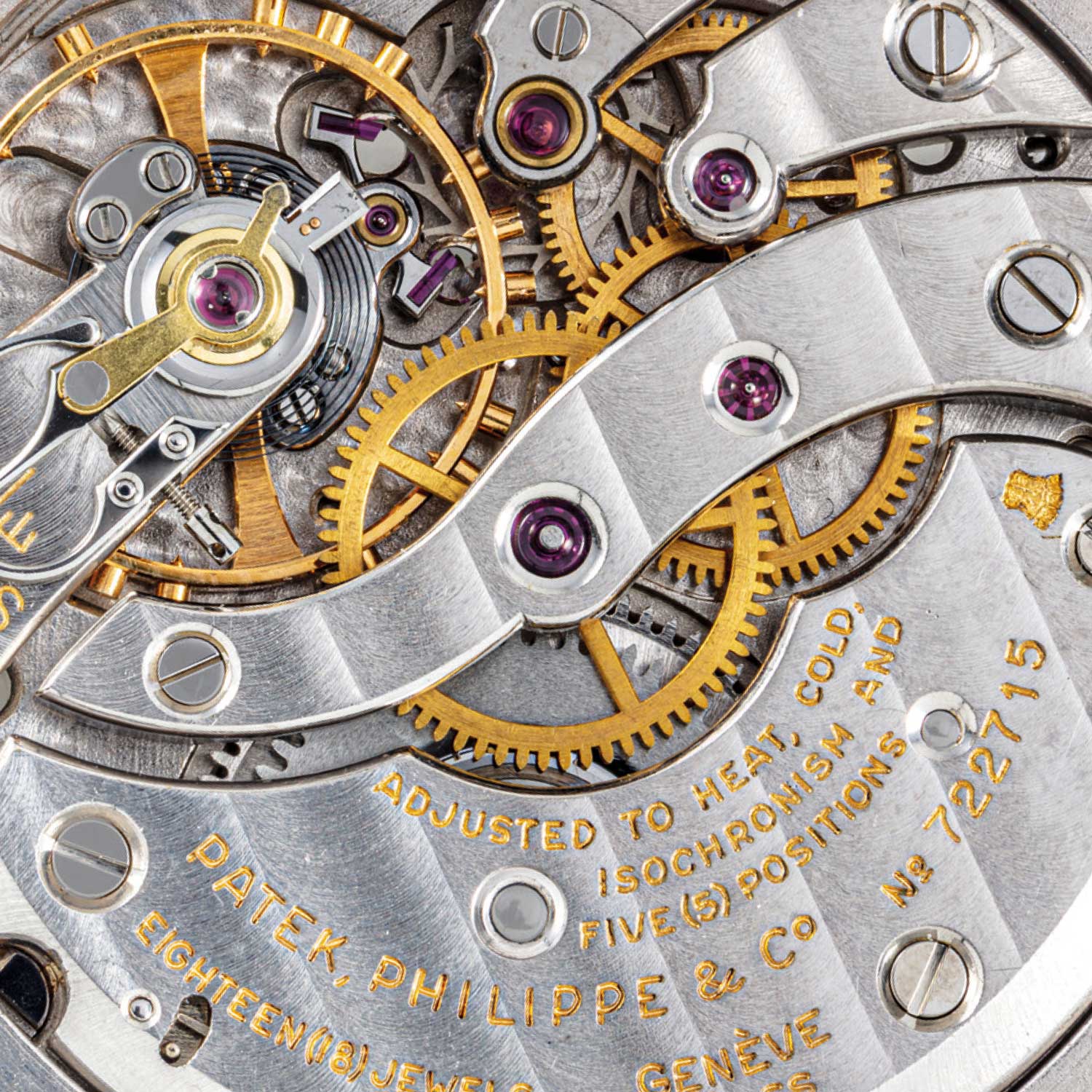
This ref. 2523 with a stunning double-signed dial with blue enamel at the center was sold by Christie’s in 2019 for a staggering USD 9 million. (Image: Christie’s)
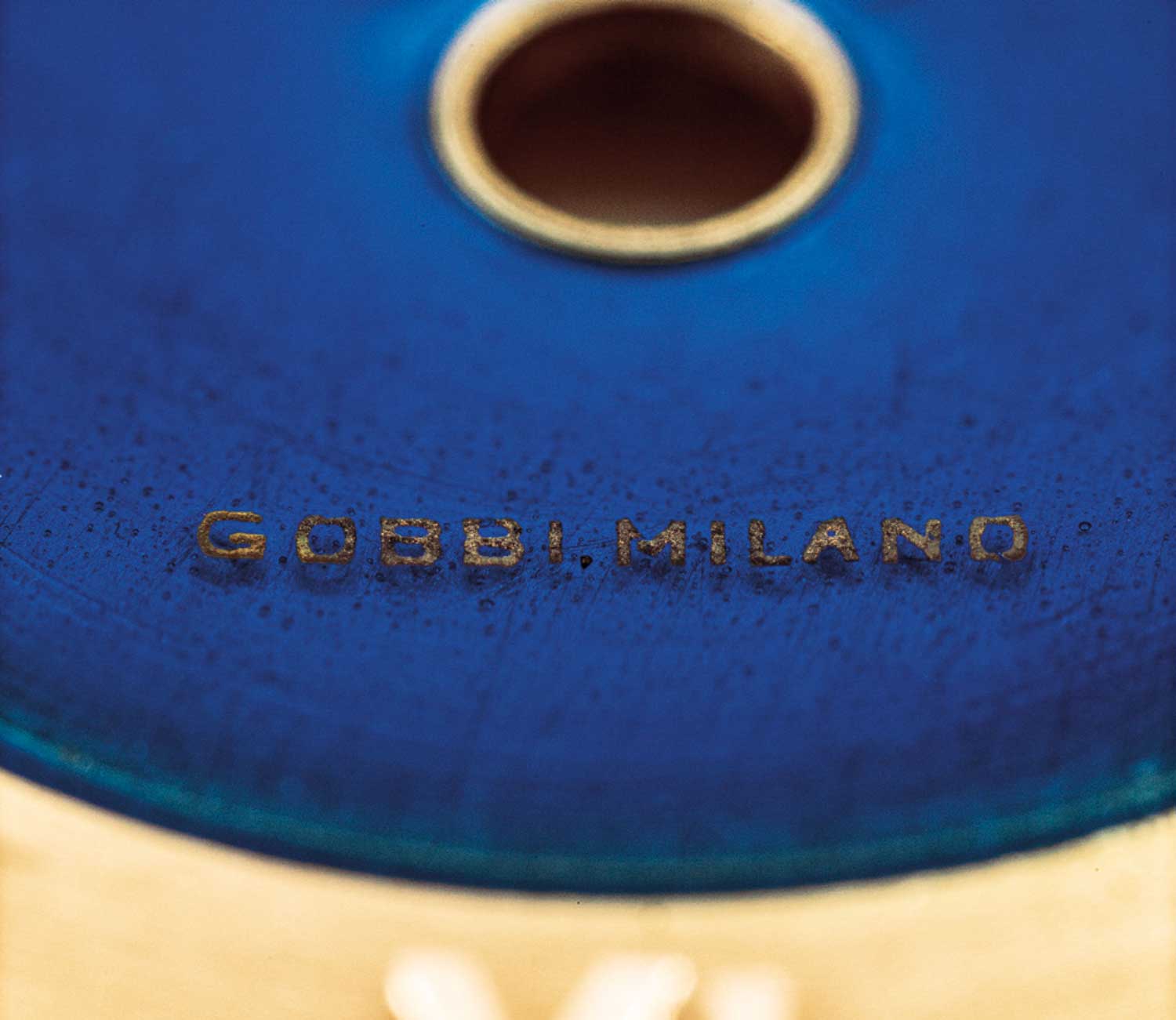
This ref. 2523 with a stunning double-signed dial with blue enamel at the center was sold by Christie’s in 2019 for a staggering USD 9 million. (Image: Christie’s)
Patek reference 2523, the end of an era of ultimate elegance in travel
Breaking auction records
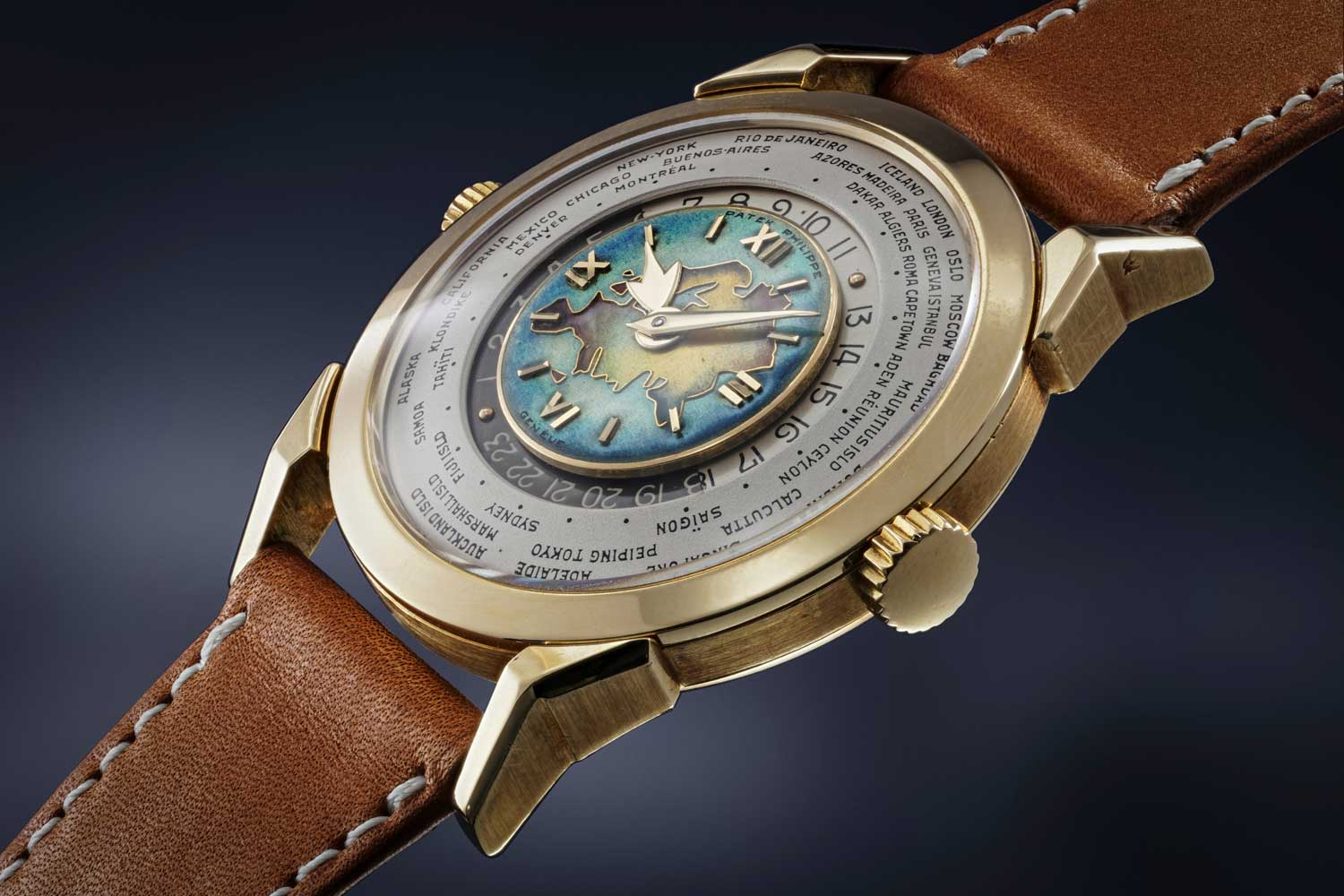
In 2021, at Phillip’s May auction in Geneva, a previously unknown 2523 “Eurasia” in yellow gold was sold for CHF 7 million. (Image: Phillips)
The Evolution of Guilloché: From the Pioneering 2523 to the Modern World Timers (5110, 5130, 5230)
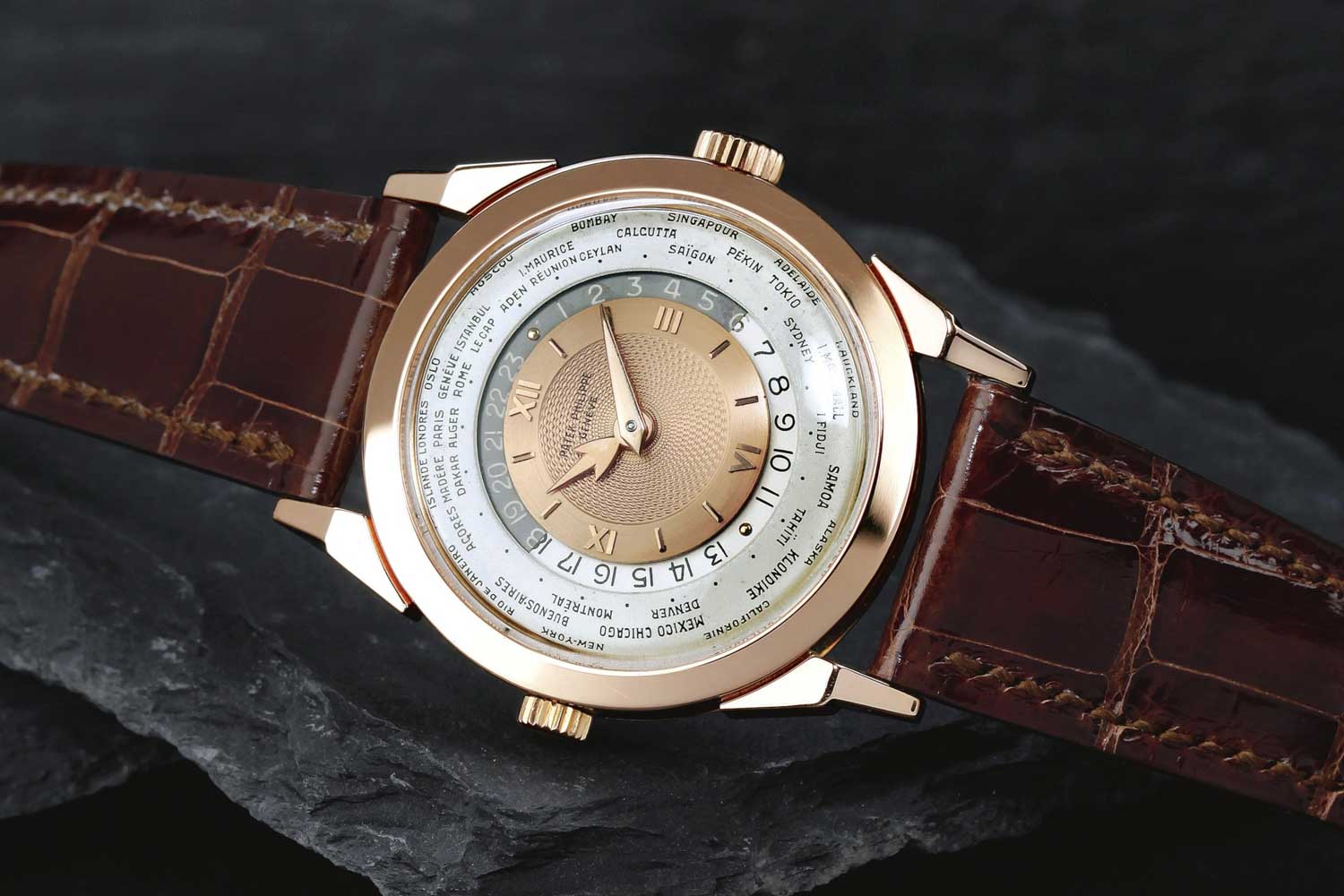
An 18k pink gold version of the beautiful ref. 2523 (Image: Sothebys)
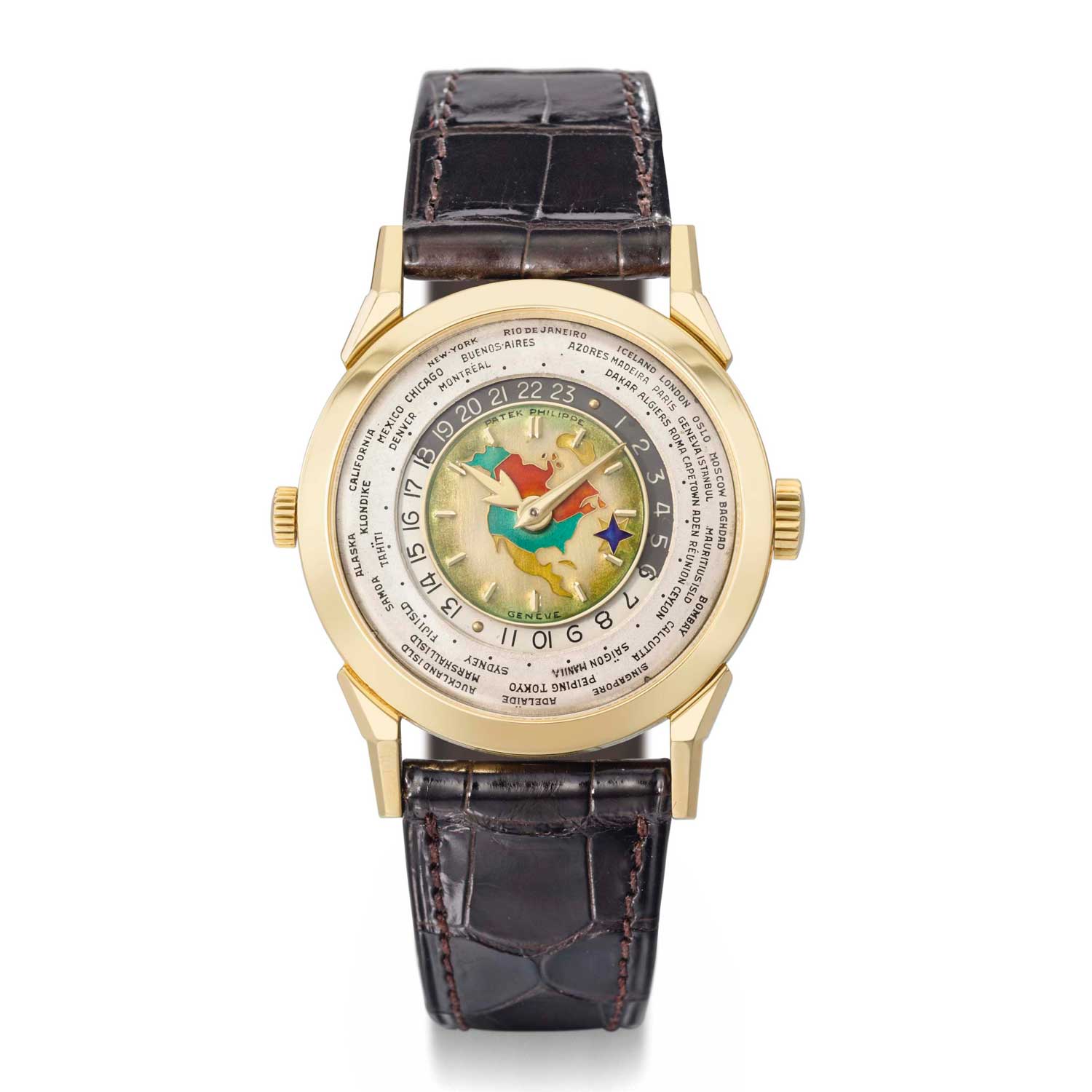
Ref. 2523 with a cloisonné enamel dial depicting the North American continent (Image: Christie’s)
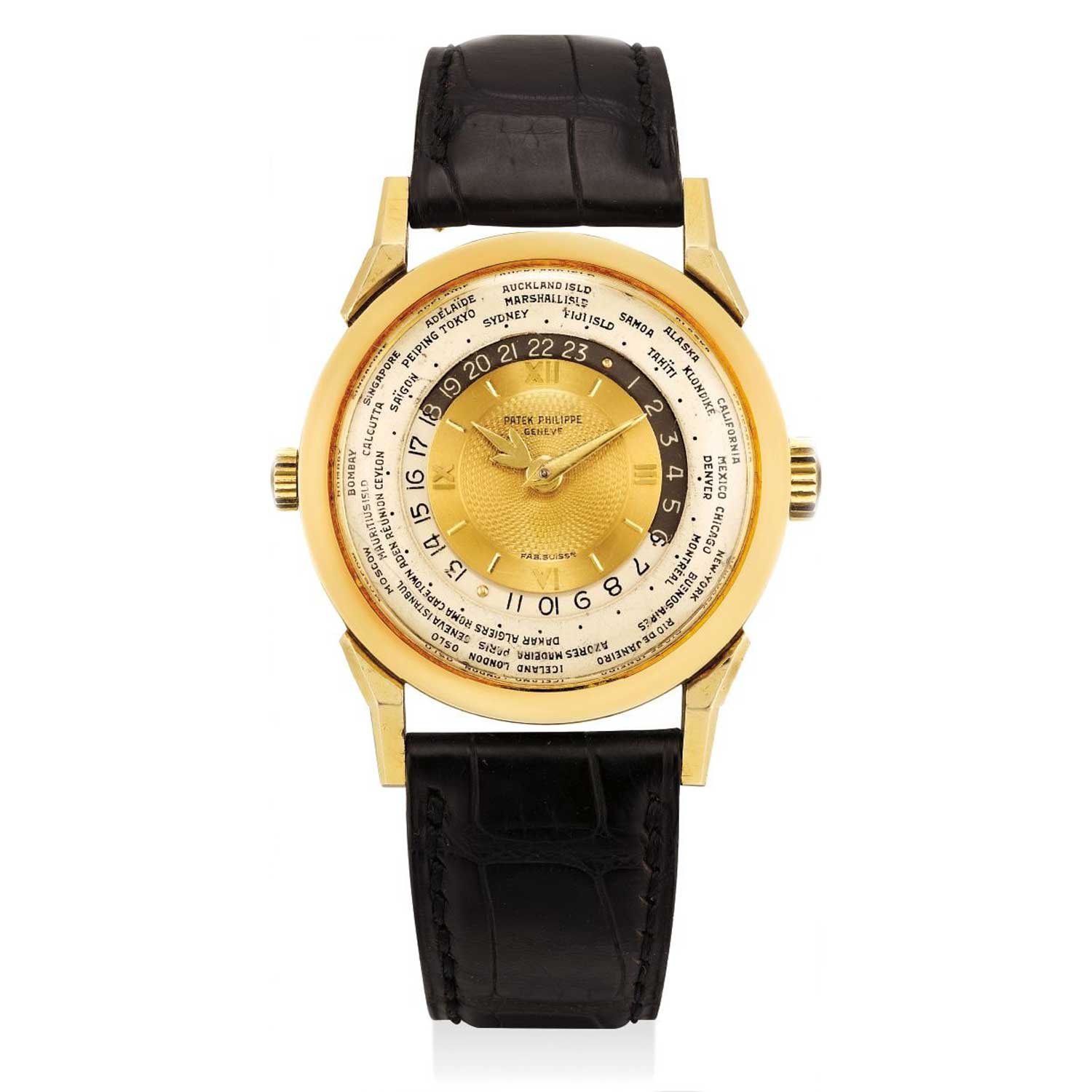
A ref. 2523 in yellow gold from 1953 (Image: Phillips)
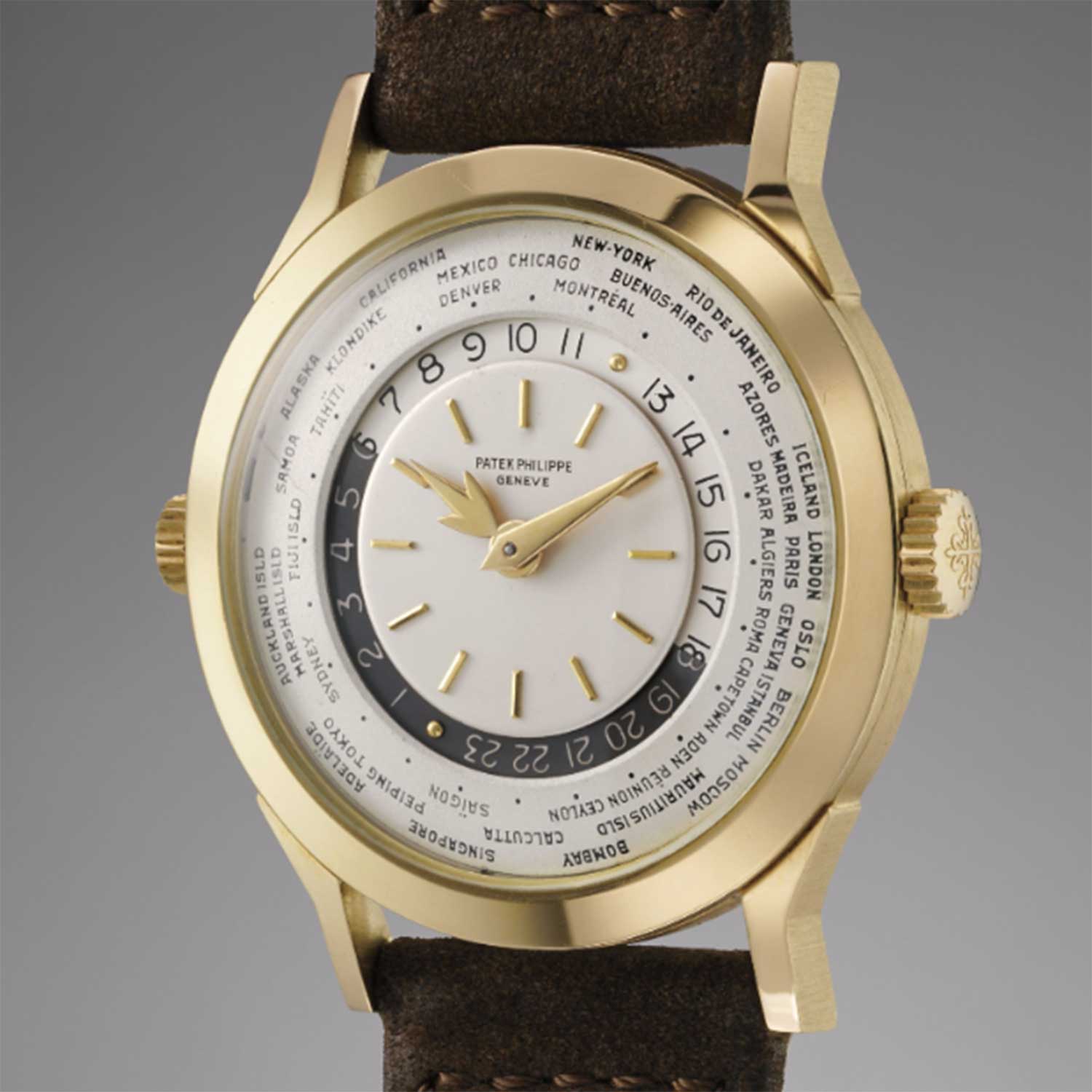
In 1962, Patek Philippe modified the 2523 into the 2523-1 (Image: Phillips)
A Note on the Patek Philippe Travel Time
Henri Stern knew Patek Philippe had to innovate
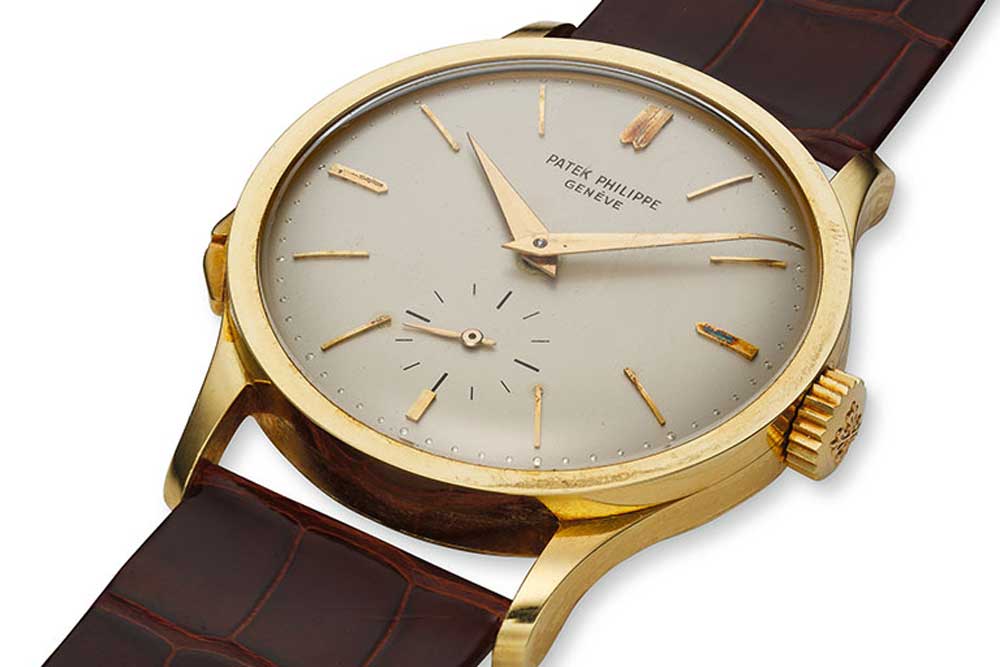
Patek Philippe ref. 2597 featured two pushers subtly integrated into the left of the case that would advance the hour hand either backwards or forwards with a single jump without affecting the timing accuracy of the watch. (Image: Collectability)
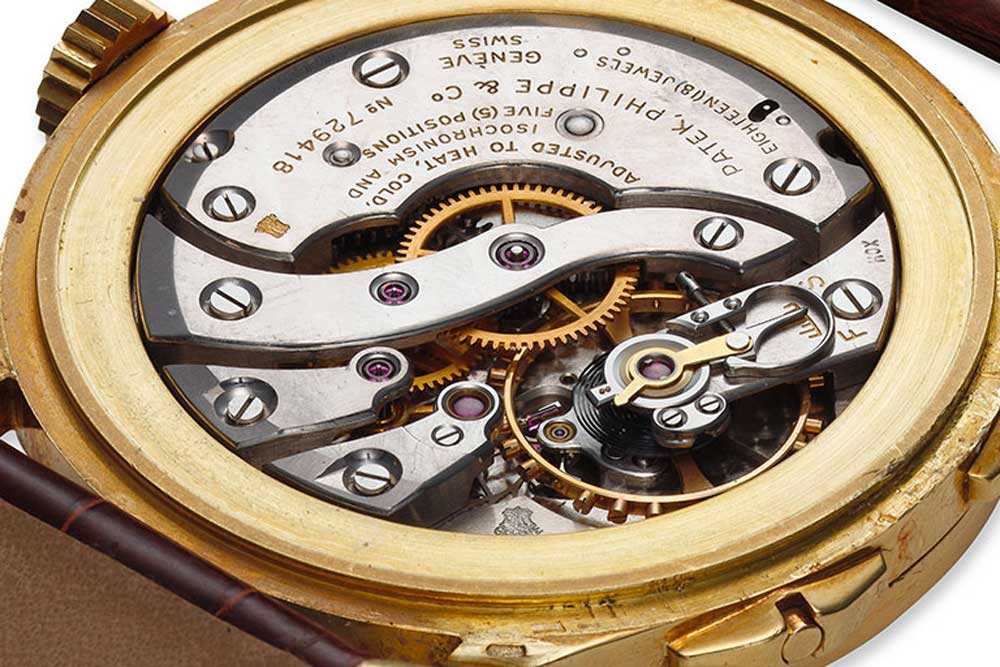
Patek Philippe’s Travel Time: From the Innovative 2597 to Iconic Models and Cottier’s Lasting Legacy
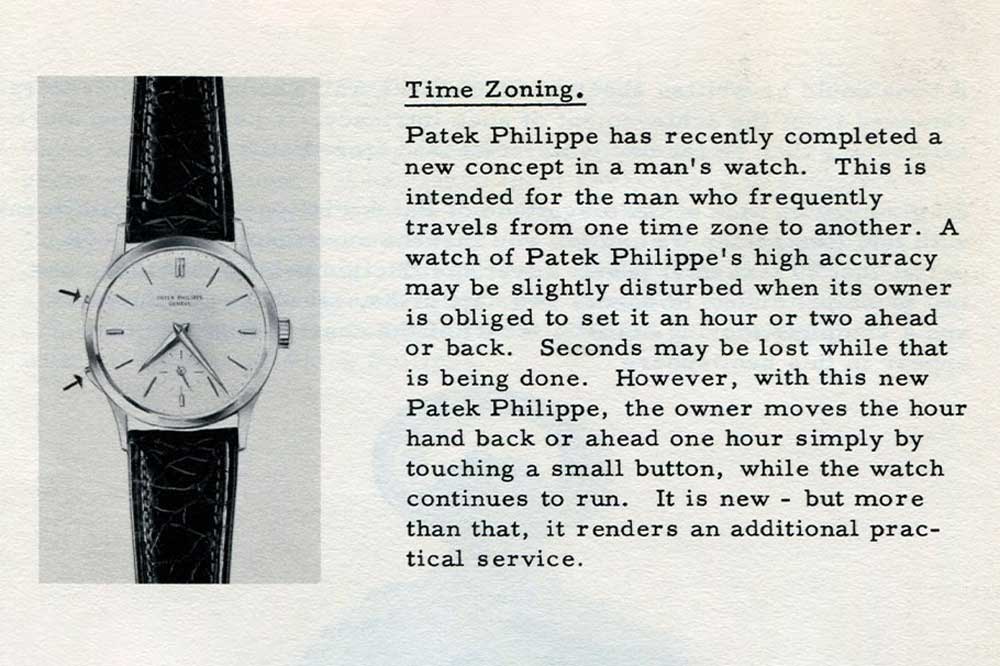
A Patek Philippe brochure from 1950s describing the innovative Travel Time (Image: Collectability)
1970s-1990s: A Renewed Commitment to Mechanical Watchmaking
Patek Philippe: Navigating the Quartz Crisis and Embracing Mechanical Mastery
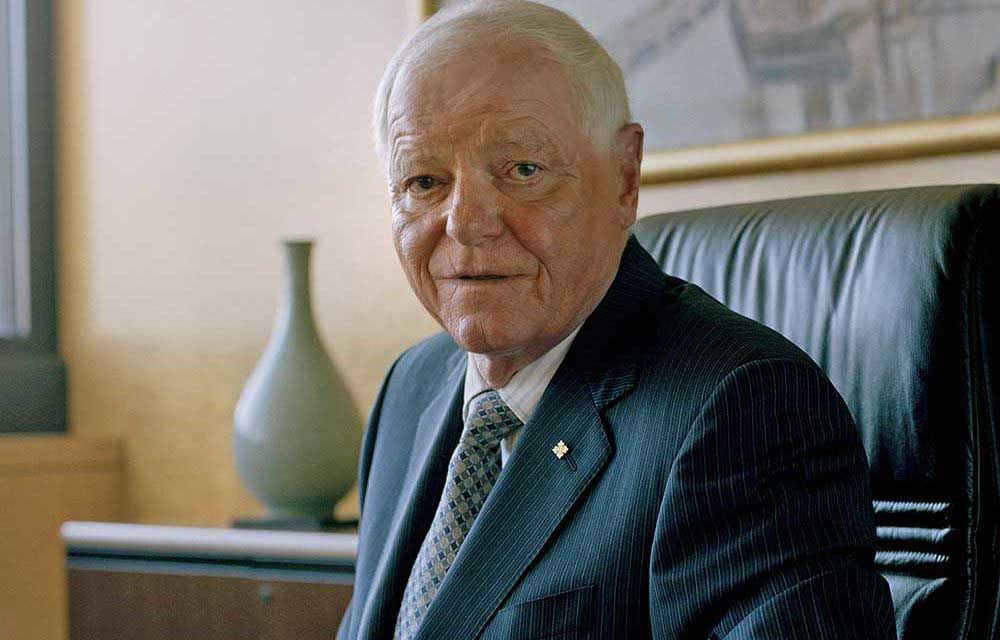
Philippe Stern, one of the most influential and important innovators the Swiss watch industry has ever known
Philippe Stern: The Visionary Force Behind Patek Philippe’s Renaissance and Legendary Status
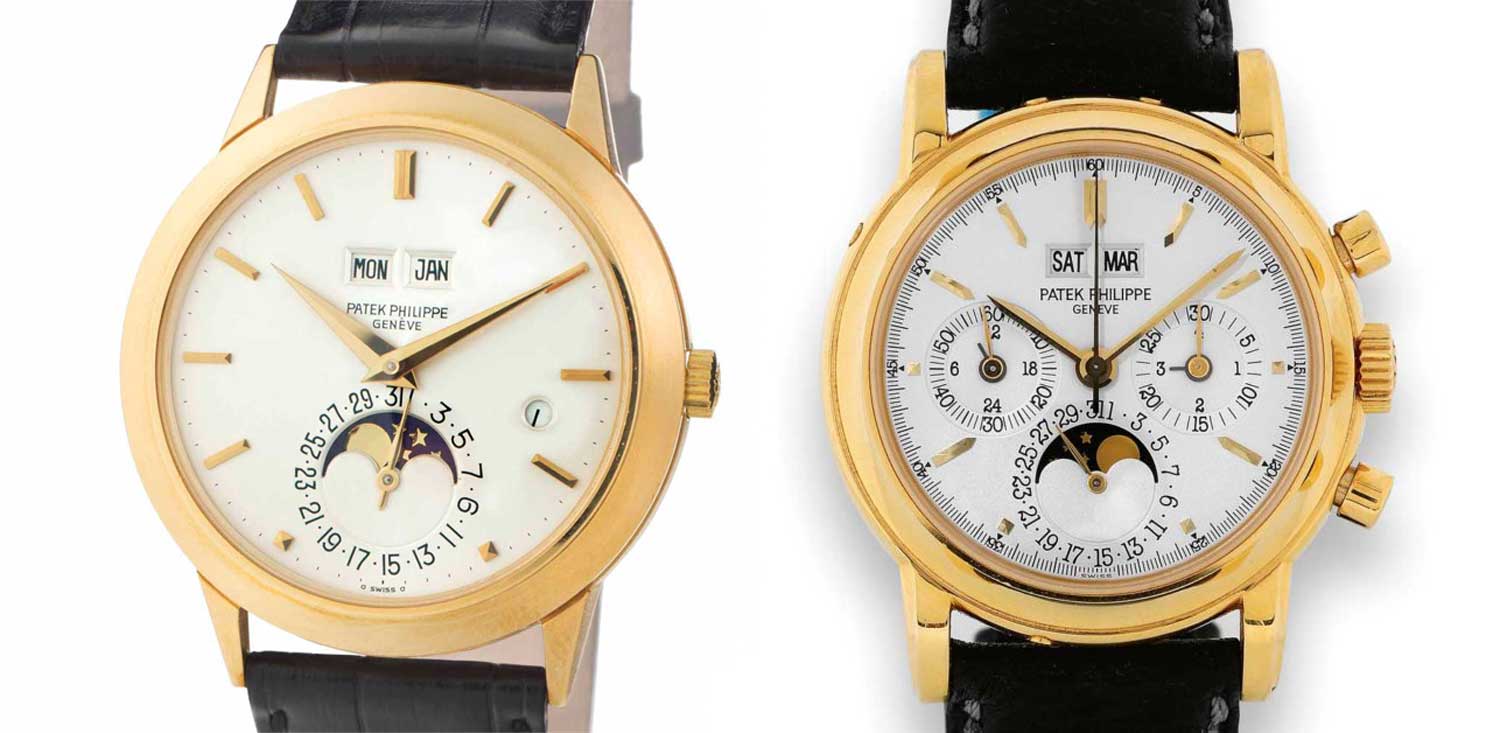
During the Quartz Crisis, Philippe Stern renewed his commitment to mechanical watchmaking with the creation of watches like the ref. 3450 (left) and ref. 3970 (right)
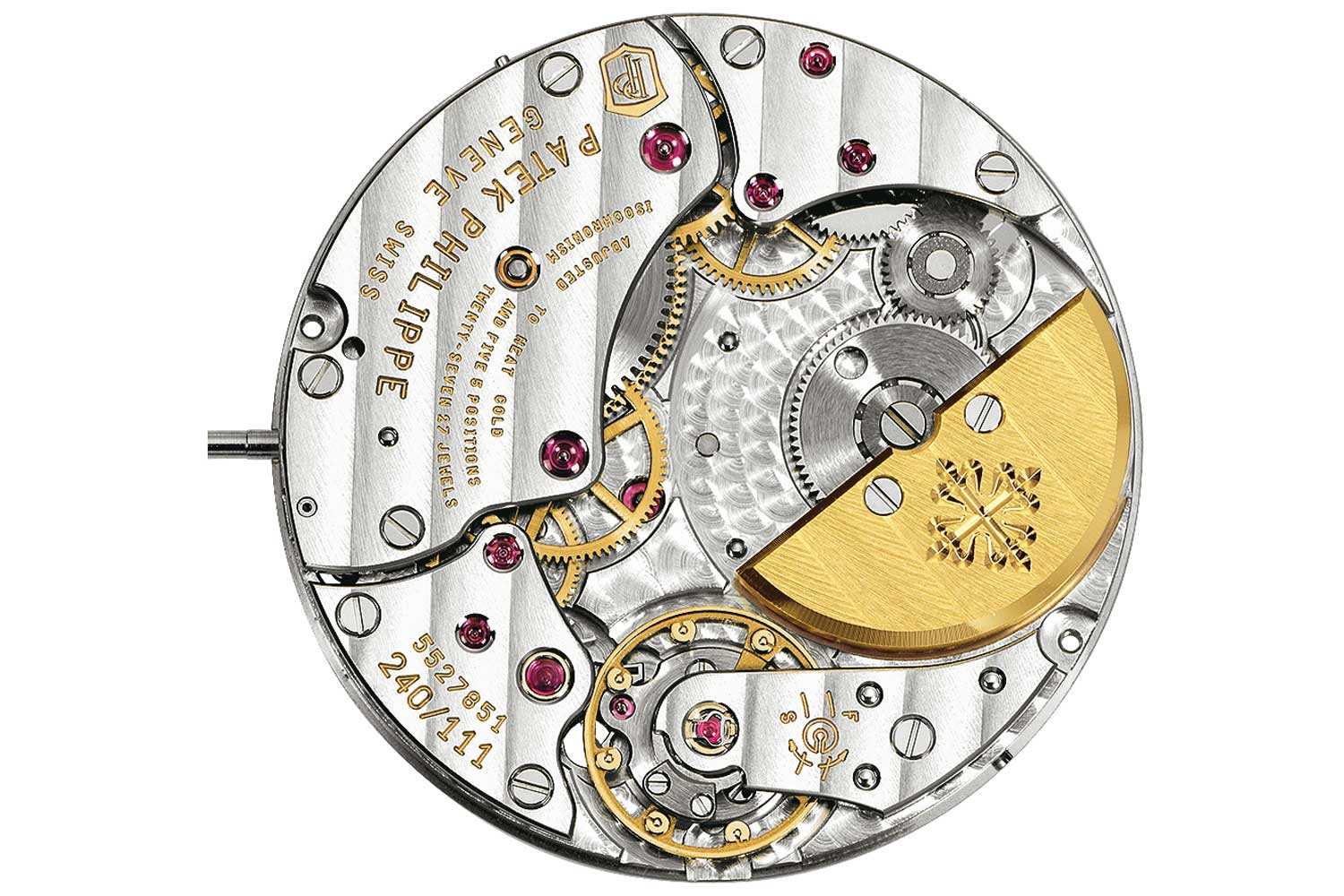
The mythical Patek Philippe caliber 240 launched in 1977
Philippe Stern understood that the watch was no longer about time, it was about pleasure and emotion
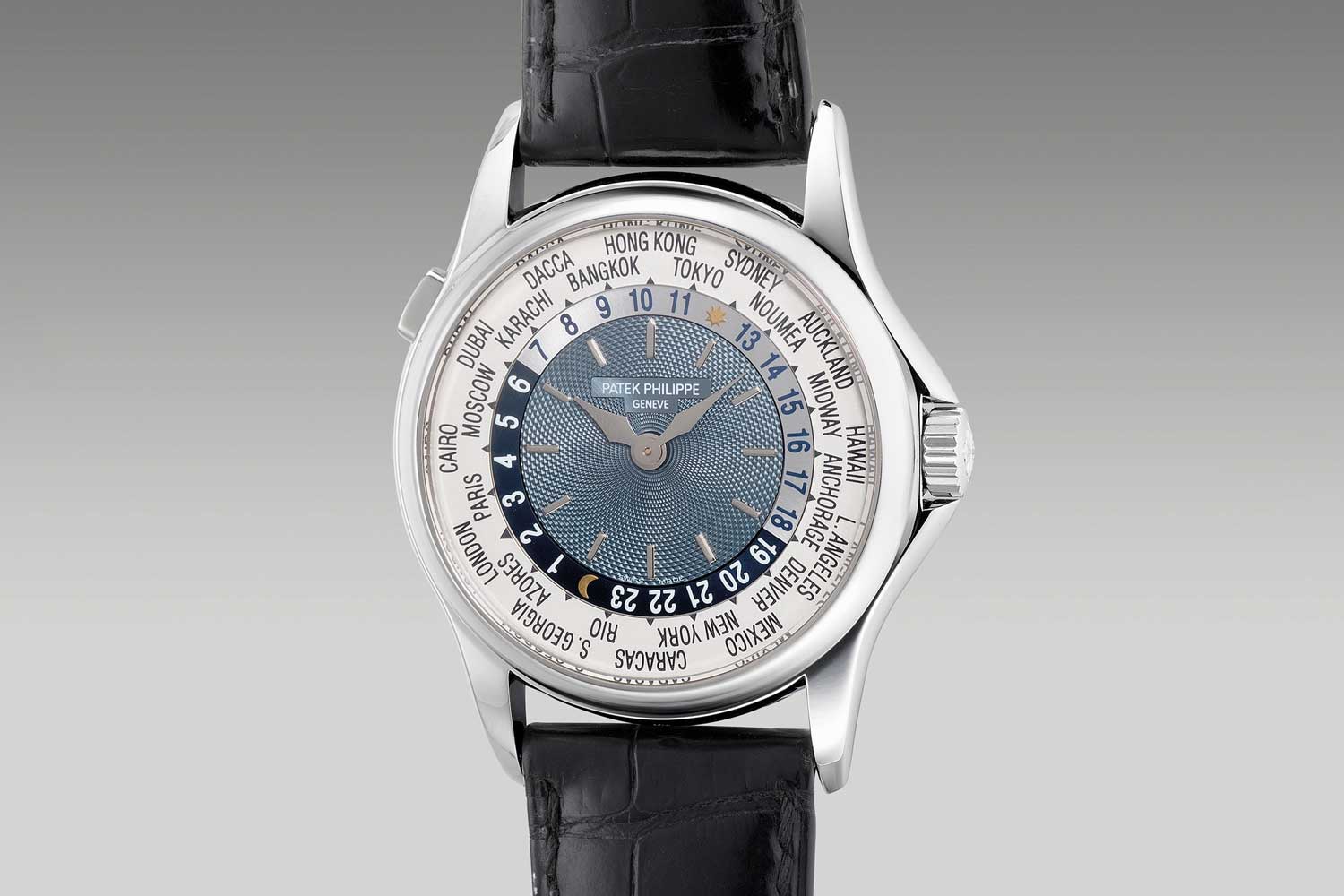
Introduced at the Baselworld fair in 2000, the ref. 5110 was a subtle nod to the reference 96 HU
The Patek Philippe Reference 5110 relaunched desirability for World Time watches
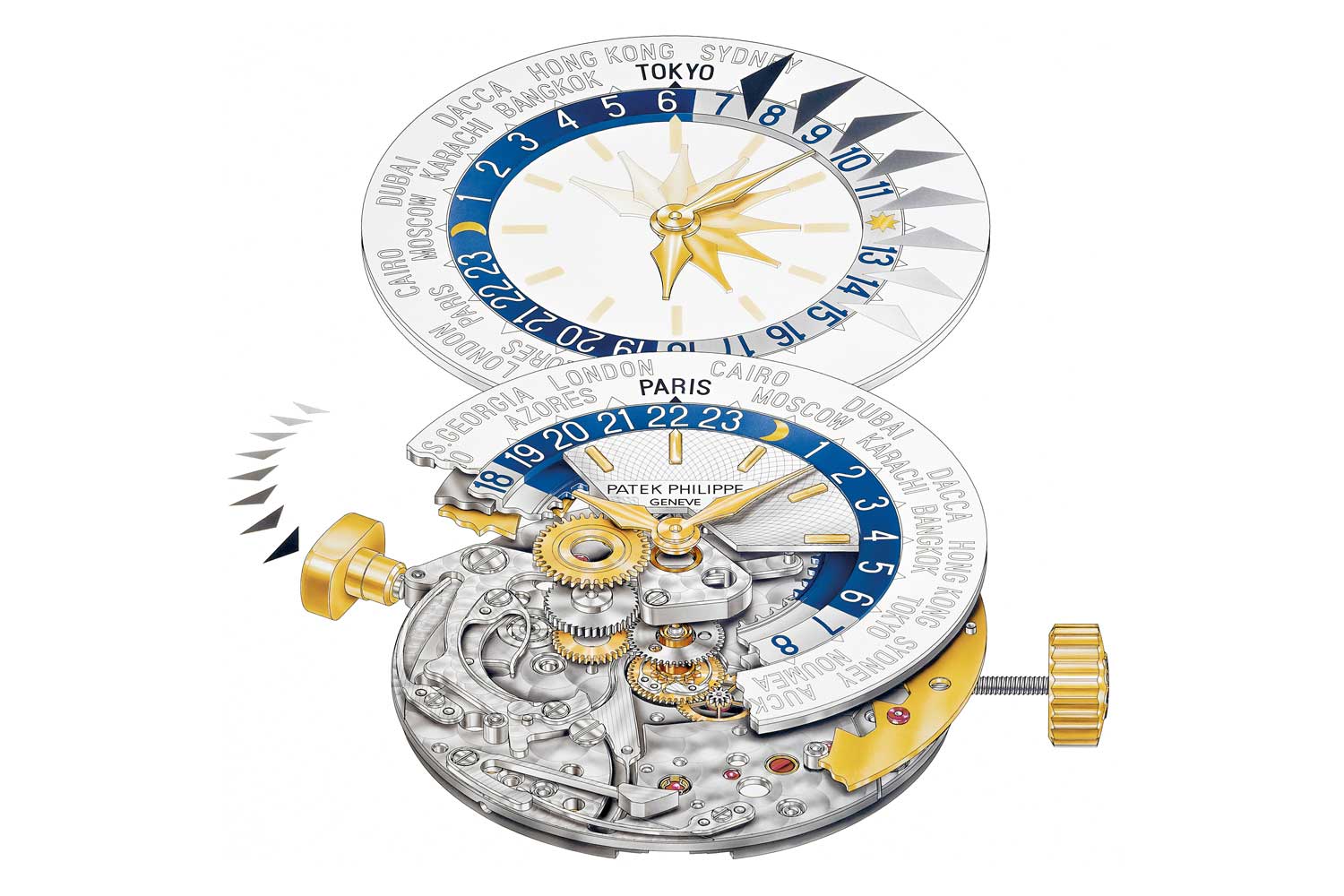
The practicality of the new caliber 240 HU made the ref. 5110 one of the easiest and most intuitive watches to use
Patek improved the user experience by making it intuitive to use
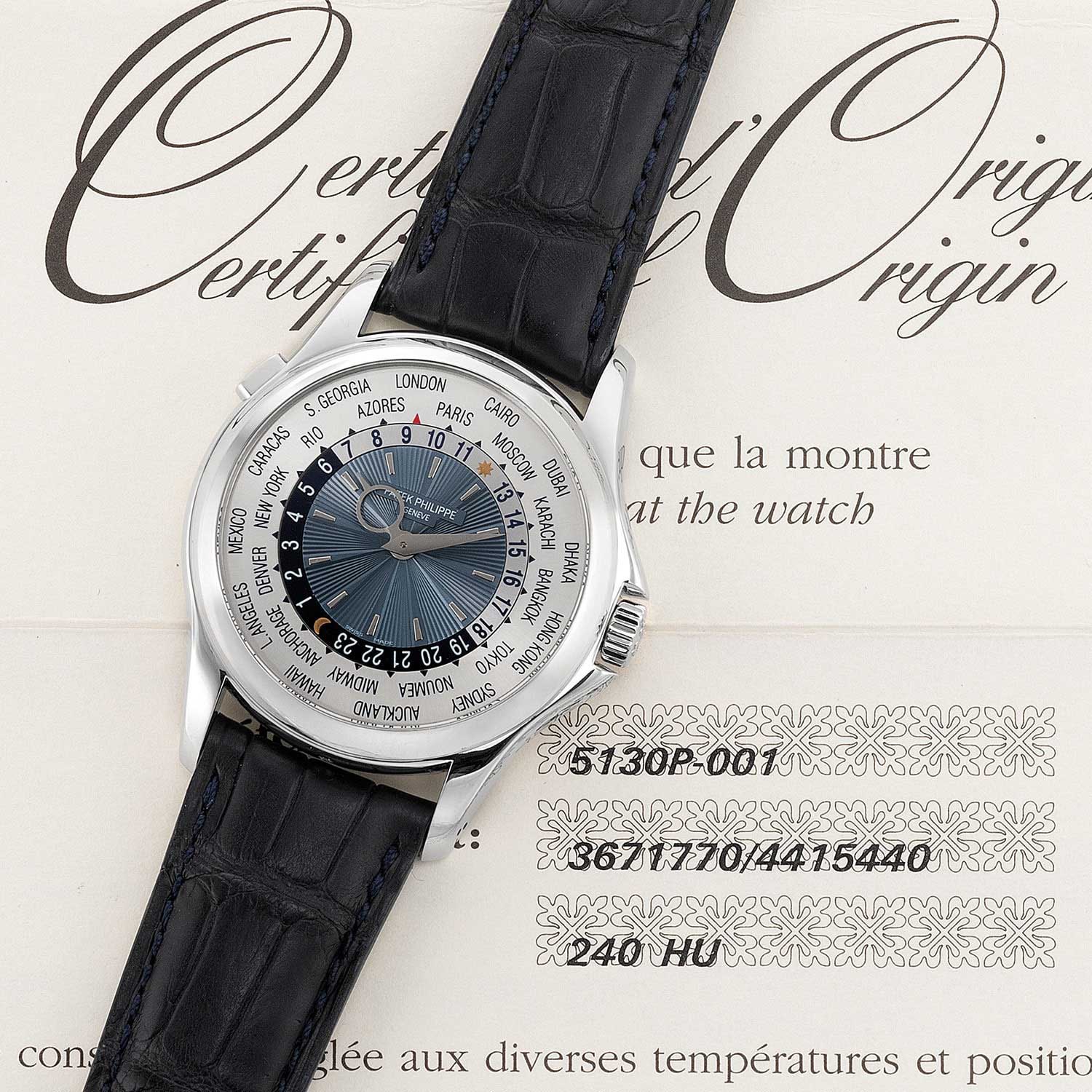
With its pebble smooth Calatrava case, which is a subtle nod to the very first World Timer reference 96 HU, the ref.5130 is the perfect execution of Louis Cottier’s complication. (Image: Phillips)
Patek Philippe Reference 5130: A perfect fusion of heritage, proportion, and familial legacy
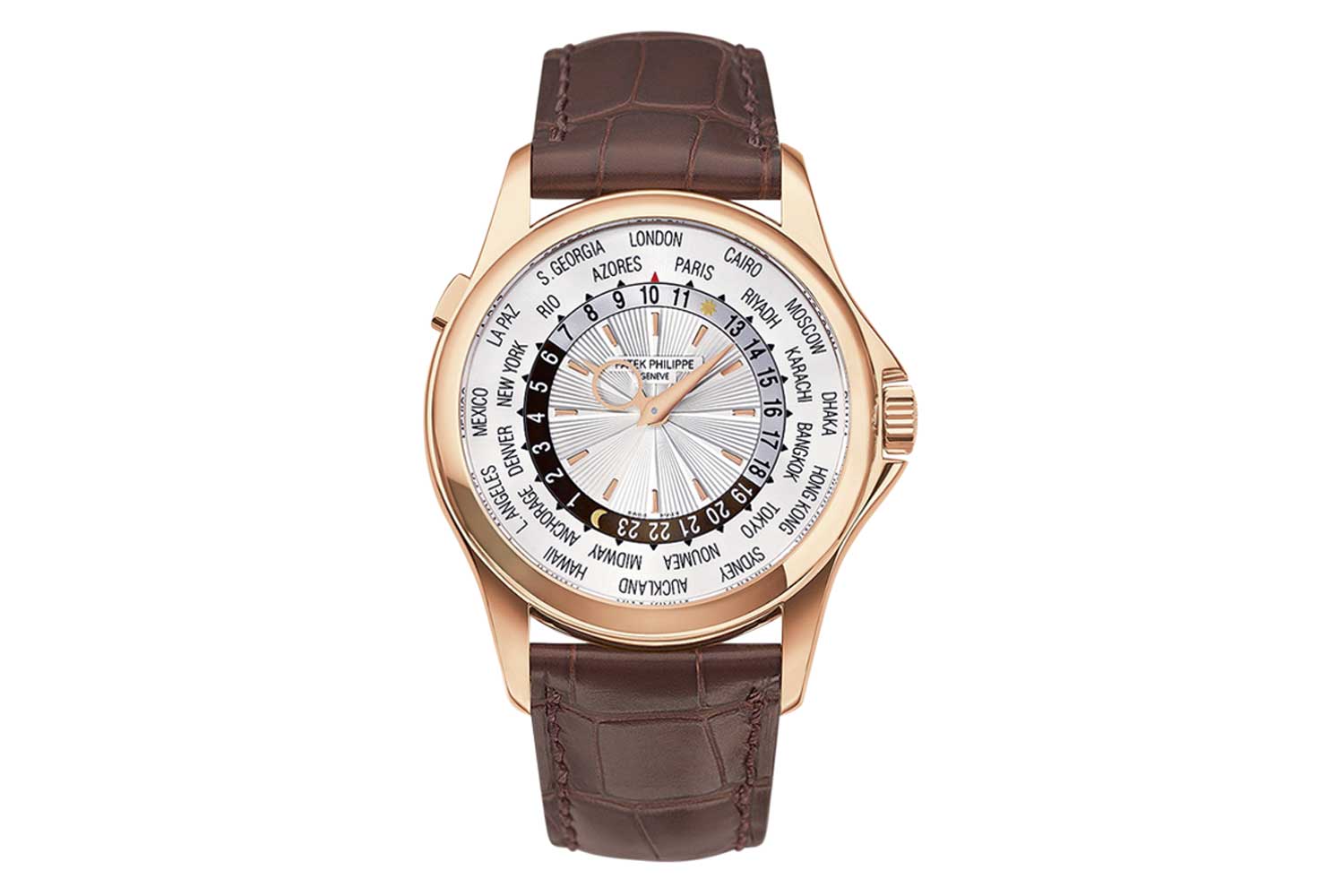
The ref. 5130 stands out for its beautiful sunray guilloché à main pattern that emanates from the center of the inner dial and the use of the famous Louis Cottier designed O-shaped “Observatory” hour hand complemented by the sword shaped minute hand. (Image: Patek Philippe)
The 5130 represents an Harmonious Fusion of Guilloché Artistry and Timekeeping Precision
Extraordinary limited editions
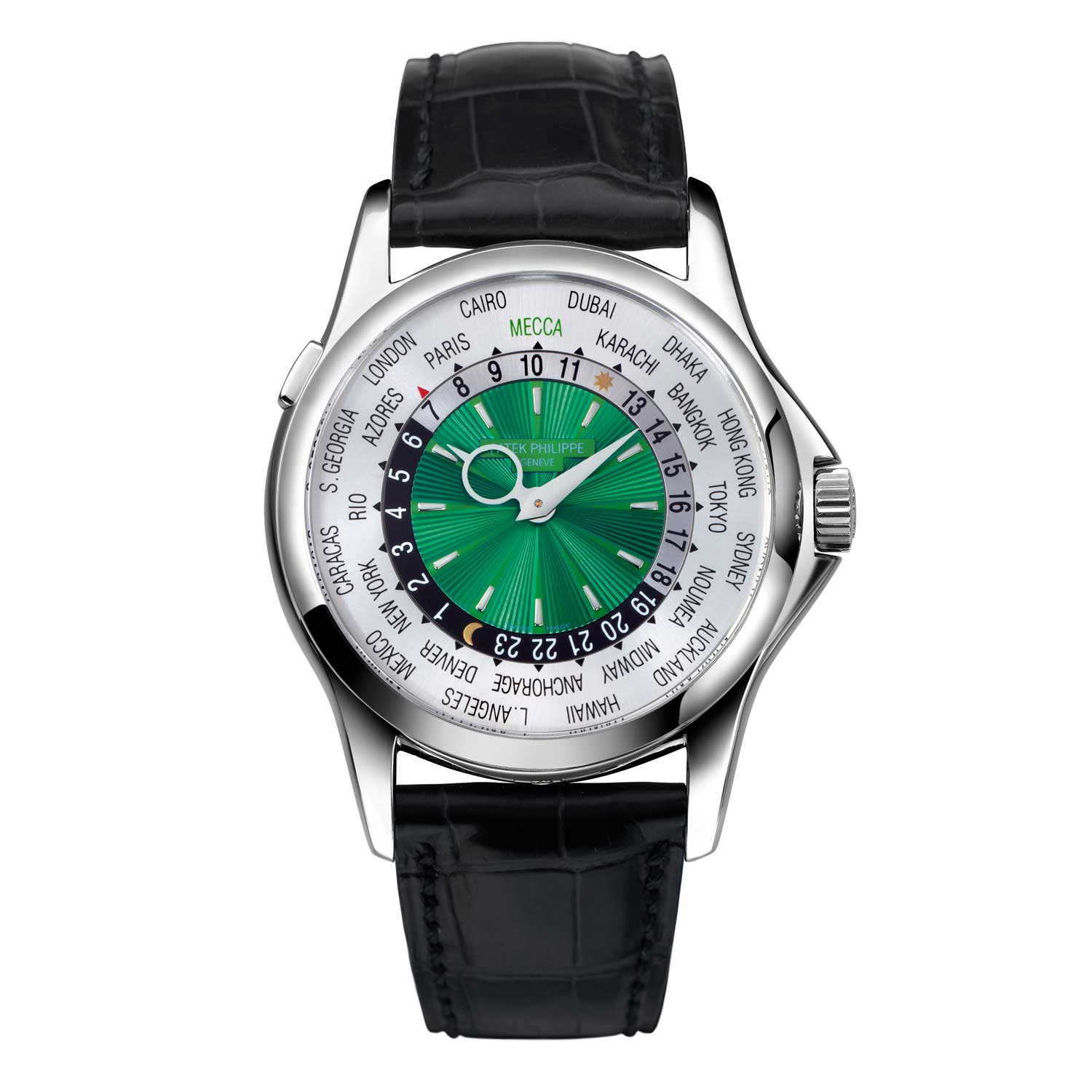
The ref. 5130P “Mecca” in platinum with a green dial
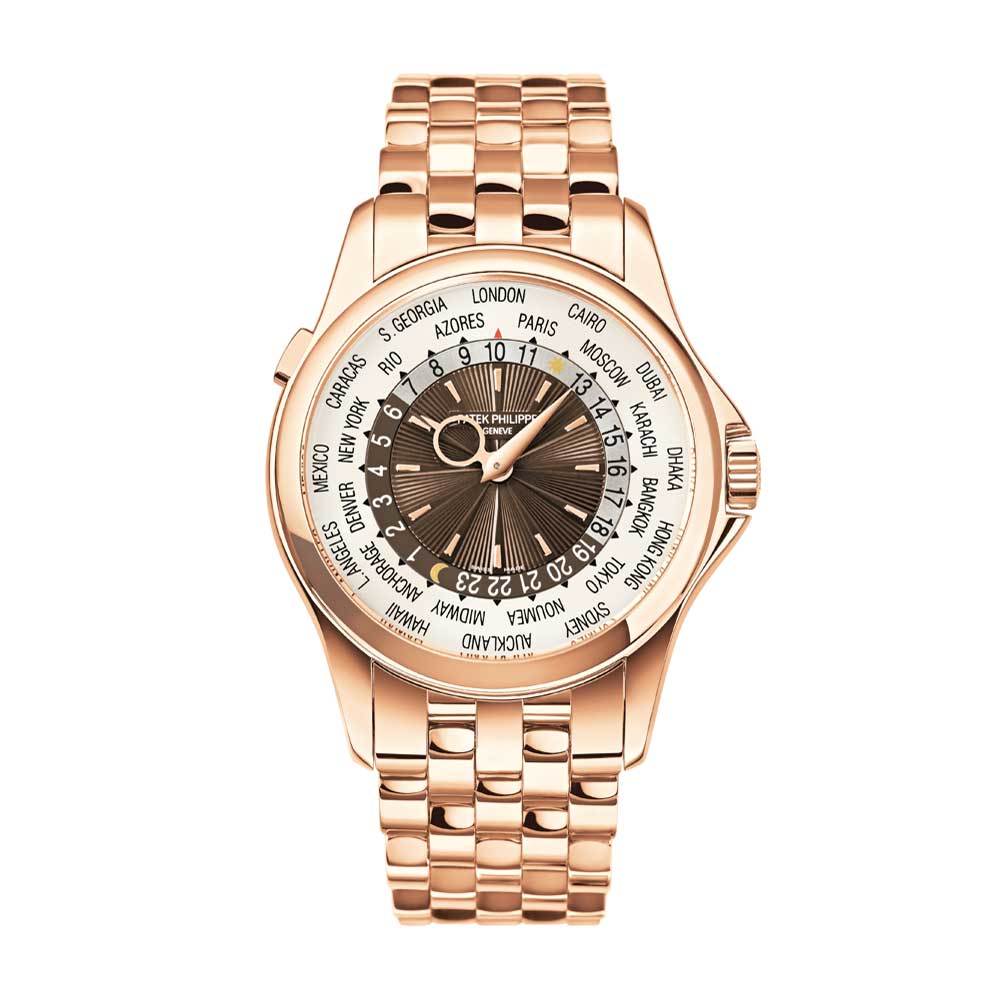
The ref. 5130/1R-001 launched in 2012 features a brown dial combined with a rose gold brick bracelet
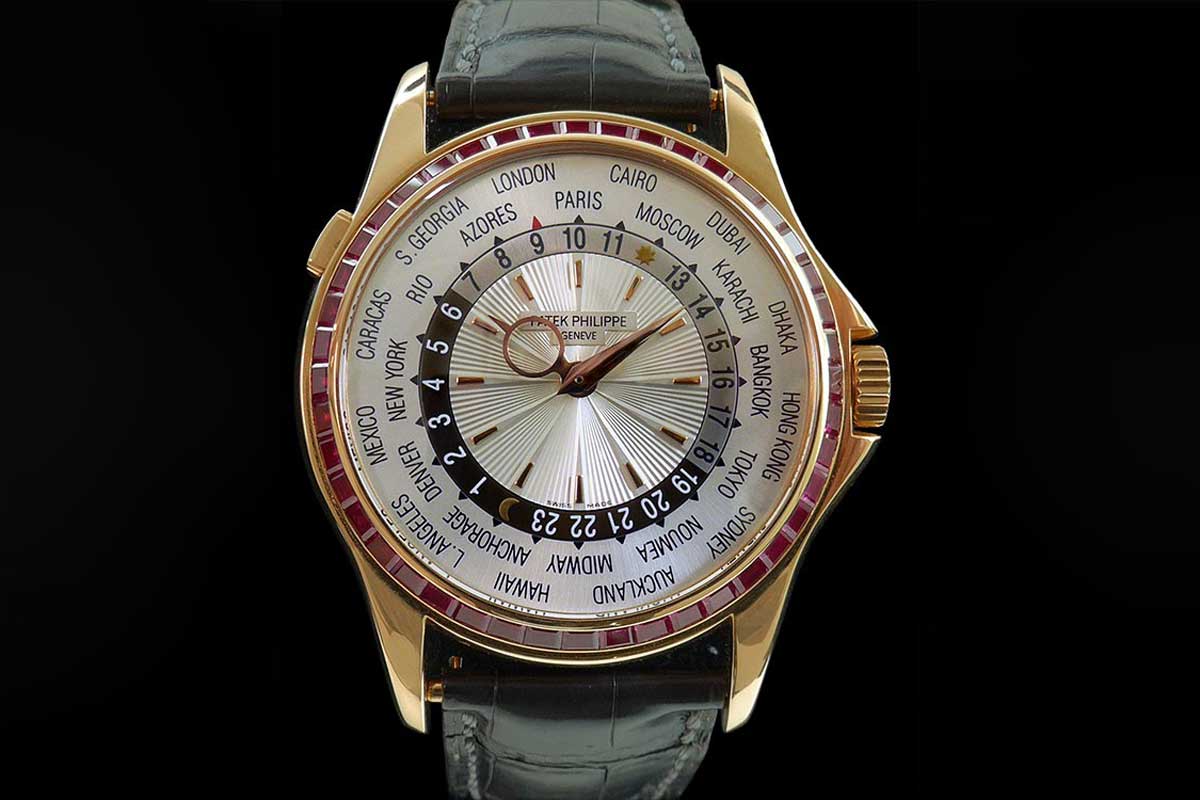
Patek Philippe ref. 5130/12R with 44 baguette-cut rubies in its bezel. (Image: robertmaron.com)
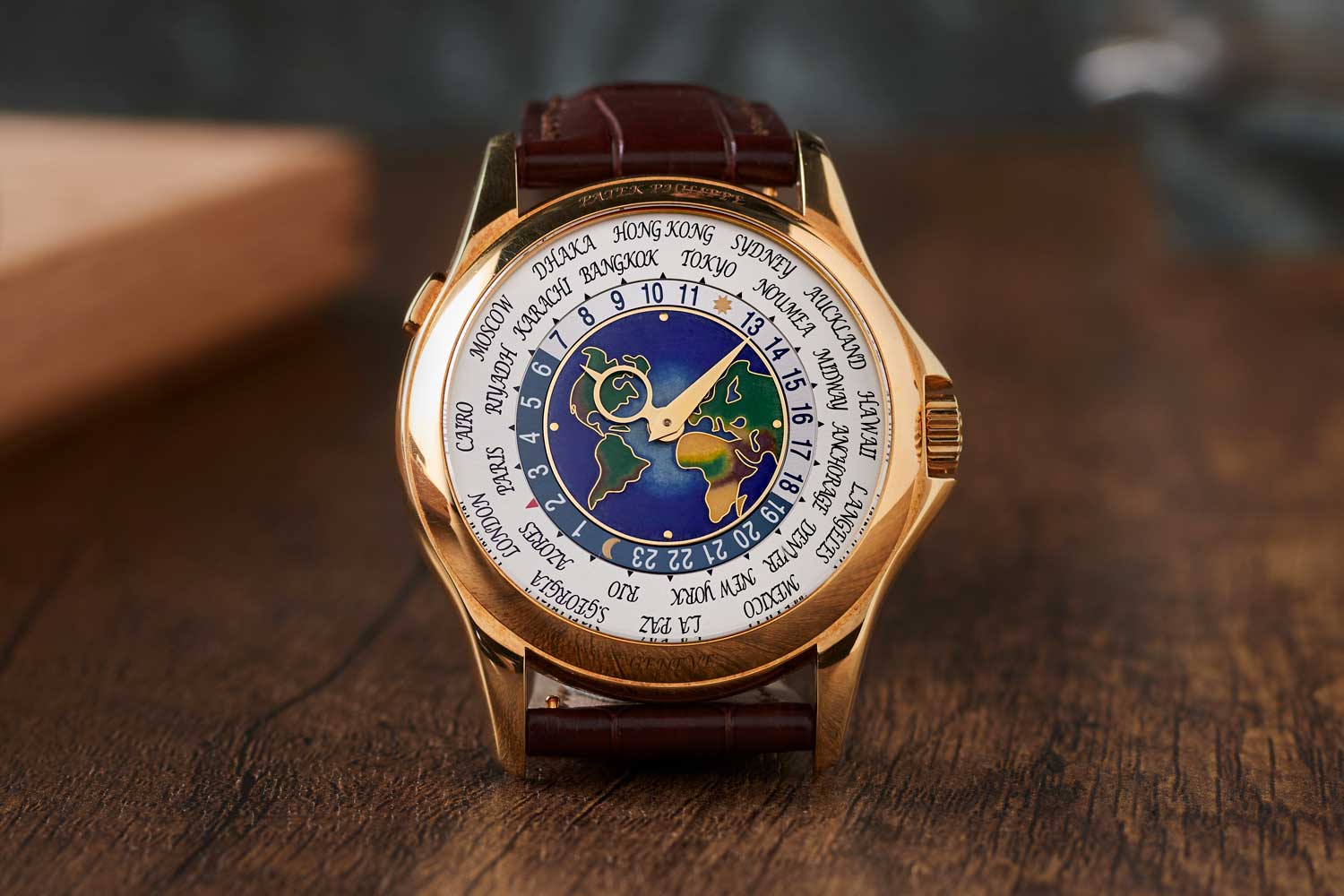
Wei Koh’s Patek Philippe reference 5131 cloisonné enamel World Time watch (©Revolution)
Thierry Stern unveiled a new reference with the launch of the 5131 Patek Philippe
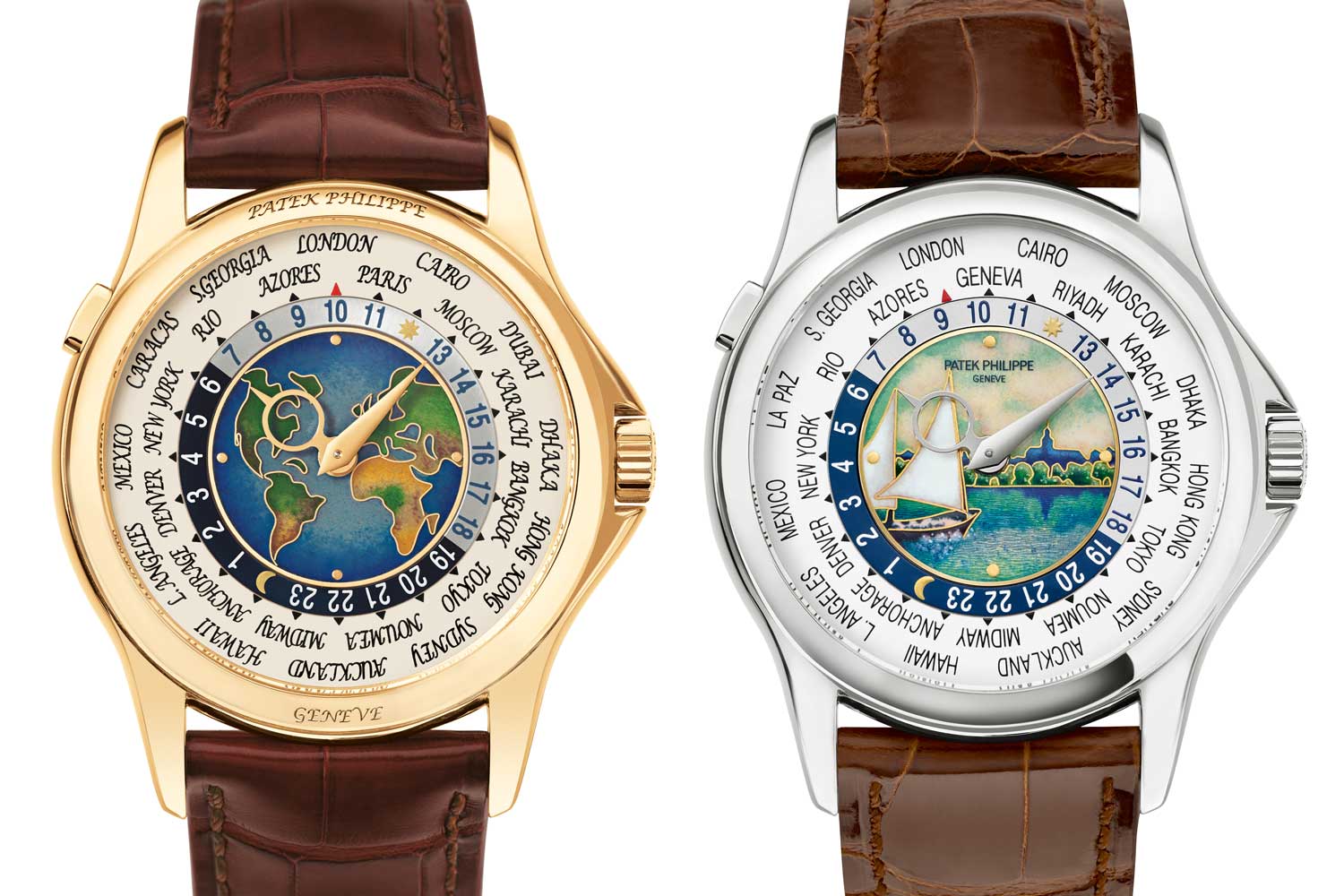
The 5131 was initially introduced in two stunning versions, a yellow gold watch with a map of North and South America, Europe and Africa, and a white gold version with a map of Africa, Europe, Asia and Australia. (Images: Patek Philippe)
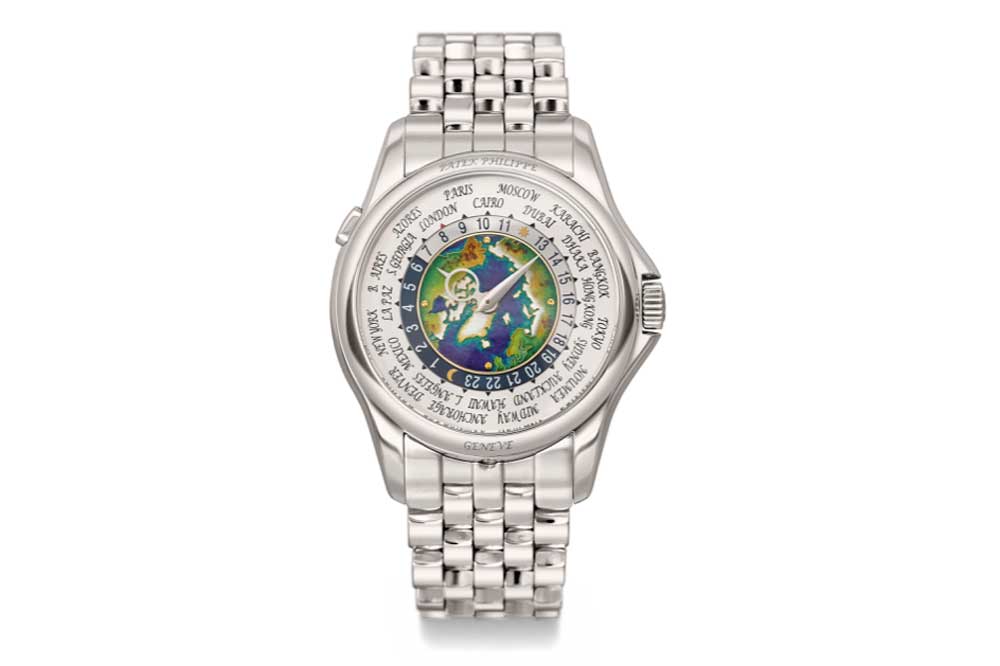
In 2018, Patek Philippe launched the ref. 5131/1 P that featured an enamel map of the Northern Hemisphere and “Eric Clapton” style brick bracelet. (Image: Sothebys)
The battle of the maps: Exploring the allure of American/European and Euro-Asian maps
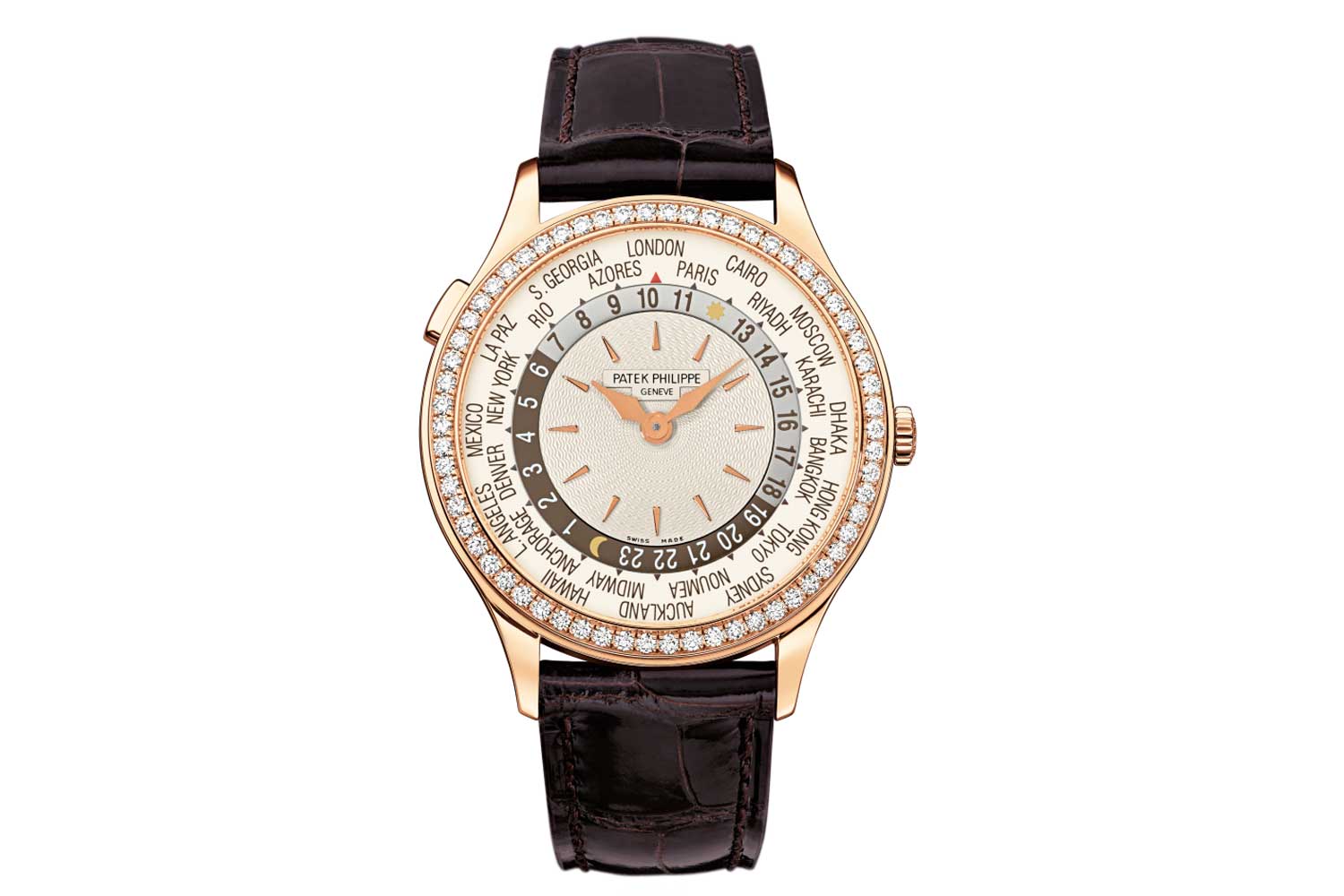
The first version of ref. 7130 with a rose gold case, an ivory hand-guilloché dial and a warm brown 24-hour ring and matching brown print on the city disk. (Image: Patek Philippe)
Patek Philippe first women’s World Timer
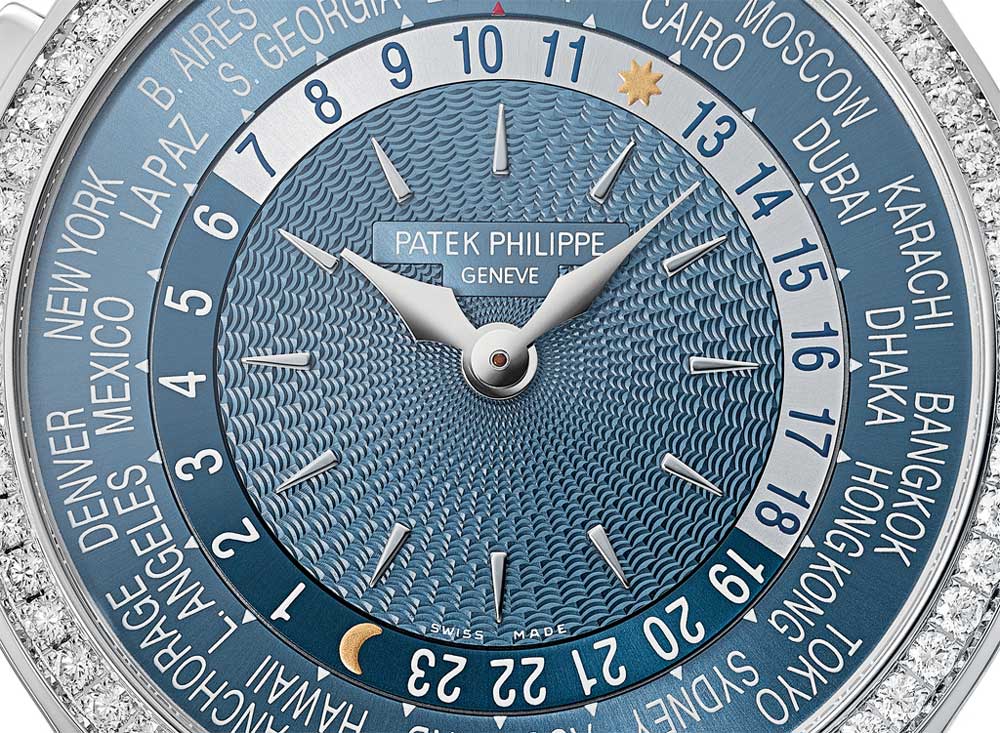
Patek Philippe ref. 7130G in white gold with a truly stunning guilloché pattern on its resplendent gray blue inner dial (image: Patek Philippe)
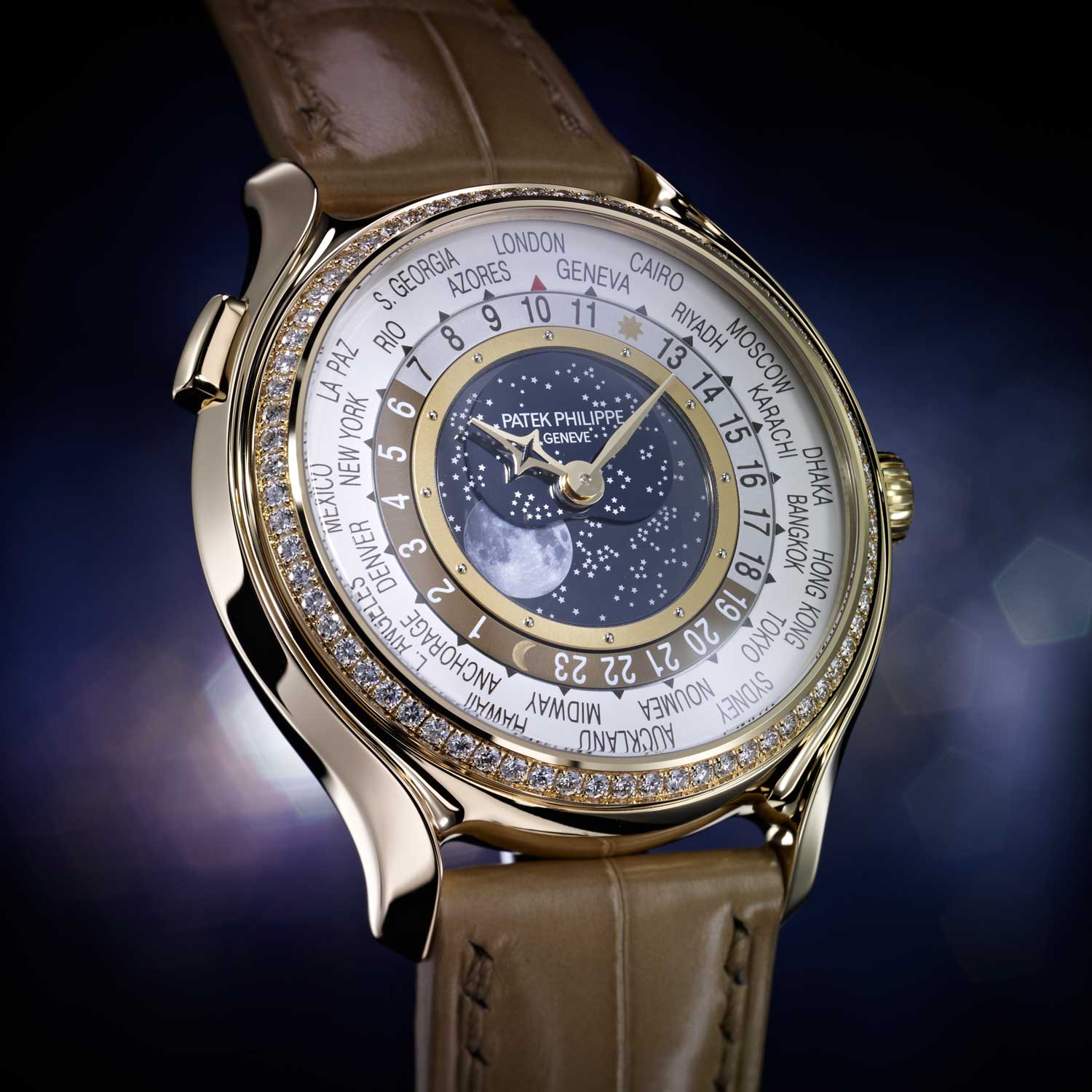
Launched as part of Patek Philippe’s 175th anniversary celebrations, the ref. 7175 had a 38mm rose gold case and its dial presented a hyper realistic moonphase (Image: Patek Philippe)
Patek Philippe’s 175th Anniversary was celebrated with the introduction of the World Timers Moonphases
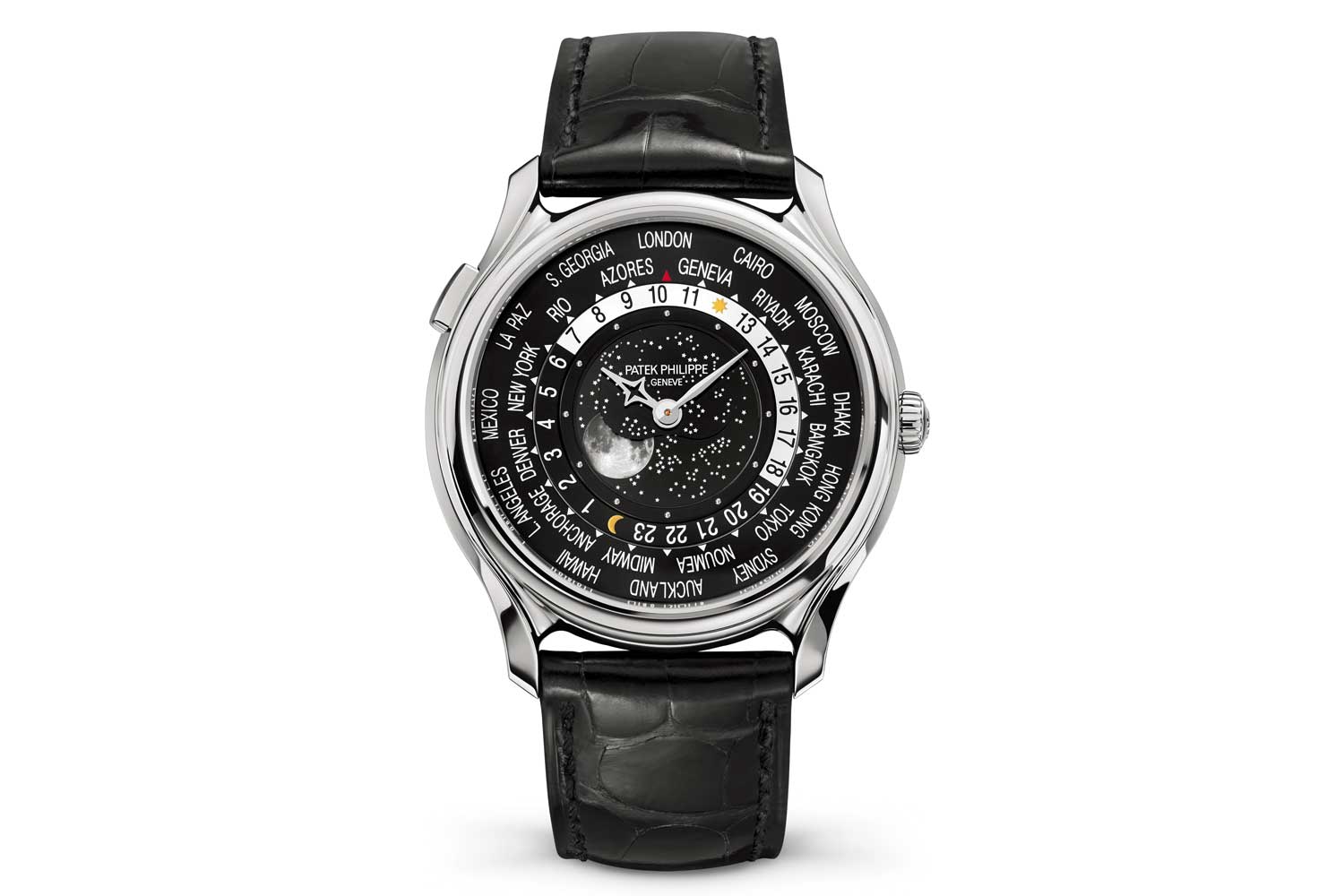
The ref. 5575 was also offered in a 39.8mm white gold case, limited to 1300 pieces.
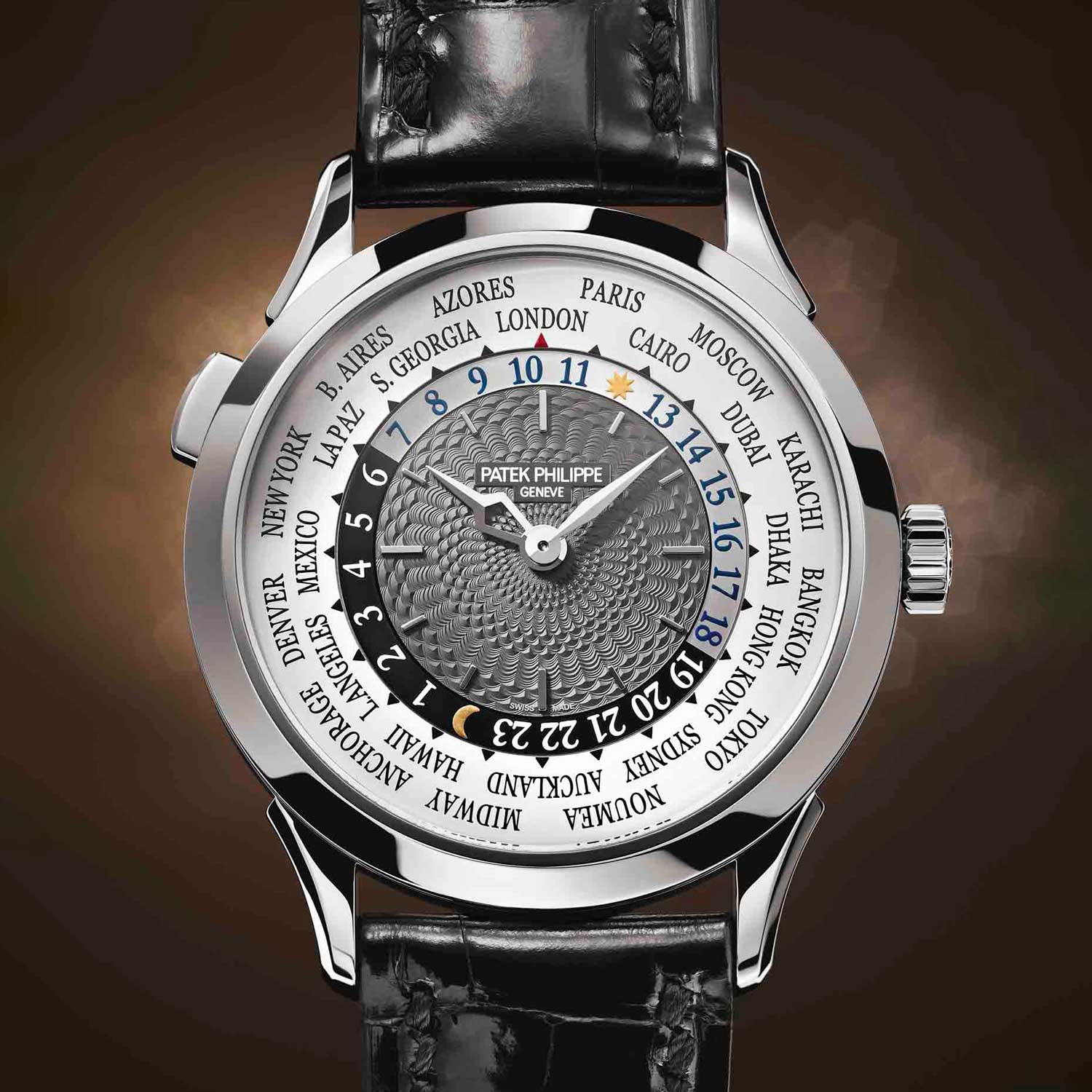
The ref. 5230 was the first modern World Timer without crown guards
Patek Philippe Reference 5230: A spiritual connection to the past with exquisite design innovations
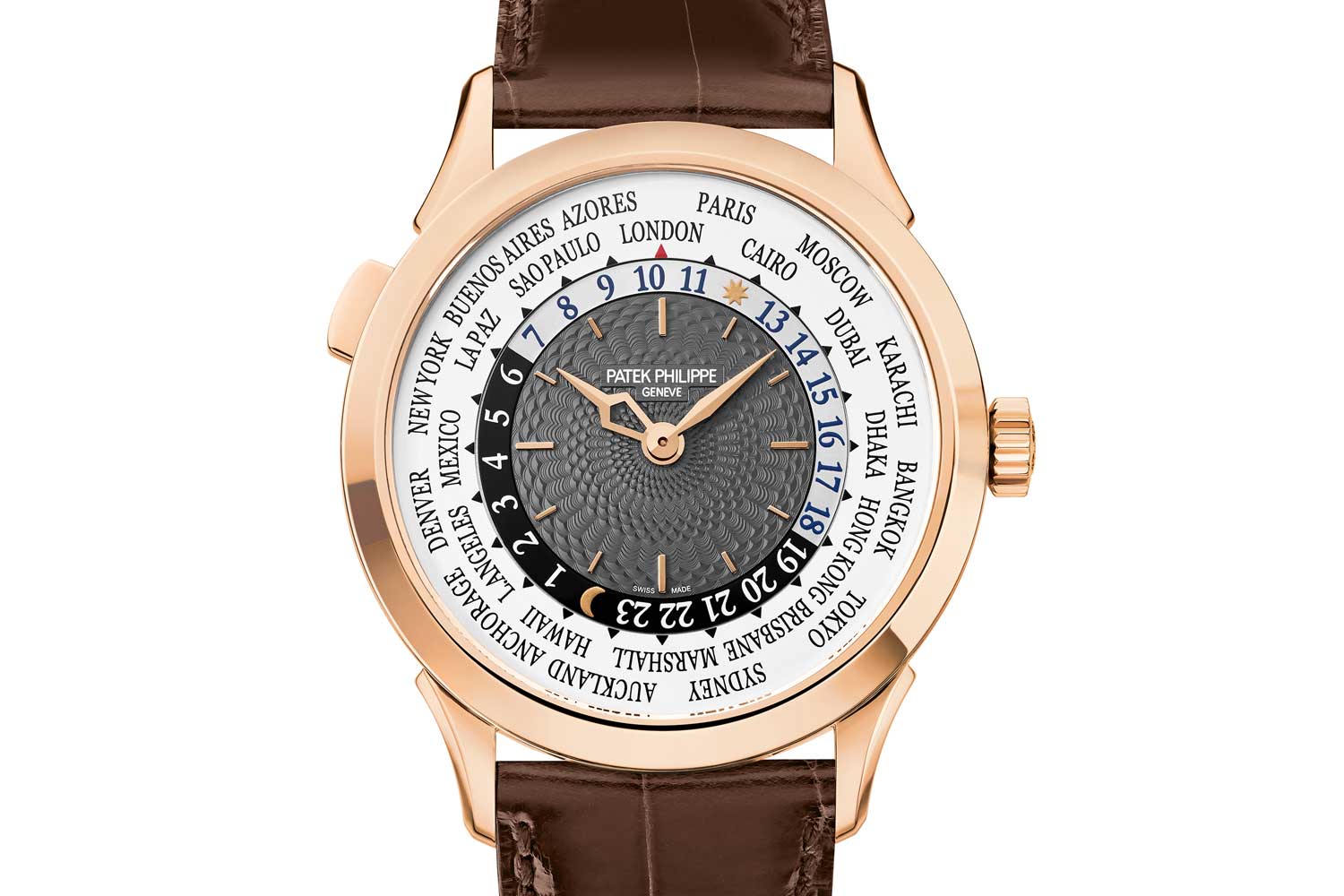
The watch’s dial featured the most elaborate guilloché pattern yet with subtle waves radiating from the cannon pinion, abbreviated by appealing and original flat, wide teardrop shaped elements. (Image: Patek Philippe)
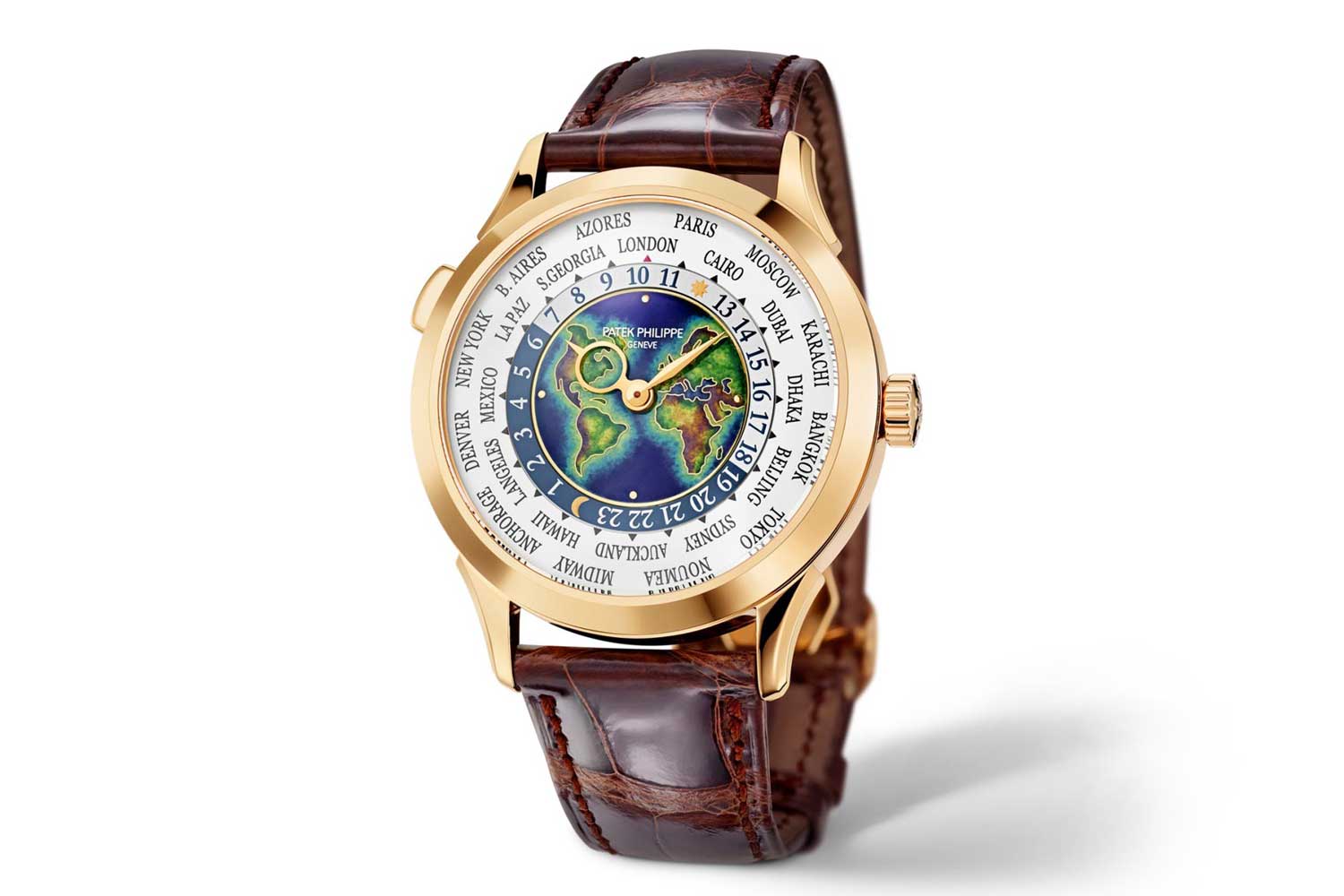
Patek Philippe Reference 5231J World Time with a cloisonné enamel world map on the dial
The Patek Philippe Reference 5231: Exquisite cloisonné enamel maps and enhanced design aesthetic
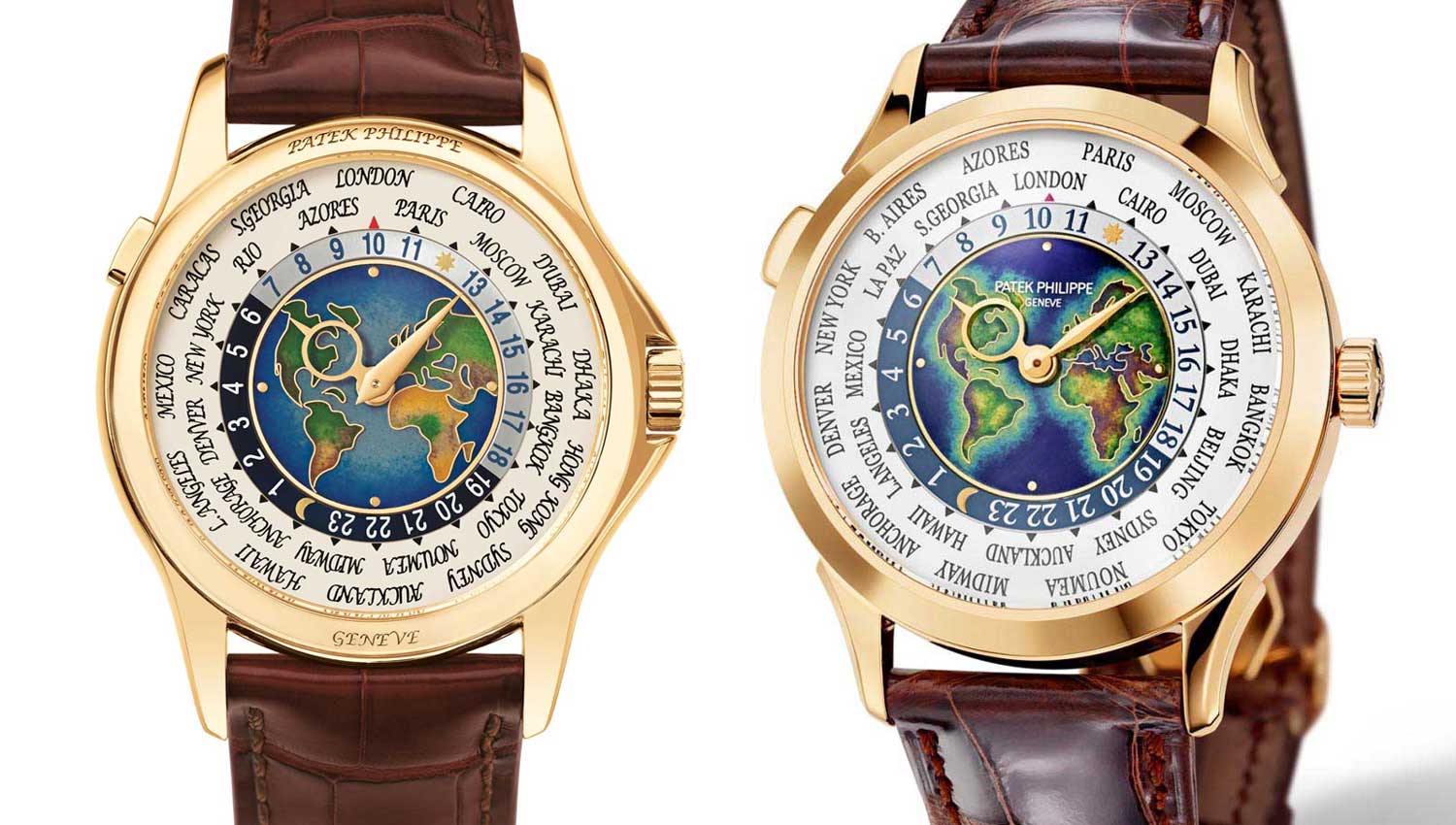
The Patek Philippe signature on the ref. 5231 (right) is painted onto the enamel surface, whereas in the previous ref. 5131 (left) the signature had been engraved onto the bezel, which was somewhat controversially received. The 5231 also has a larger flat bezel along with faceted lugs that are reminiscent of the 2523.
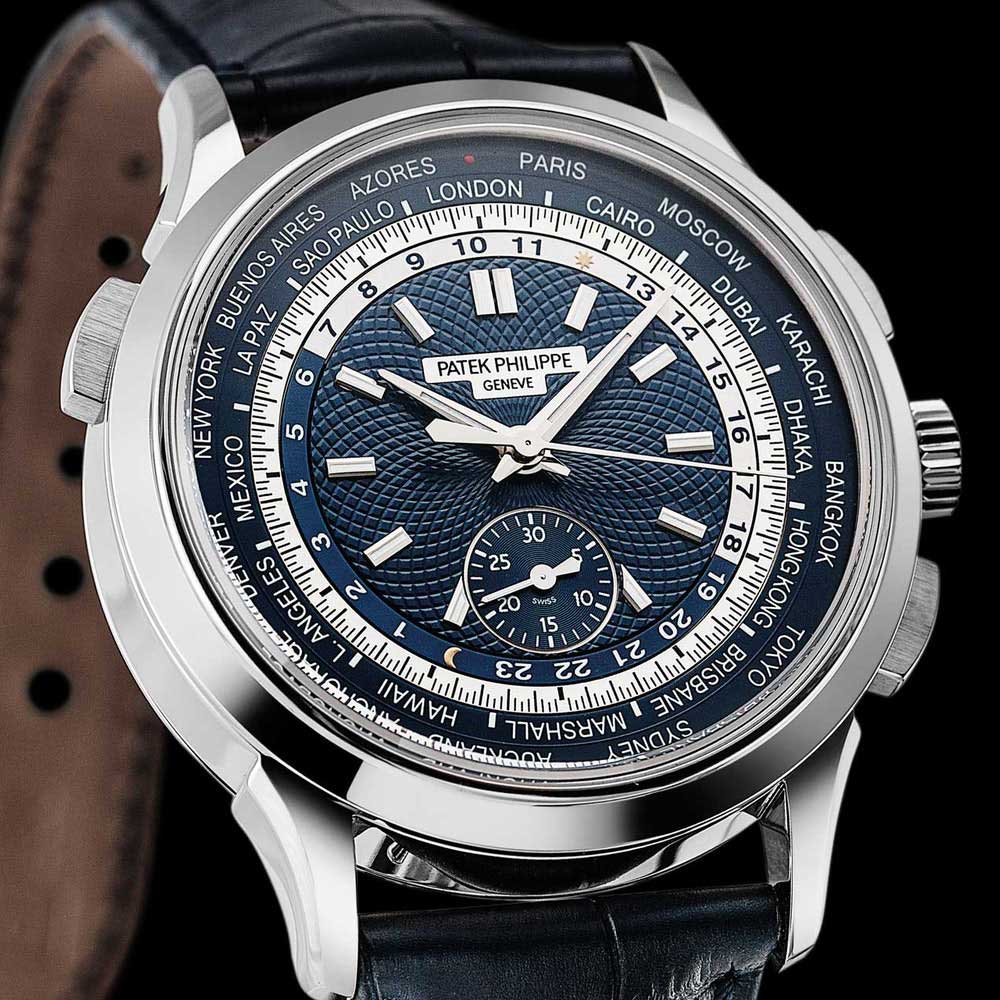
The ref. 5930 offers a unique combination of a World Time function and an automatic vertical clutch flyback chronograph with a 30-minute counter.
The Patek Philippe Reference 5930: A masterful fusion of world time and flyback chronograph
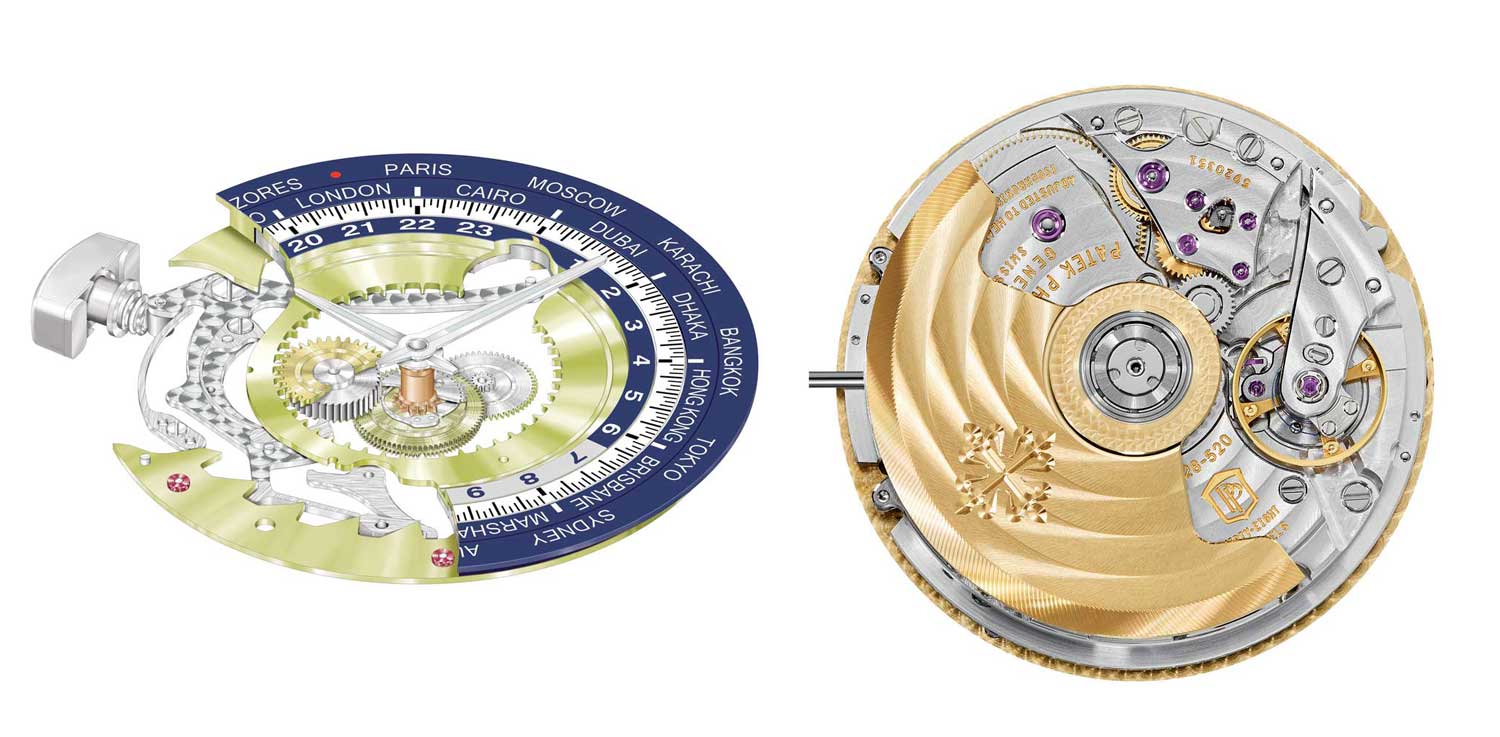
Patek Philippe’s first ever serially produced world time chronograph, the ref. 5930, is equipped with the caliber CH 28-520 HU, an ultra thin, column wheel, vertical clutch automatic chronograph with silicon hairspring and escapement.
Patek did an amazing job by integrating world time and flyback chronograph functions
Reference 5990 the Nautilus Travel Time Chronograph
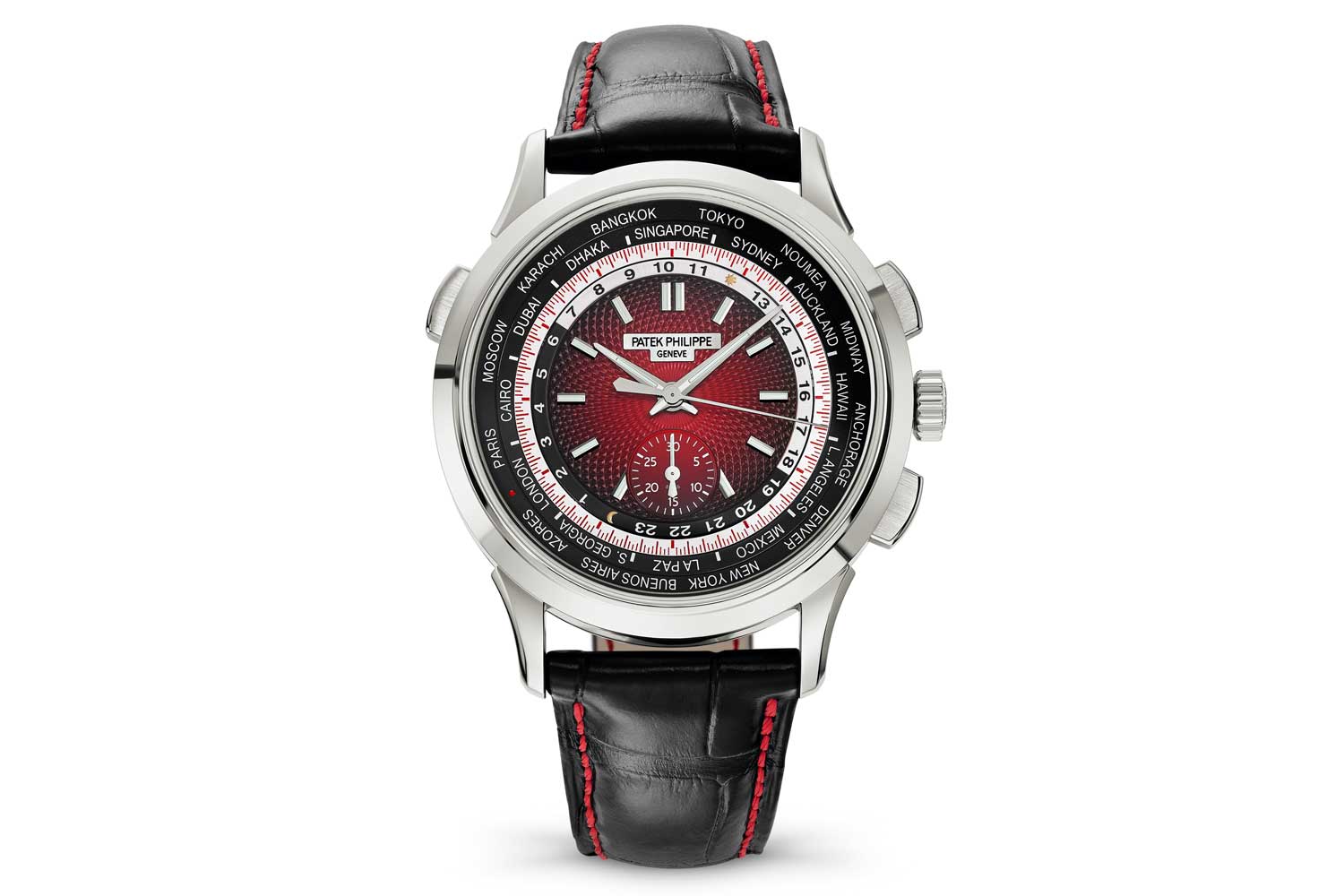
The ref. 5930 Singapore Special Edition created to celebrate Patek Philippe’s Singapore Grand Exhibition in 2019
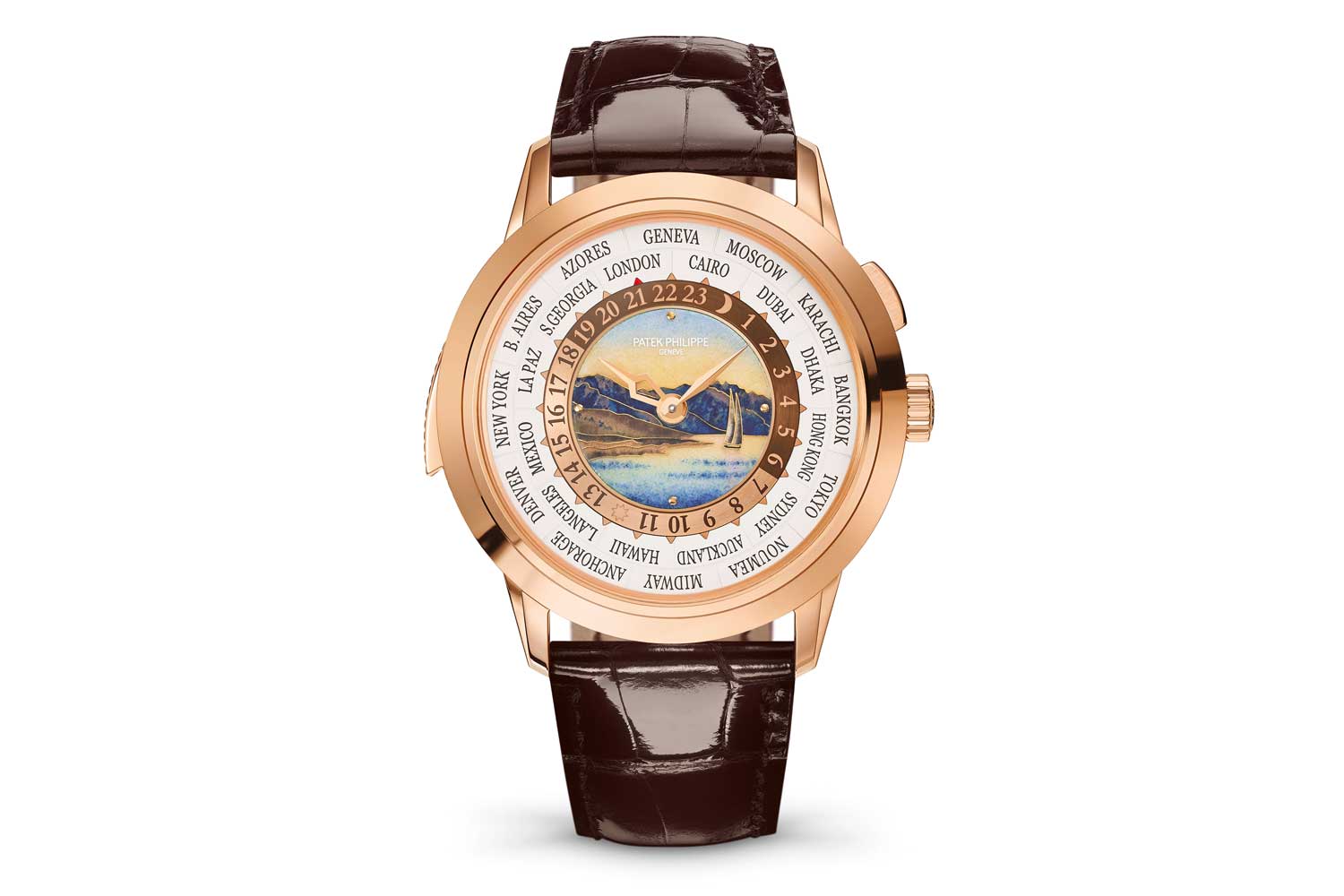
The 5531R elevates the idea of a majestic repository of horology’s greatest art forms to its highest apogee.
Reference 5531: The single most complicated and emotionally charged World Timer
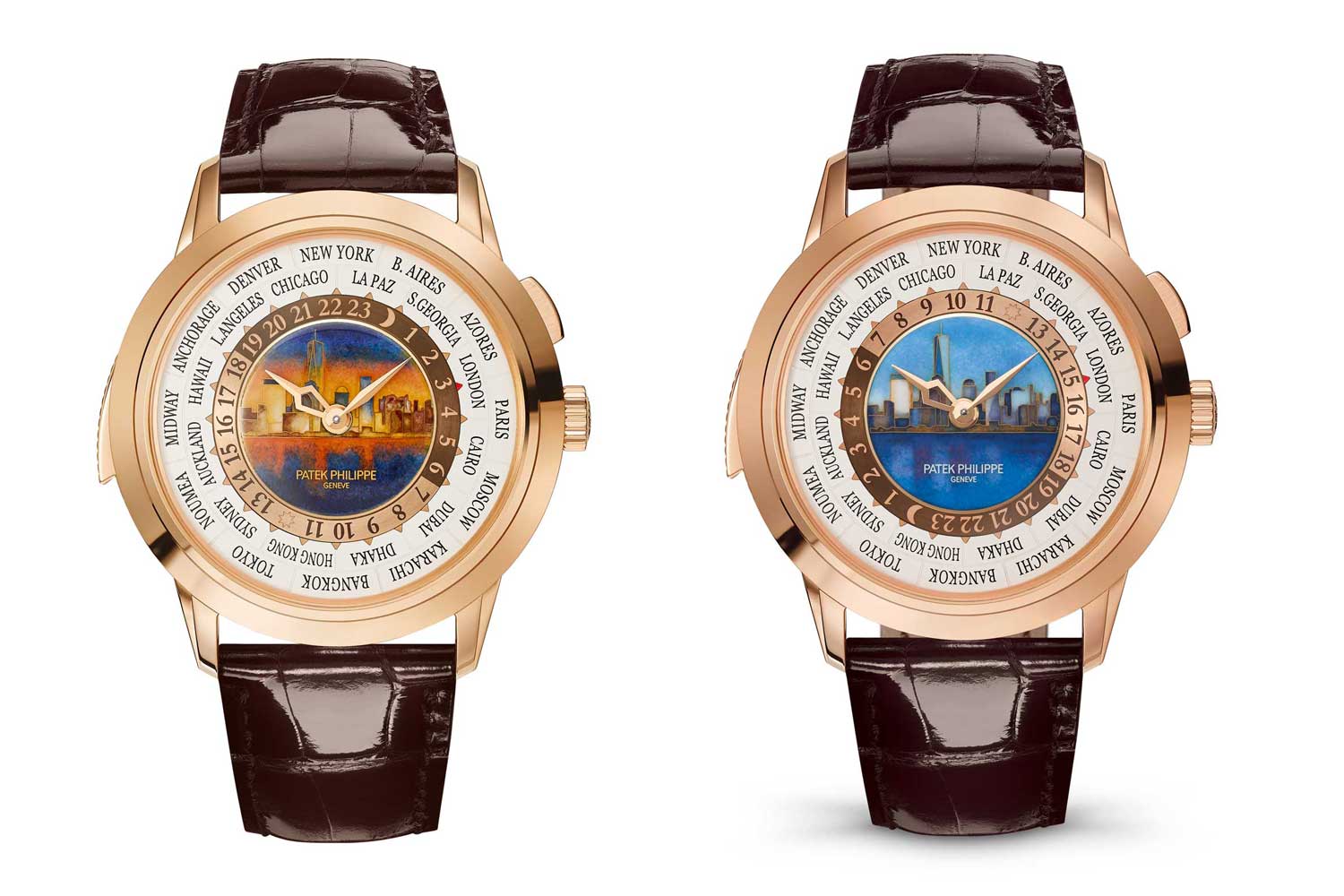
The first execution of the 5531R depicting Manhattan’s skyline was made with two dial designs “New York by Day” and “New York by Night” in 2017
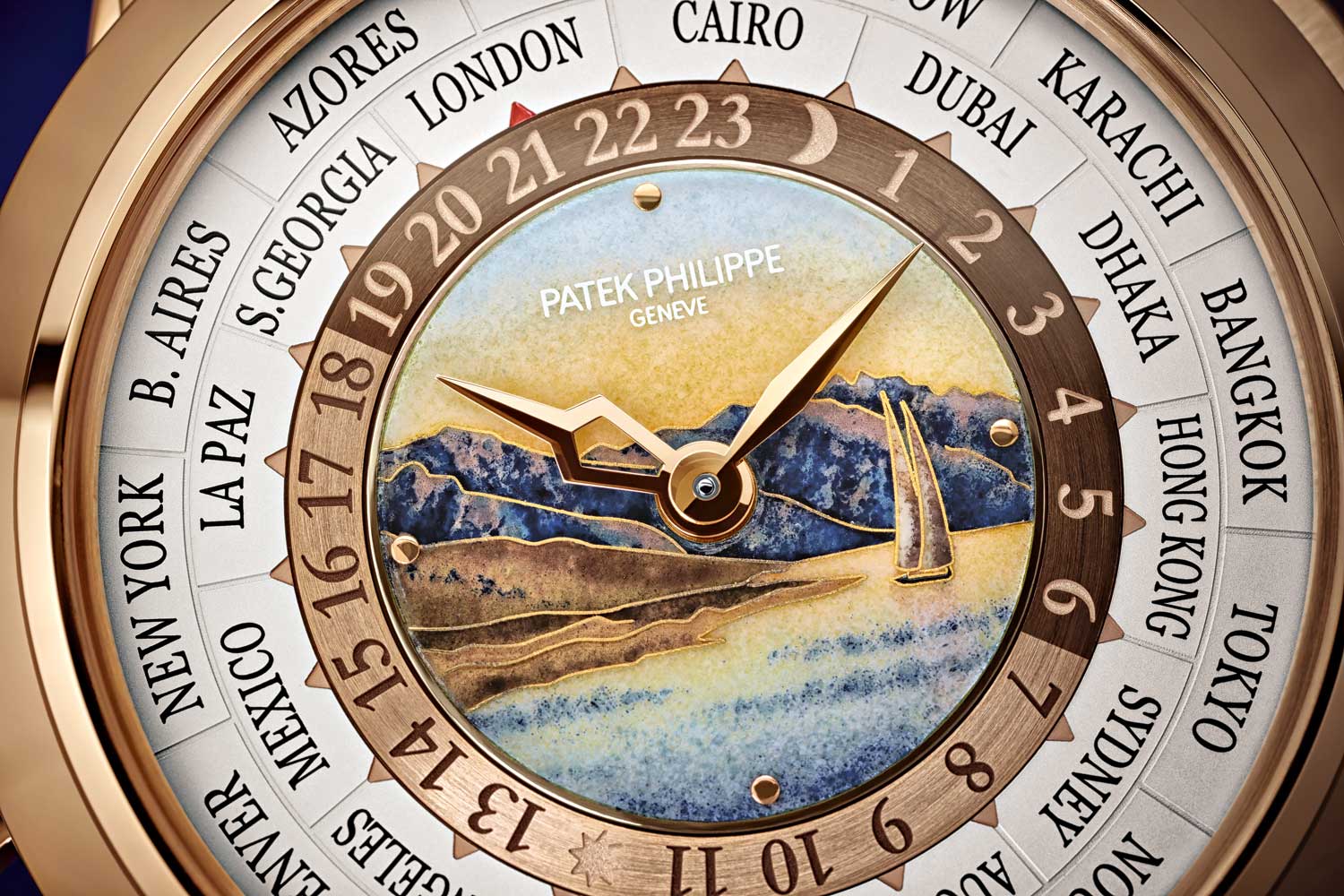
In 2018, Patek Philippe unveiled a regular production 5531R dedicated to depicting a scene of the Lavaux Vineyards, a UNESCO World Heritage Site on the shores of Lake Geneva.
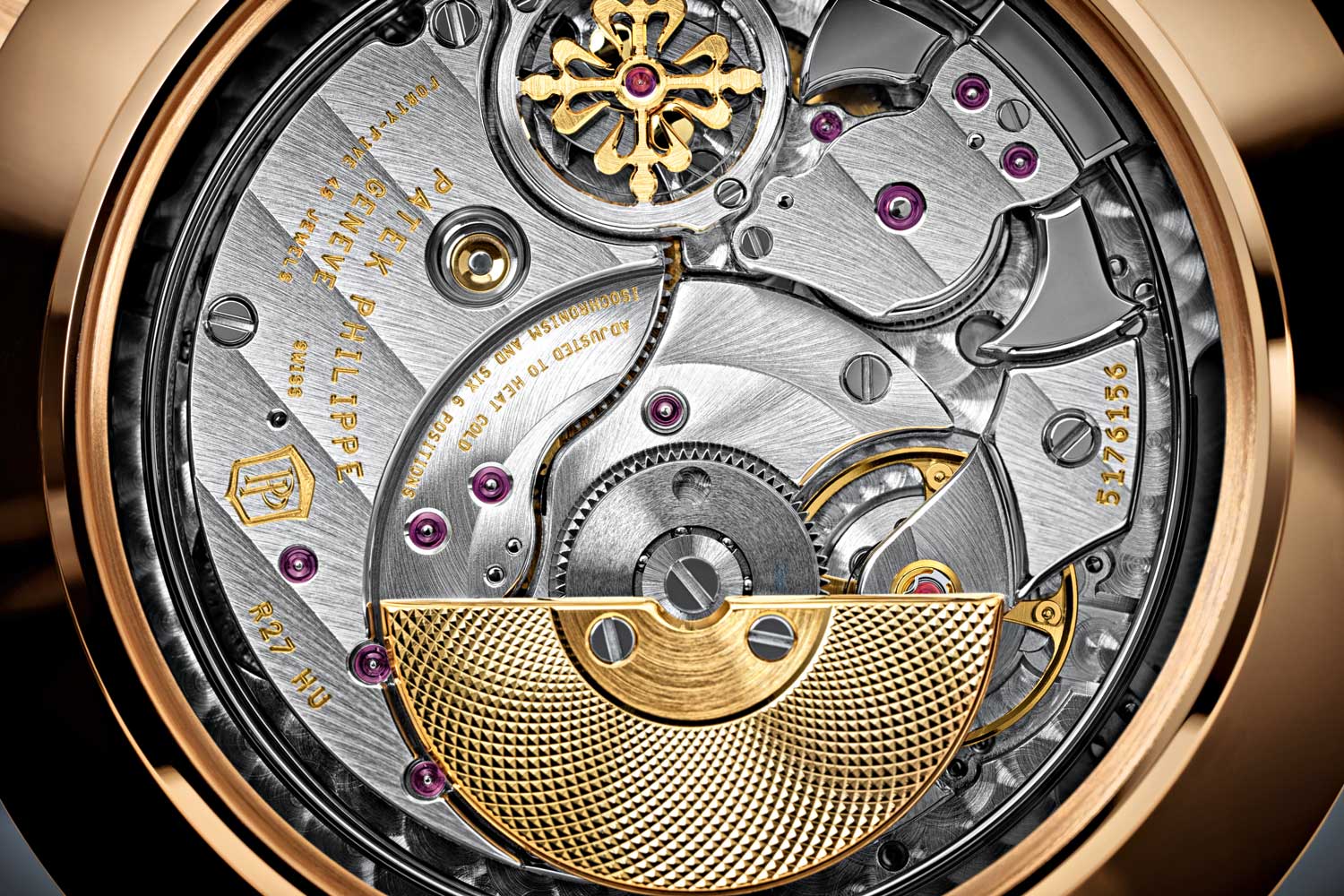
The caliber R 27 HU has a hour snail cam that is driven by the 24-hour ring. The minute repeater also features gongs that have been attached to the case band rather than the baseplate to better amplify the sound of the strikes.
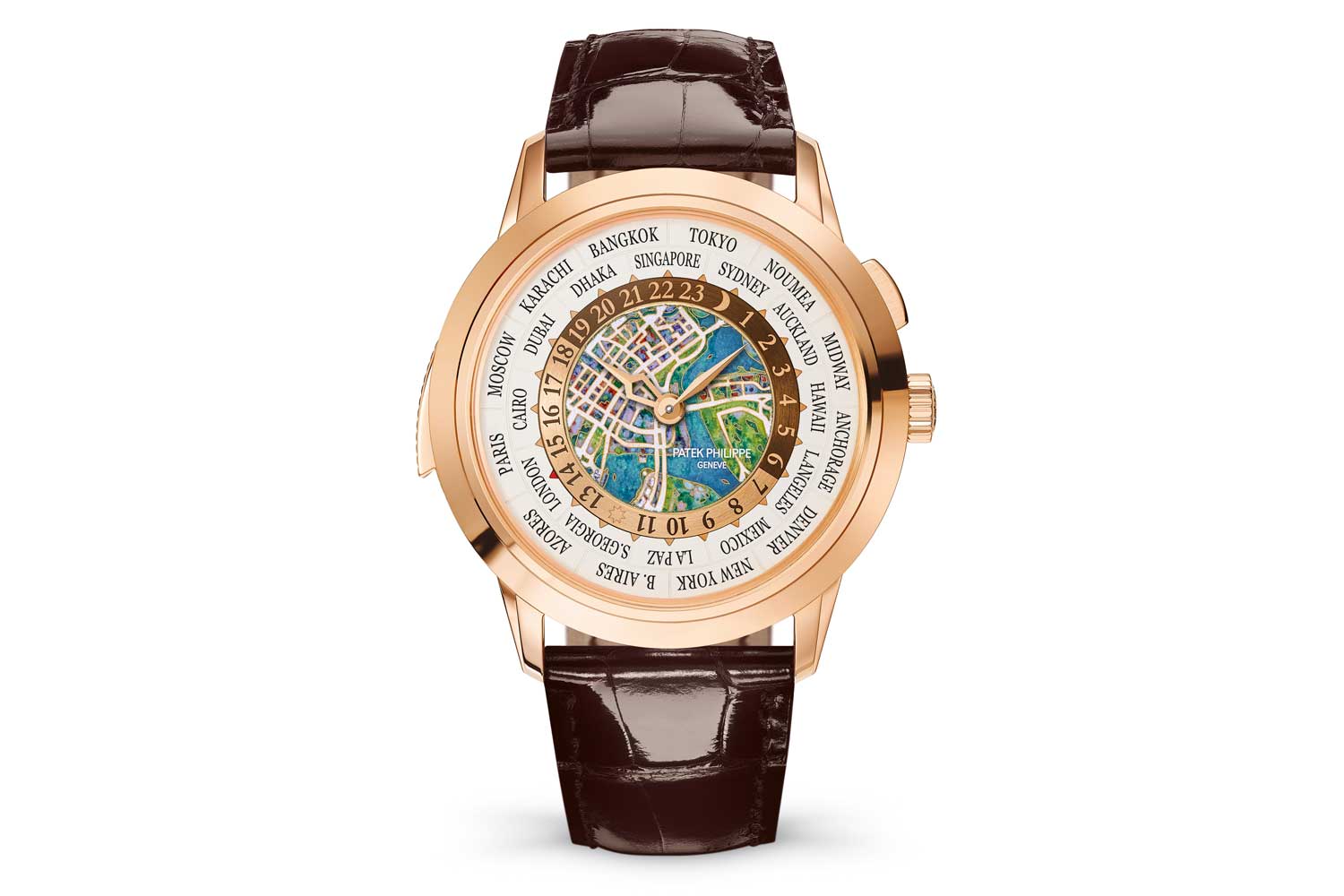
In 2019, Patek Philippe unveiled a stunning version of the 5531R with an aerial map of Singapore in cloisonné enamel to commemorate Patek’s Grand Exhibition in the city.
This concludes my sojourn into the beautiful transcendent objet d’art that is the Patek Philippe World Timer. The writing of this story has, in many ways, been cathartic as I’ve imagined myself in some of my favorite destinations, such as Positano’s Sirenuse feasting on spaghetti Ricci di Mare or Venice’s Gritti Palace ensconced on its terrace with a Spritz in hand or Vienna’s Sacher Hotel enjoying a glass of champagne and a sausage at the Bitzinger stand a few meters from its front door. And so, I want to thank you all for joining me in this journey through time and I want to wish you all the very best this summer. If you are able to travel, then I hope you do so in safety, with panache and, ideally, with a Patek Philippe World Timer on your wrist, which always serves to elevate one’s mood, deepen one’s genuflection and make joyful moments that added touch more unforgettable. Until we meet again, my friends. Here’s to the future and the time when we can all truly reconnect as one world.










